You are using an outdated browser. Please upgrade your browser to improve your experience.

Simon Pan is a Product Designer based in San Francisco.

Perfecting the Pickup
In 2012, tapping a button to Uber across the city felt magical. By the start of 2016, this magic receded to a slew of disparate features that made the experience slow and complex to use.
I was part of an ambitious project to redesign the Uber pickup experience for the fastest growing startup in history.
To comply with my non-disclosure agreement, I have omitted and obfuscated confidential information in this case study. All information in this case study is my own and does not necessarily reflect the views of Uber.
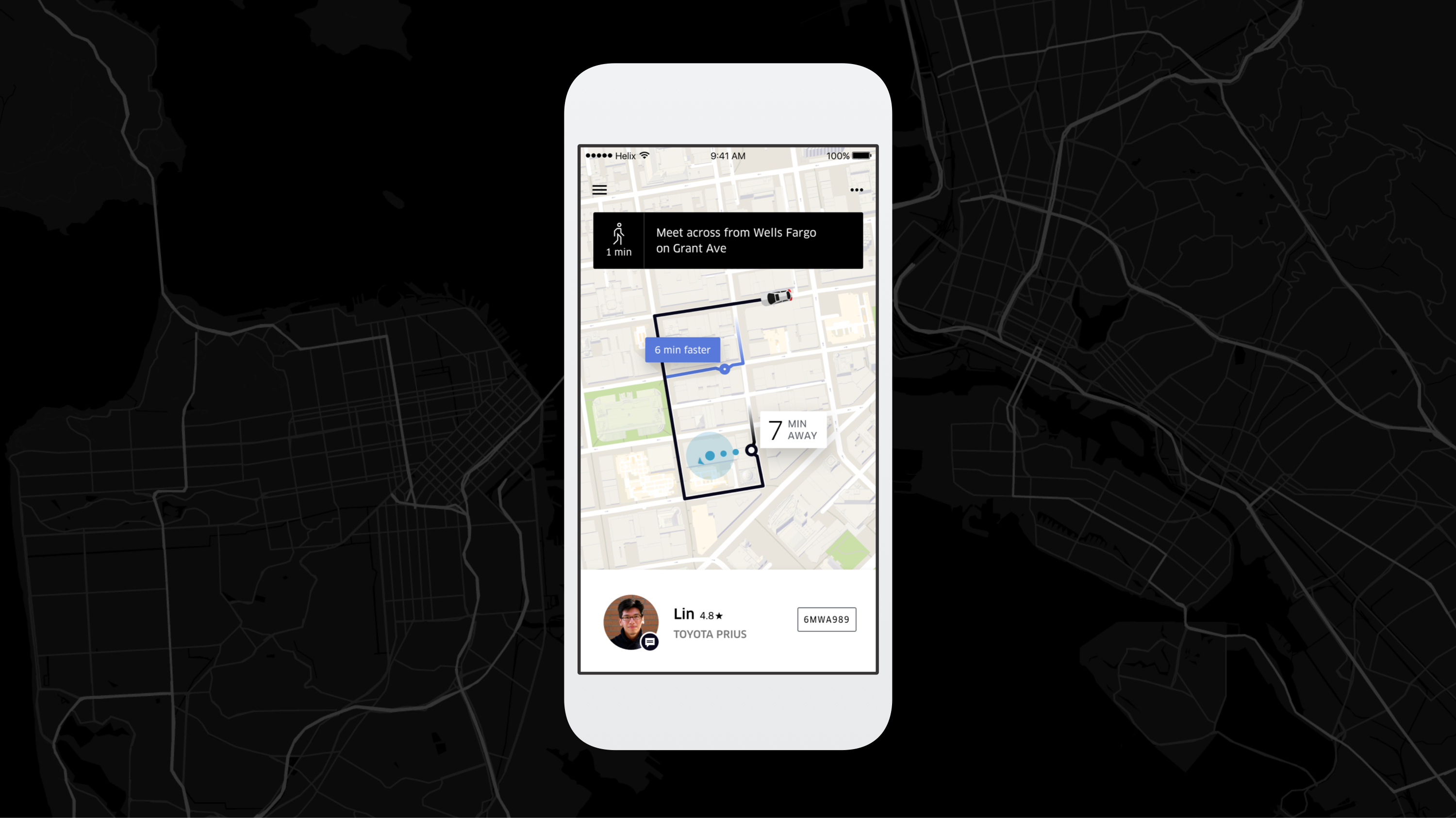
Design by accretion
In just five years since 2011, Uber transformed from a black car service for 100 friends in San Francisco to a global transportation network. By 2016, Uber delivered over 3 million rides a day in over 400 cities across 70 countries.
The Rider app — designed in 2012, struggled to scale alongside the hyper-growth of the company. Fundamental usability was challenged. Disparate features and experiments competed for focus. App reliability and performance issues increased exponentially.
The Rider app had become the org chart.
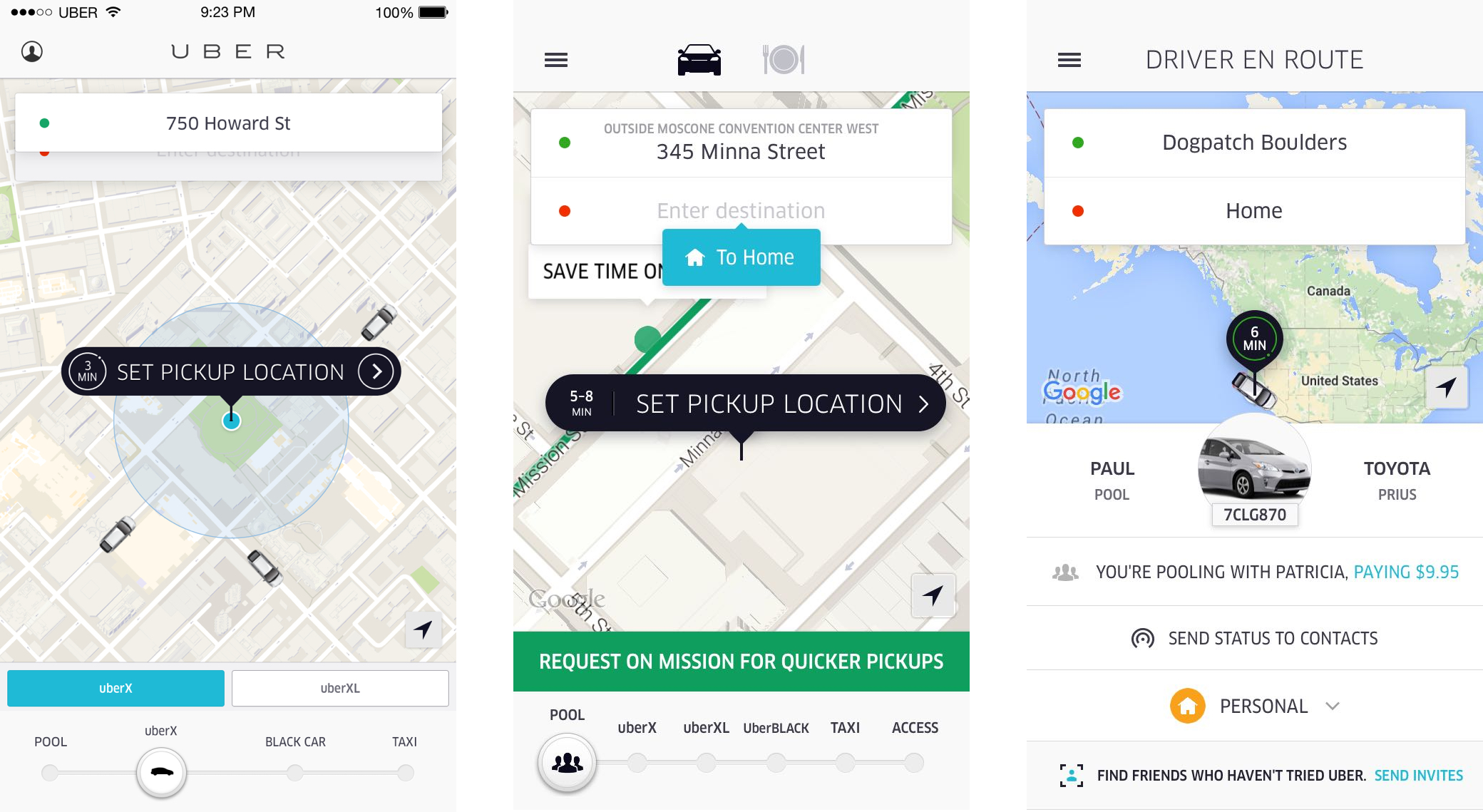
The Challenge
Recapture the magic in 10 months.
Our goal for the project was to recapture the magic of the early days of Uber. The original premise was simple: tap a button, get a ride. However, we weren't trying to revert to a simple past. Our ambitions were to create a strong foundation that embraced a rapidly evolving business and more diverse user base.
Our high level goals were to:
- Make it fast and easy to use for everyone, everywhere.
- Give riders more control over their time and money.
- Create a platform for innovation and deeper engagement.
I led the design of the pickup experience between October 2015 and June 2016 and collaborated with two other designers on the Home screen, Search and On Trip features.
In addition, I worked alongside a Researcher, Prototyper, Content Strategist and 2 Product Managers.
I stopped working on the project during the detailed visual design phase as the app started to be built.
The app launched globally on November 2nd, 2016.
Picking up the pieces
At the outset of the project we didn’t have a clear mission or specific goals for the pickup experience. Without pre-existing insights, I partnered with our researcher Shruti to explore how Riders were getting around.
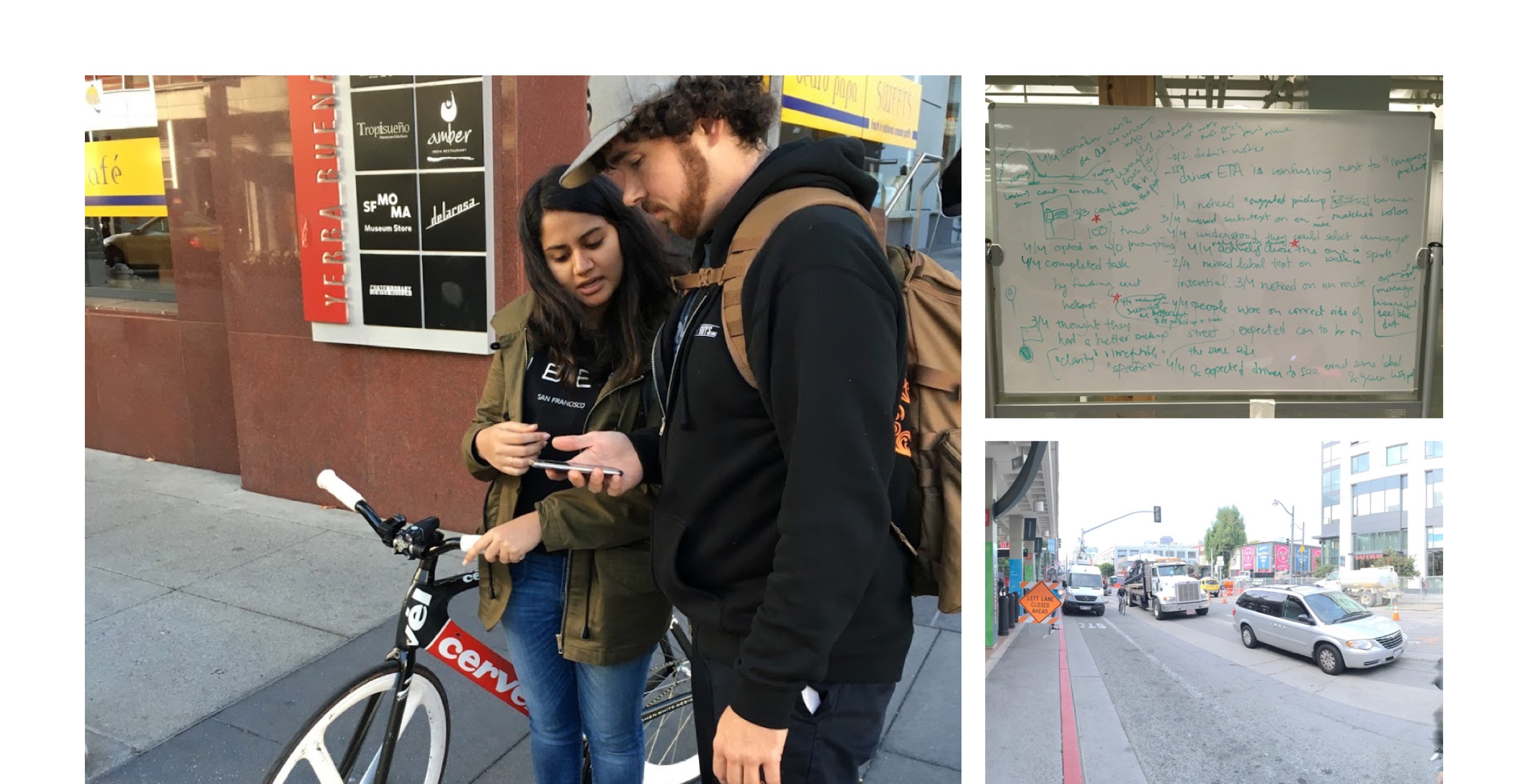
Early Insights from the Field
We tested the existing Uber app with 8 participants in the most problematic pickup areas in San Francisco. Our goals were to understand the challenges Riders and Drivers faced and the workarounds they employed.
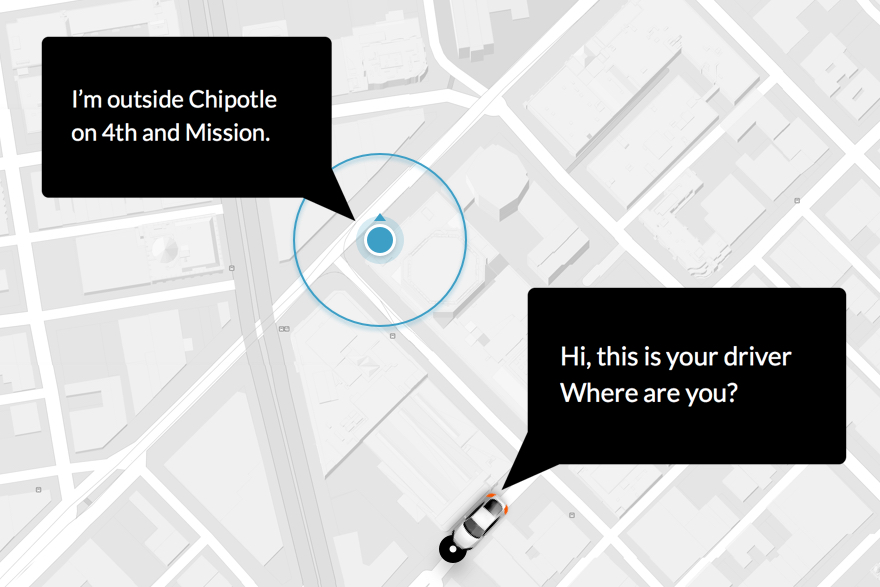
Frequent contact to confirm or coordinate location
Riders were annoyed when they were contacted by their Driver to confirm the location. Riders expected Uber to do the work and didn't feel the need to reiterate.
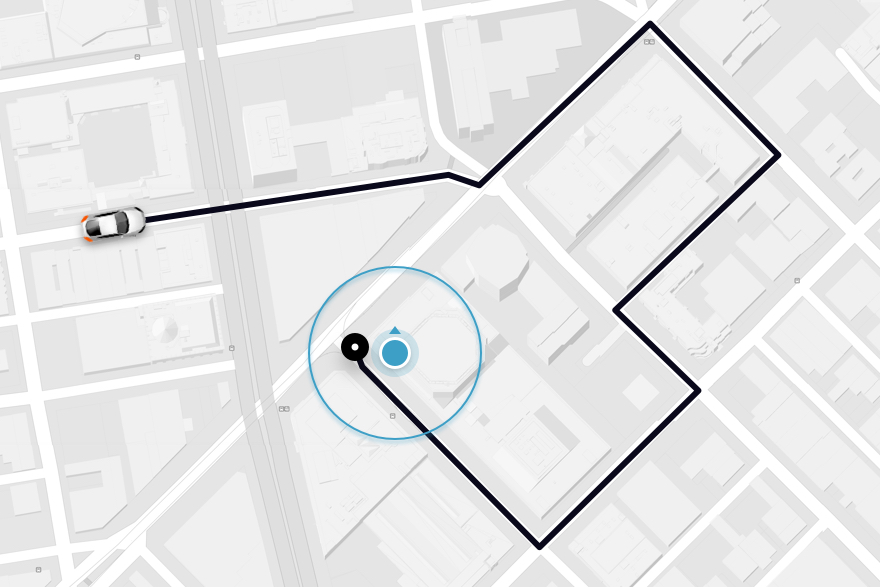
Suboptimal routes given to Driver
Riders were frustrated with the specific routes that the Driver used in getting to their pickup location. Riders expected Uber routing to be smarter.
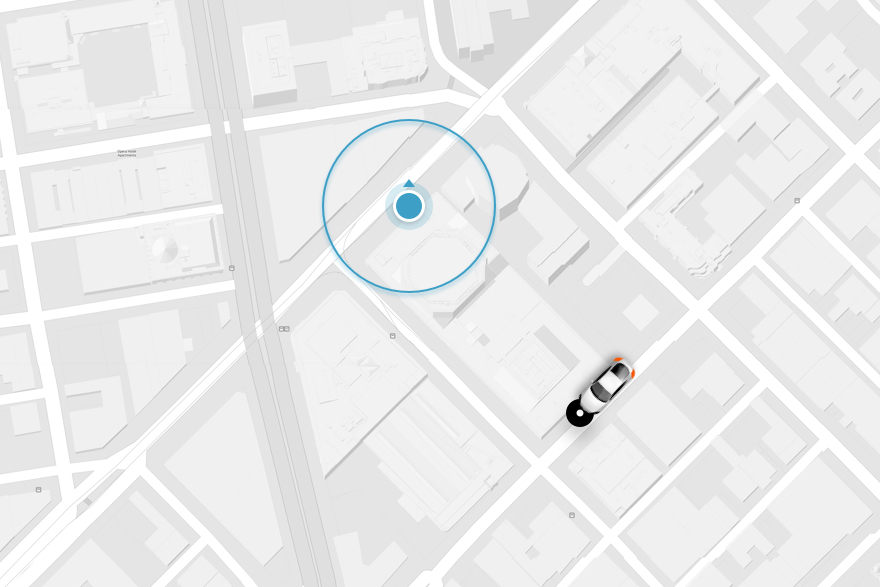
Unexpected arrival location
Often, Drivers did not arrive where the Rider expected. Riders would need to cross the road, backtrack on the block or negotiate an alternative pickup location.
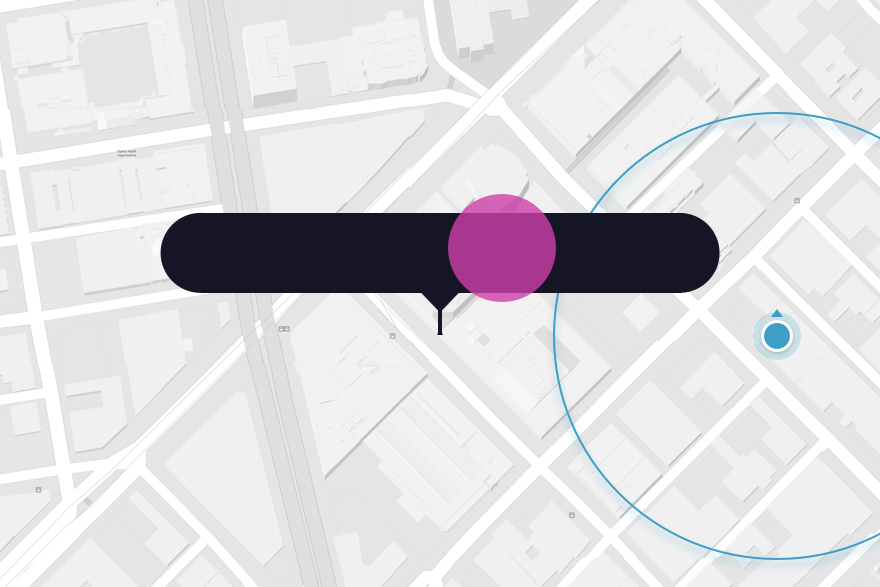
Pin setters and button mashers
Riders behave in two distinct ways. Those who explicitly set a pickup location (via search or pin) and those that expected the Driver to arrive at their current location.
The Discovery
Rider expectations changed over time.
I was surprised by the issues we found. They felt like privileged San Francisco annoyances, rather than major problems faced by our global audience. But after some thinking, it became clearer that Riders expected the experience to just work with minimal effort. As Uber became more integral to their lives, their expectations evolved.
“Curiosity revealed an opportunity to perfect the pickup experience for everyone, everywhere.”
If power users with great reception, powerful phones and tech literacy were having trouble in our most mature marketplace, how bad was the pickup experience in our immature marketplaces with more challenging technological and environmental contexts? Curiosity revealed an opportunity to perfect the pickup experience for everyone, everywhere. This was the beginnings of a working north star.
Deeper Insights
Working backwards from perfect.
Before I could jump into designing, it was important to define success and understand the health of the pickup experience at scale.
Prior to the redesign, contact rate i.e the rate at which a phone call occurs during the pickup was the only proxy we had used to measure pickup quality.
I unpacked the concept of the perfect pickup and modeled for the dimensions of time, space and anxiety.
I partnered with our data scientist and used this framework to investigate the pickup health around the world.

Most pickups require additional physical or coordination effort
Digging into the data revealed some big insights into the pickup experience. Almost all trips involved some extra coordination effort such as a phone call to clarify the location and additional physical effort such as walking somewhere else to meet the driver, or the driver re-circling the block. This data showed that the experience was hardly the door-to-door magic Uber had been optimized for.
“In a city as busy as San Francisco, over $1 million was wasted per week because of problematic pickups.”
The time and energy spent recovering during problematic pickup situations was having a material impact on the business bottom line. Waiting time translates directly into network under-utilization and every phone call costs to anonymize.
In a city like San Francisco, over $1 million was wasted per week because of problematic pickups. Cities like Guangzhou and New Delhi were much worse.
I have intentionally omitted confidential data here.
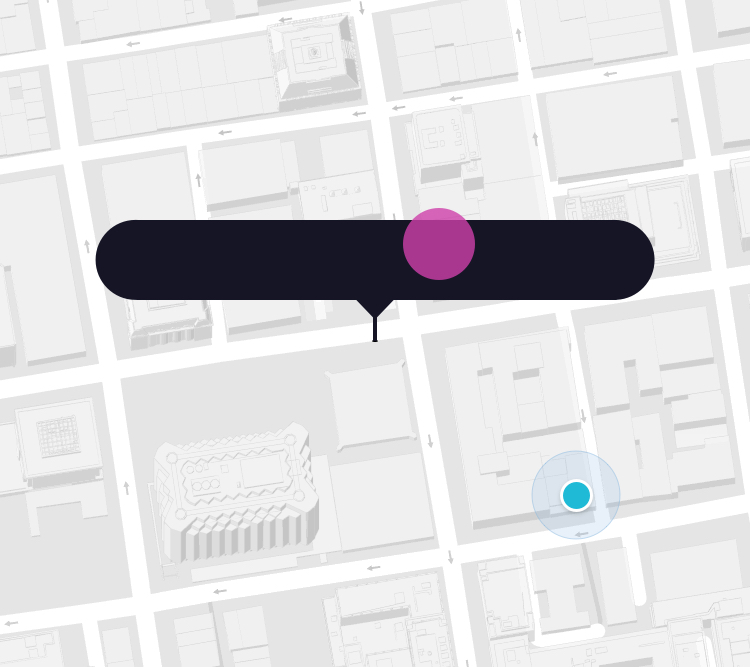
No pickup specified
A large majority of Riders don’t explicitly set their pickup location. They rely on the default device location of the app. Half of all sessions are at least 100m inaccurate.
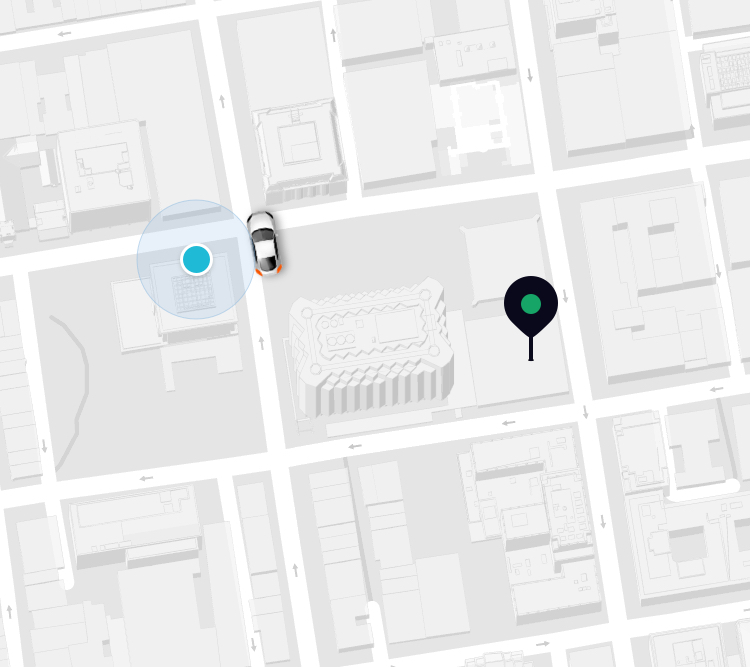
Requested location is often not the pickup
Only a small percentage of trips start within 20m of requested location. Where the Driver is sent and where the Rider is actually picked up is mismatched.
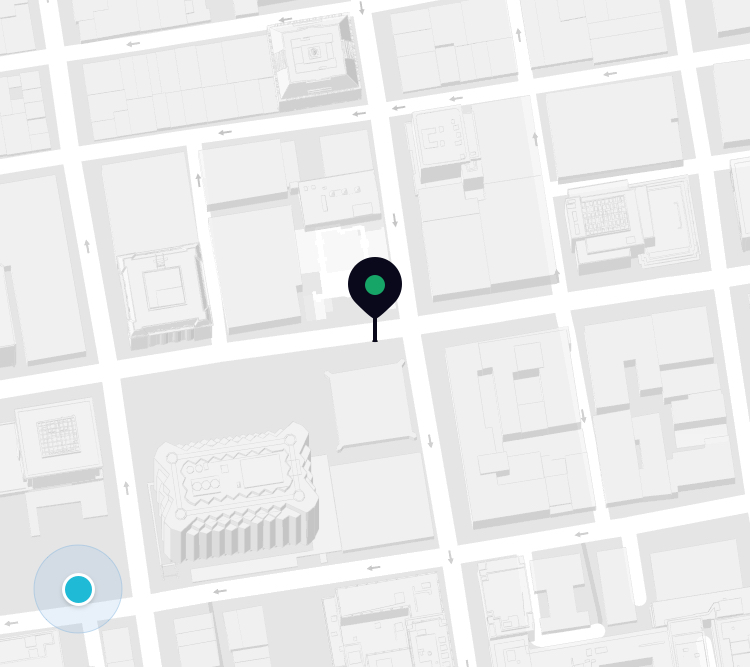
GPS updates ignored
A large number of sessions have an improved GPS accuracy by the time of request. Many of these sessions improve over 1000m in accuracy.
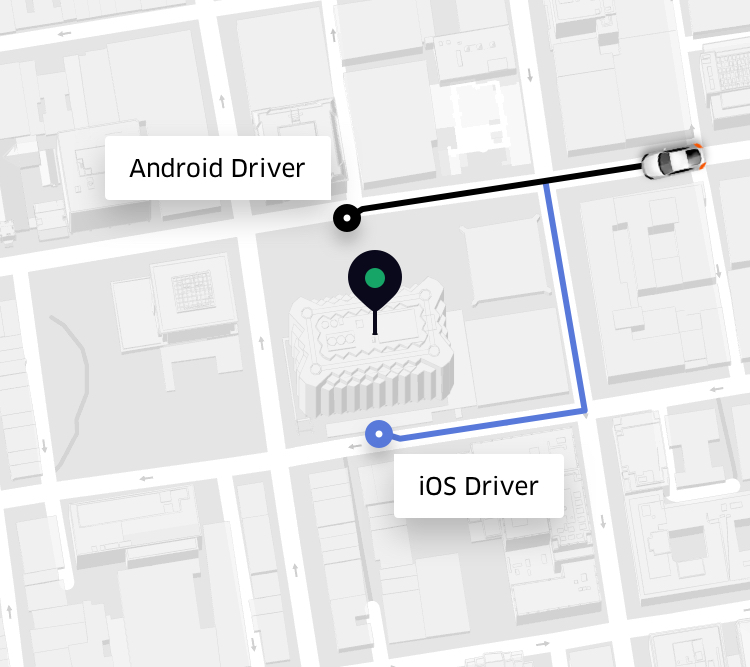
Some pickups just don’t make sense
Many trips are requested from within buildings. This can result in different pickup locations, depending on the operating system of the Driver.
Reframing the Problem
Poorly formed rendezvous plans cause downstream pickup problems.
The Rider app exacerbates the formation of problematic pickup plans between Riders and Drivers. Problematic pickup plans consist of inaccurate locations, ambiguous information and inefficient routes which causes confusion. Ancillary communication and additional physical effort is required from Riders and Drivers to recover, which leads to frustration and wasted time.
“...how might we help Riders and Drivers form a better pickup plan?”
This begged the question, how might we help Riders and Drivers form a better pickup plan? Our proposal was Rendezvous , a pickup plan created on behalf of Riders and Drivers.
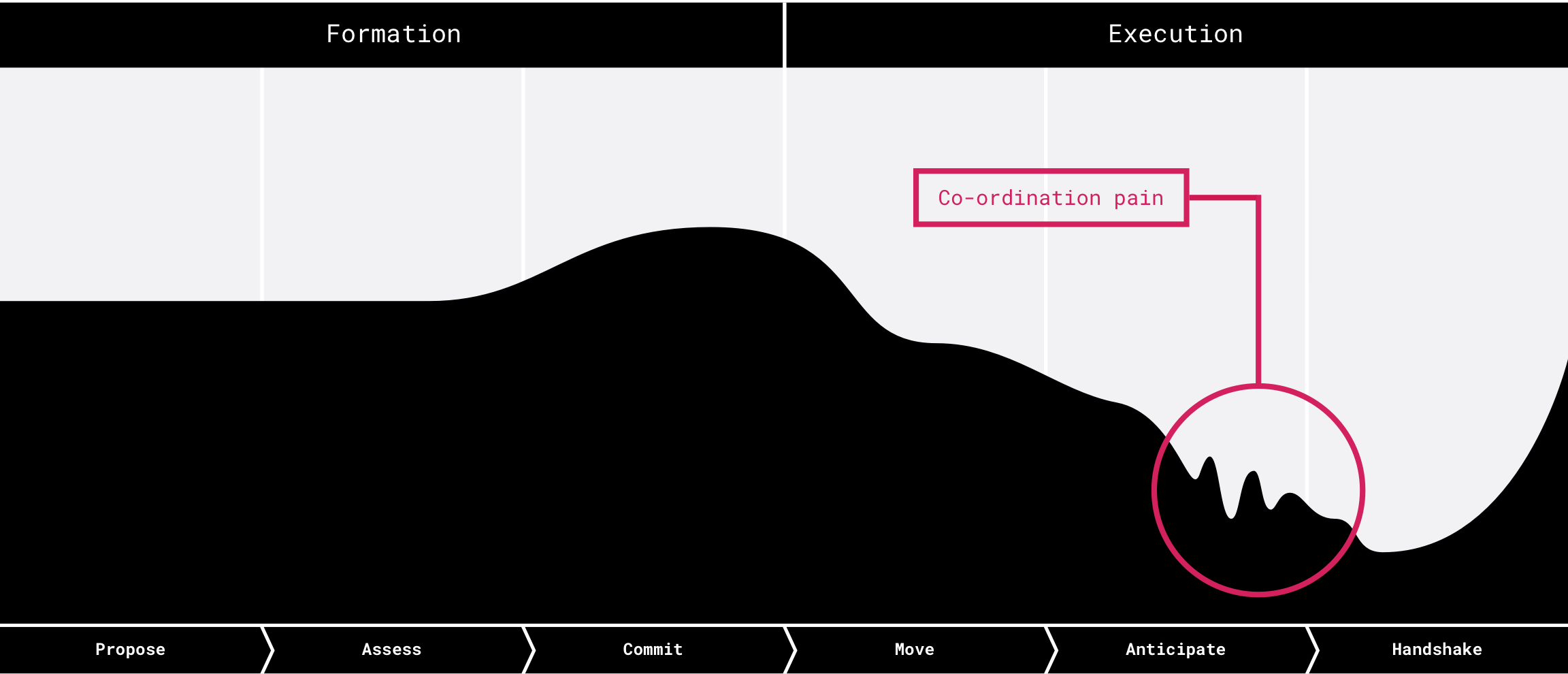
The Pickup Redesign
Introducing rendezvous.
In an age where everything is demanding your time, Uber gives your time back by making pickups fast, effortless and calm. Uber makes sensible decisions for you erring on the side of protection— informing you in ways that are understandable and actionable.
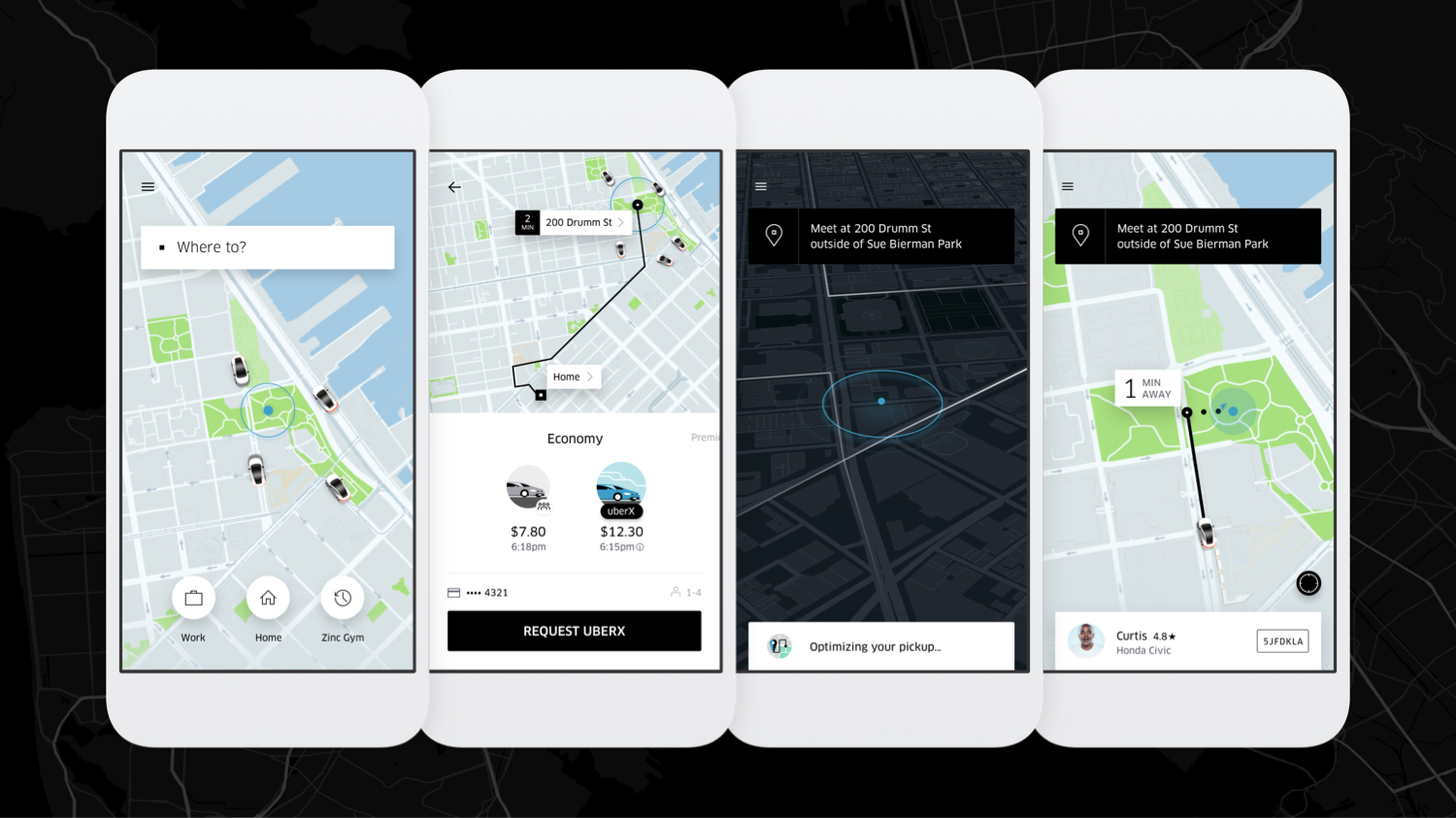
Just request and we do the rest
Uber finds you the optimal meeting place based on who you are, where you are and where you’re going. Uber saves you time without you needing to select a pickup.
People-friendly walking instructions help you better understand and identify your meeting spot. No more nonsensical addresses.
Always Moving forward and faster
Sometimes there’s a faster way, that requires walking. Uber understands these situations and gives you an option to save time.
We've got your back
When Uber isn’t sure about your current location, you’ll be prompted to help. Over time Uber will learn more about you and your city, so your Ride will always start in the right place.
Flexibility and the final say
Sometimes your situation requires precise control over where to get picked up. Uber gives you complete control when you need it.
How we got there
Perfect the pickup for everyone, everywhere.
Three primary questions informed my design strategy:
- How do you design for everyone, everywhere?
- What contexts need to be considered?
- What’s the perfect pickup?
Early on, it was important to understand the different factors that may influence the Rider and Driver experience. I mapped all the possible concepts and translated this into the spectrums and situations framework.
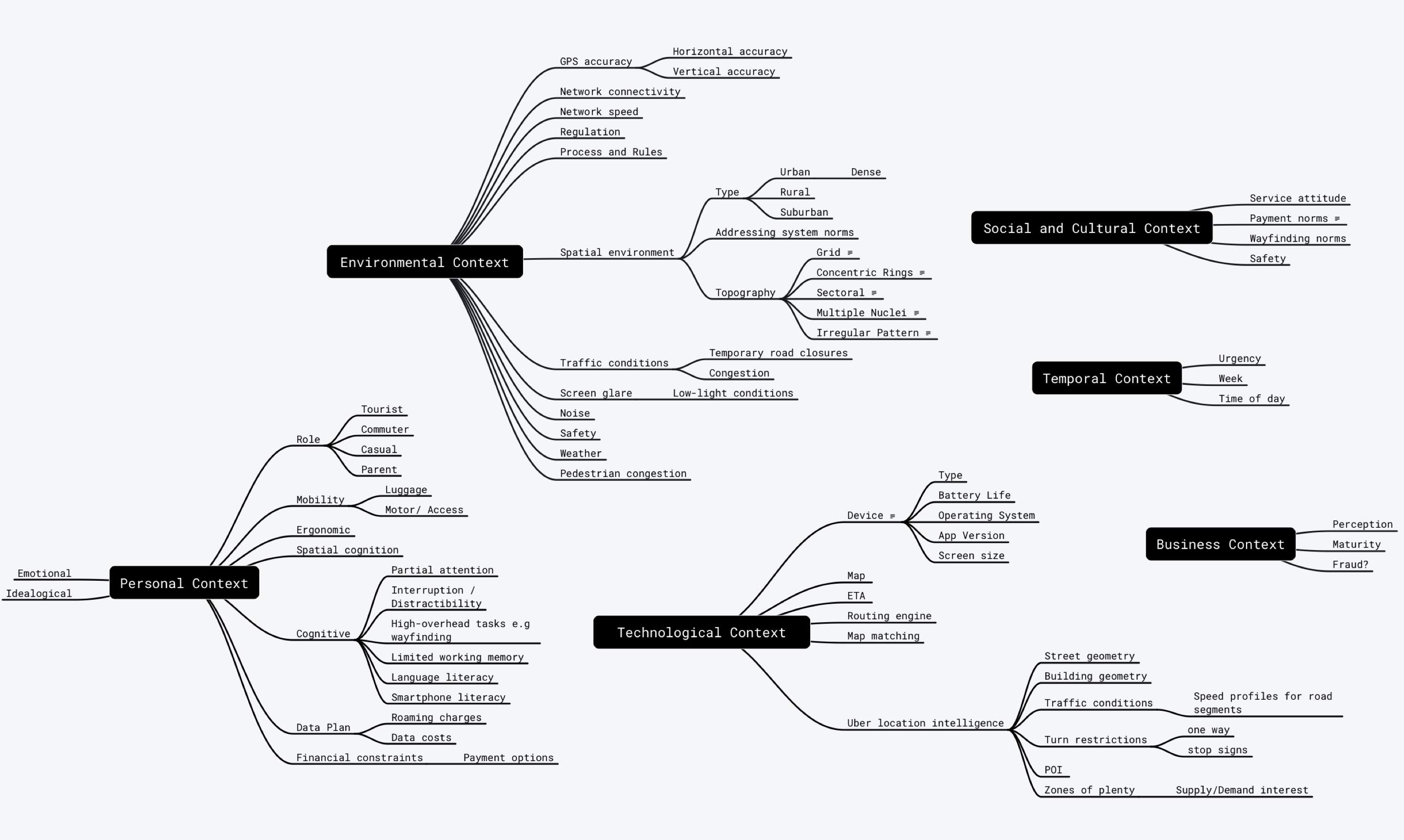
A more inclusive design
The existing Uber app was poorly designed for users who weren’t reflections of people that work in the San Francisco Uber office. To move beyond the existing biases, I tried to educate the team with an approach to designing for everyone, everywhere.
The spectrums attempt to highlight the range of temporary or permanent challenges to consider when a person is interacting with Uber.
The situations attempt to highlight situational challenges that everyone experiences. A situation is a temporary context that affects the way any person interacts with Uber for a short time.
“Historically, Uber poorly empathised for users who weren’t reflections of people that work in the SF office.”
This framing was used to destroy any stereotypes that the team had about people and marketplaces. The goal was to create design solutions that scale and extend to any combination of these contexts from the outset.
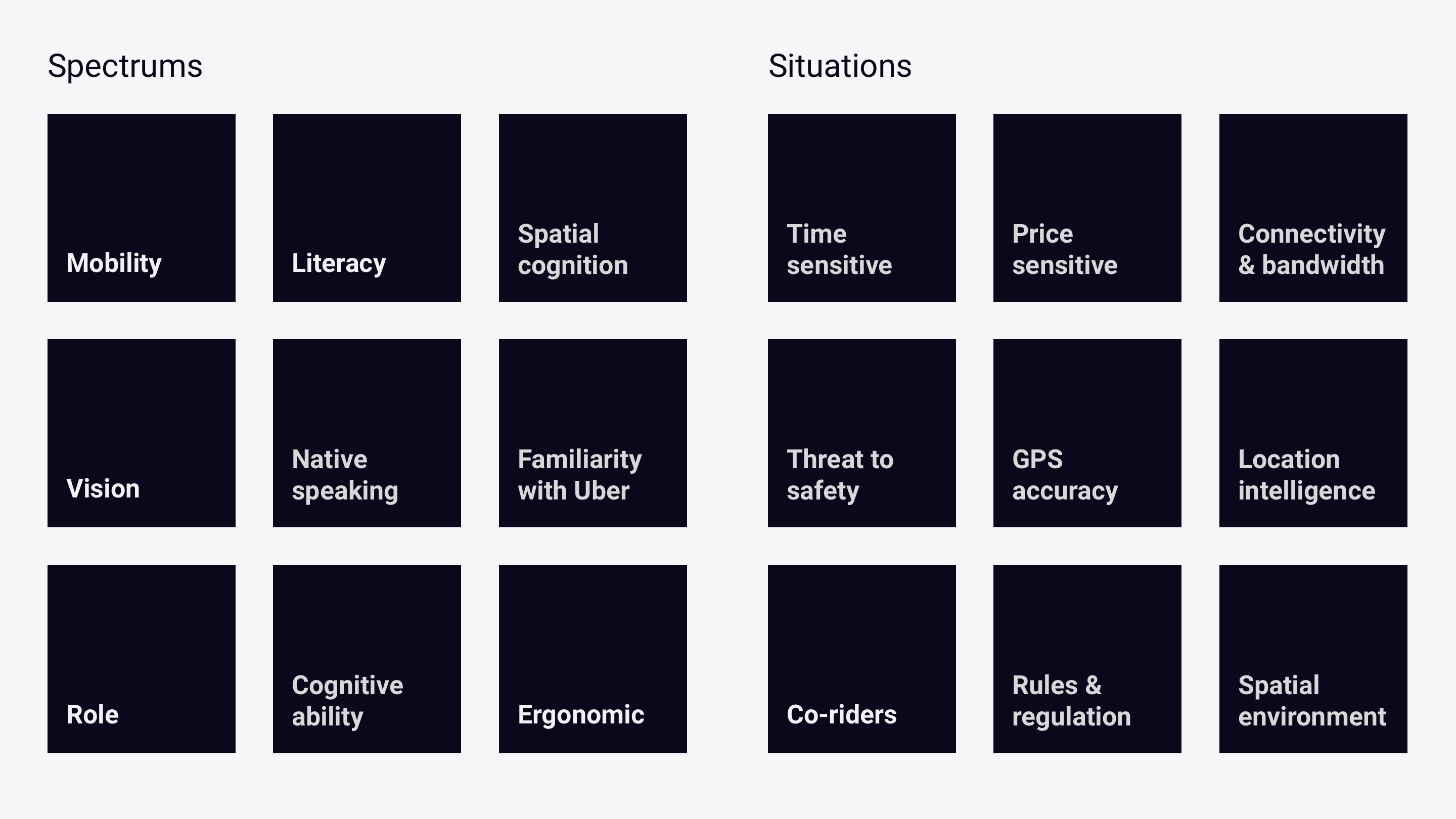
Degradation to adaptation
I created this additional hierarchy of needs framework to reframe our conversations about quality and features.
Instead of starting with a San Francisco-centric design and degrading for what the team deemed as the other challenging marketplaces we needed to start with a minimum bar of quality to enable rides for people in all contexts.
The framework helped shift from unproductive questions like “How is this going to degrade for Nairobi?” to “How might we enable a destination first design for cities without a traditional addressing system?”
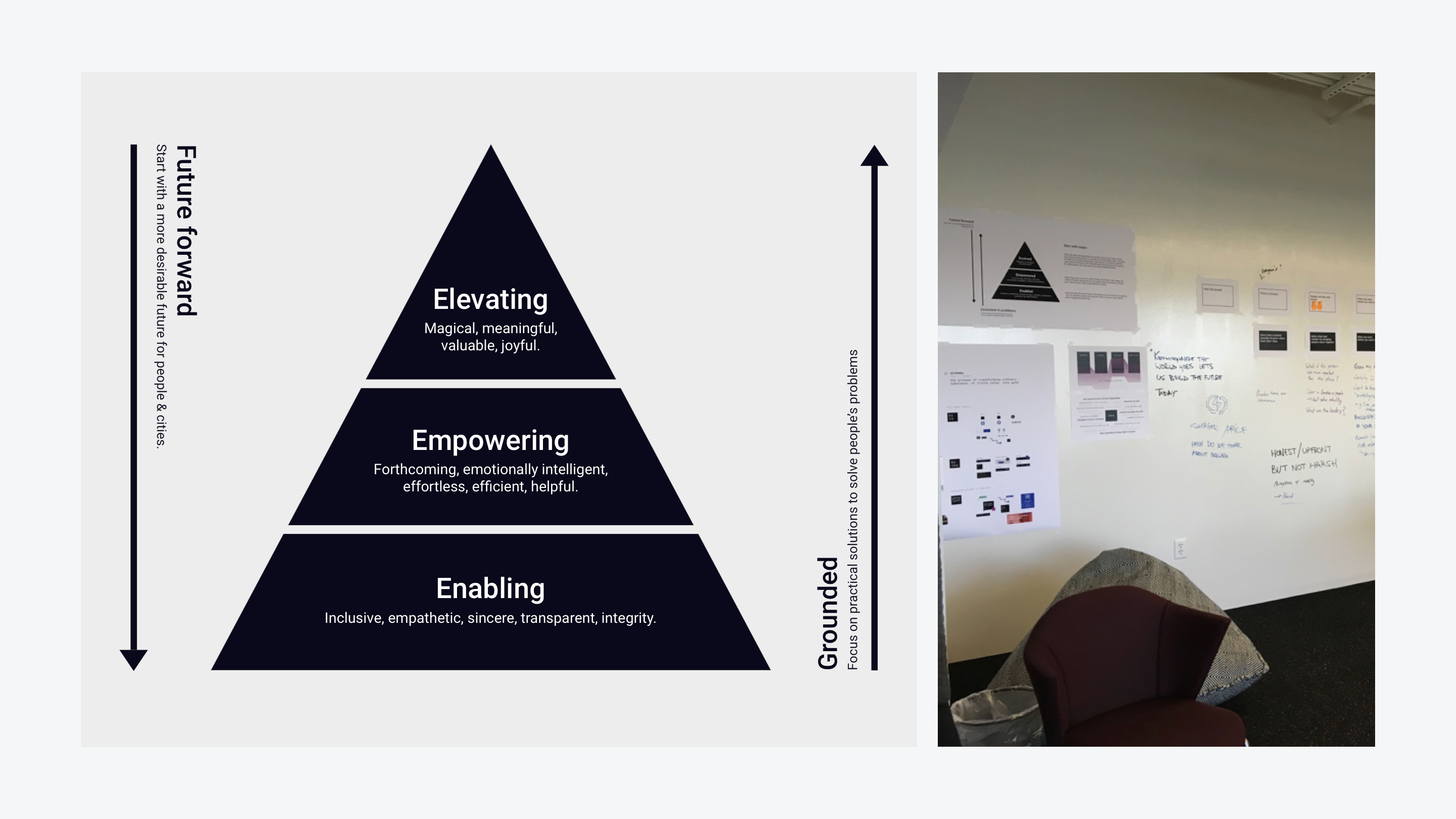
Working Backwards from Perfect
I reversed the polarity of the imperfect pickup to jumpstart creativity. Four key design challenges emerged:
- How might we better understand where the Rider is?
- How might we form a pickup plan that minimizes effort and saves time?
- How might we remove the need for a map entirely?
- How might we better adapt to the dynamic nature of cities and human mistakes?
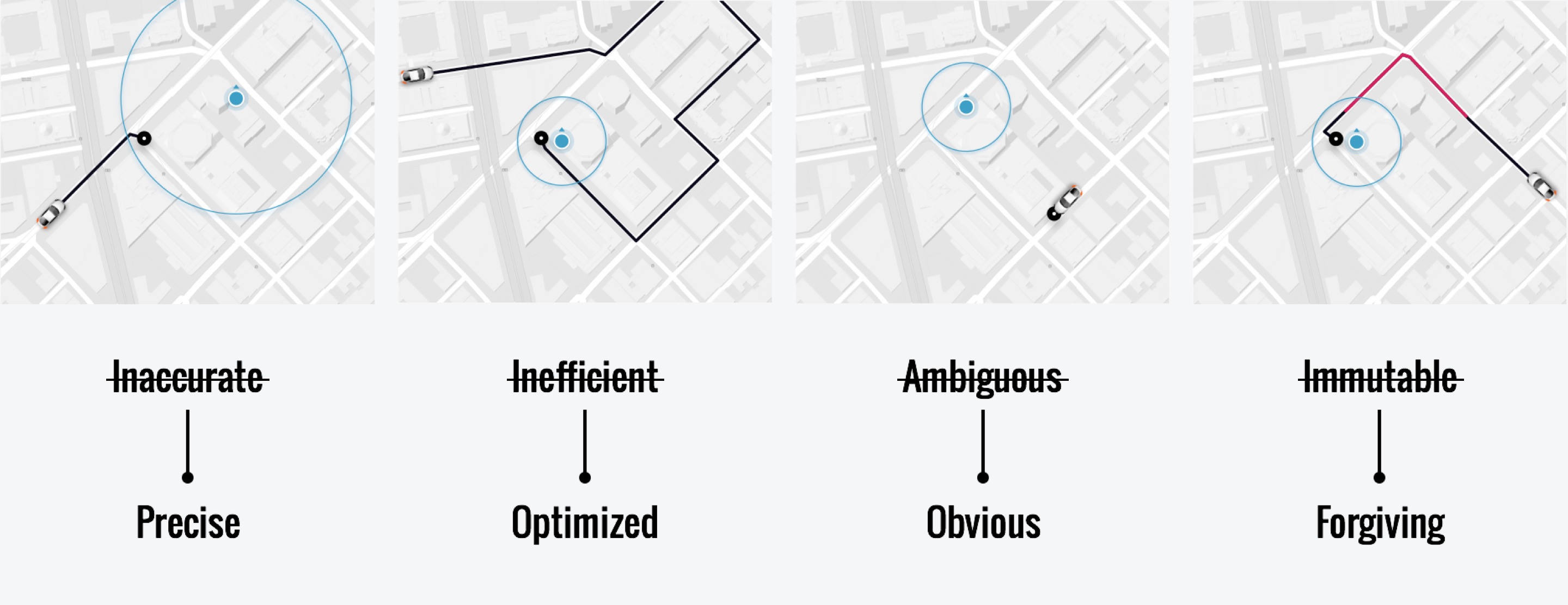
From Inaccurate to Precise
Better understanding where the rider is.
A major reason problematic pickups occurred were because getting an Uber relied heavily on the Rider explicitly setting a precise pickup location to meet. Not doing so, causes the Driver to be sent to the default device location, which half the time is wildly inaccurate.
Our data revealed that:
- 50% of Riders globally don't explicitly set a pickup location.
- Half of all sessions are at least 100m inaccurate.
- 45% of sessions have an improved GPS accuracy by the time of request. We do nothing with this information.
Based on these insights, I proposed two key feature ideas Destination First and Live Locations to help better understand where the Rider is. Central to the features, were these key ideas:
- Stop relying on the Rider setting their pickup location. Do the heavy lifting on behalf of the Rider.
- Carve out more time for the GPS to warm up.
- Capitalize on GPS updates for as long as possible.
Starting at the end
In order to optimize the pickup experience, there was only one thing we needed to know—the Rider's destination.
Without much debate, the team agreed that asking “Where to?” upon app launch matched the mental model of the Rider. It was also useful in unlocking more advantages, such as providing the user with upfront fares, estimated arrival times and allowing more time for the device GPS to warm up to aid the pickup experience.
To compensate for the new speed bump, I designed the accelerators feature—a predictive set of shortcuts that gives the Rider 1-tap access to their most likely destinations at any given time.
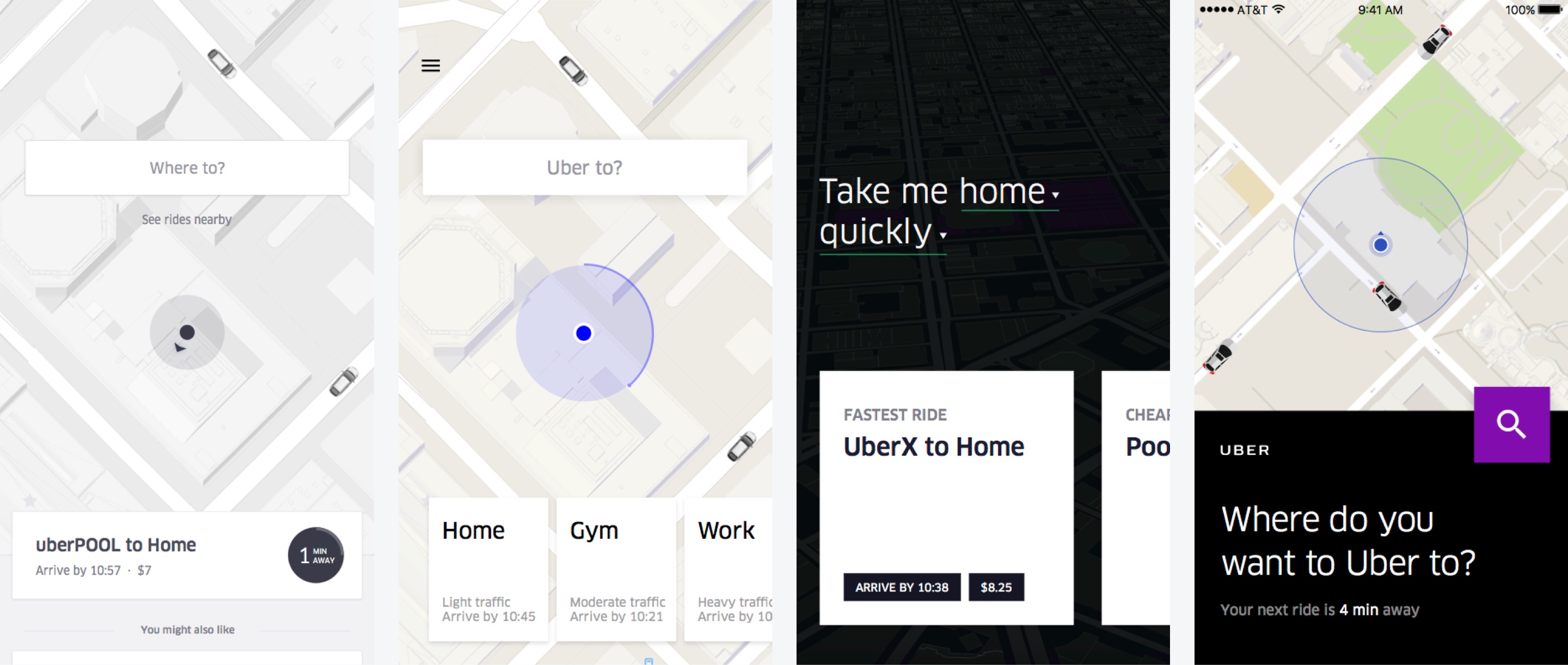
De-risking the new flow
We feared that the new destination first experience would cause issues because it was more friction and a fundamentally different flow.
In order to de-risk some of our assumptions, we travelled to Bangalore, Delhi, Ahmedabad, Guangzhou and Shanghai to test an early prototype of the designs.
To our surprise, not a single participant noticed the different sequencing of the flow or had trouble with it. The destination accelerators resonated well with participants, confirming our intuition around designing for speed.
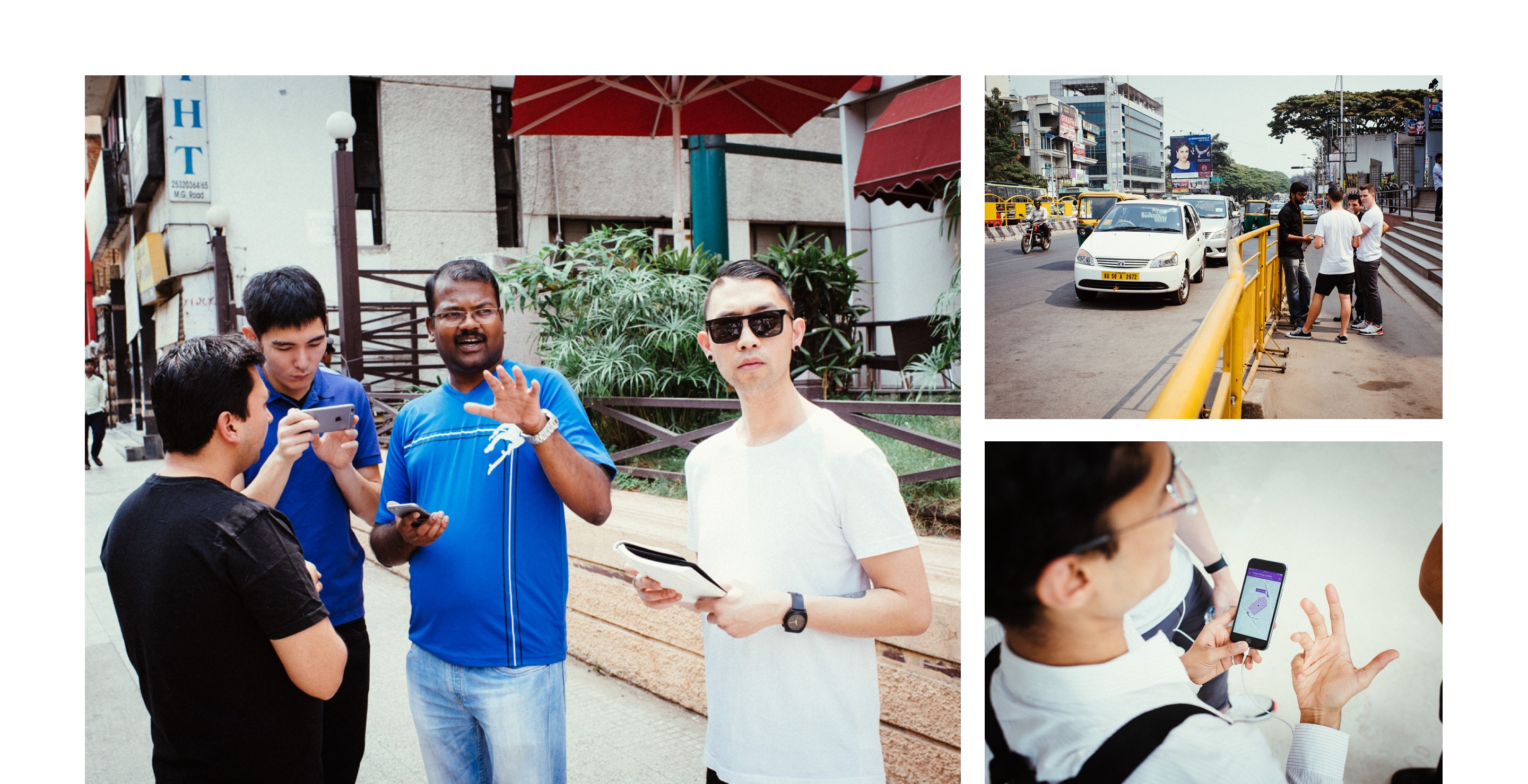
Live Locations
Live locations feature was born by questioning whether we needed to default to any pickup location at all.
Rather than lock on the Rider's location upon app launch (which roughly 12-15 seconds for an accurate fix), the app continues sensing, asynchronously updating as the GPS updates. The most accurate GPS location is obtained at the last possible moment—at the time of request.
This required a big design shift for the posture of the experience. The challenge was shifting from set your pickup to where and how do you want to go?
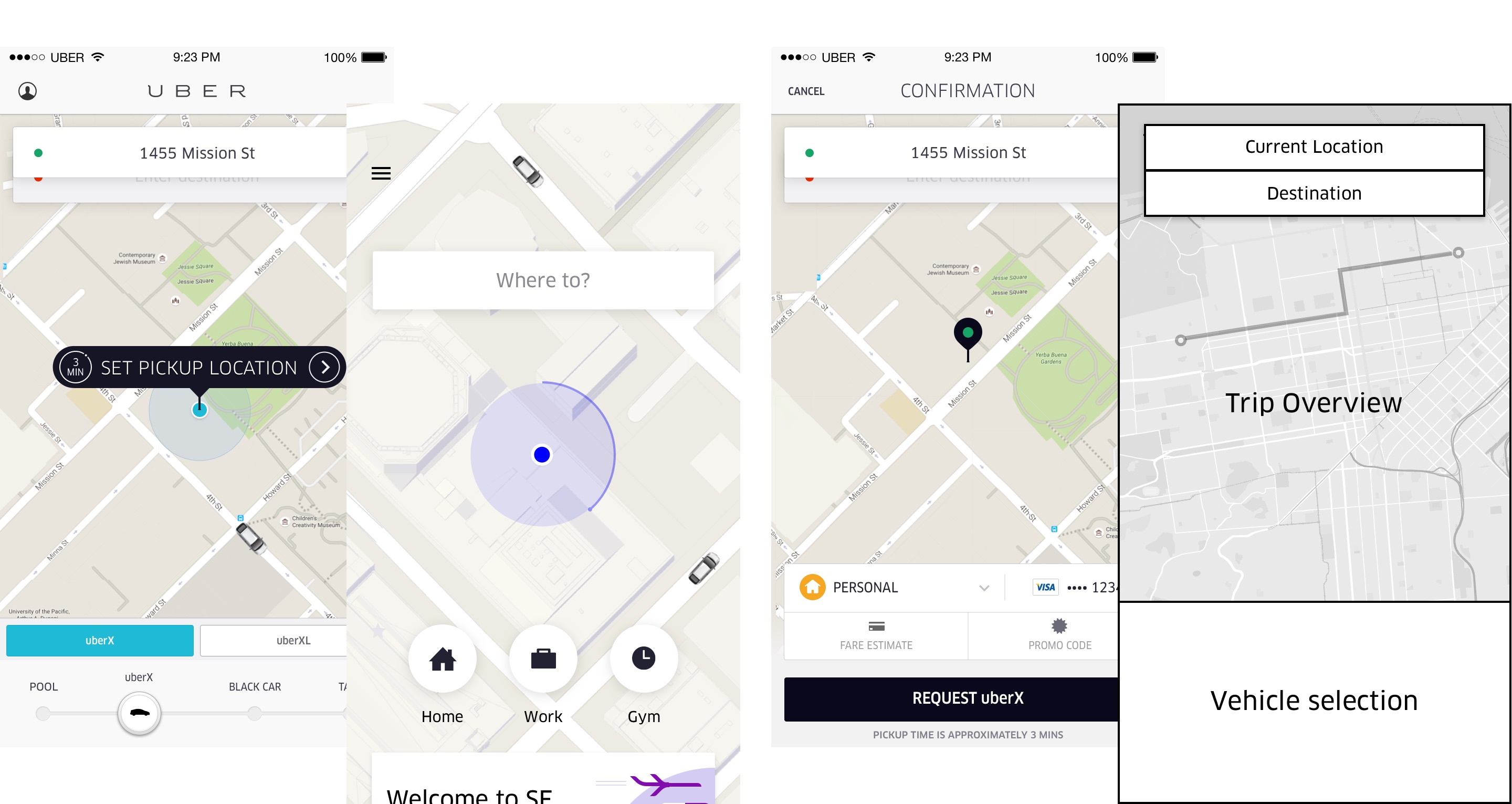
Inspiring confidence on the confirmation screen
If the new experience was to do the heavy lifting on behalf of the Rider, the confirmation screen needed to inspire confidence and show how the pickup experience was being taken care of.
A key design challenge was to consider how much emphasis should be given to this always sensing state.
The riskier design decisions I made was to obfuscate the pickup location entirely during the core app flow. The idea was to present the overview of the trip to persuade Riders to focus on selecting how they wanted to get there, rather on where to get picked up— since Uber would take care of that.
This meant the UI needed to inspire confidence for the majority, and those who wanted to assert control needed to know how to discover the feature. It also meant that when we couldn’t optimize on the users behalf, we needed to occasionally ask the user for help.
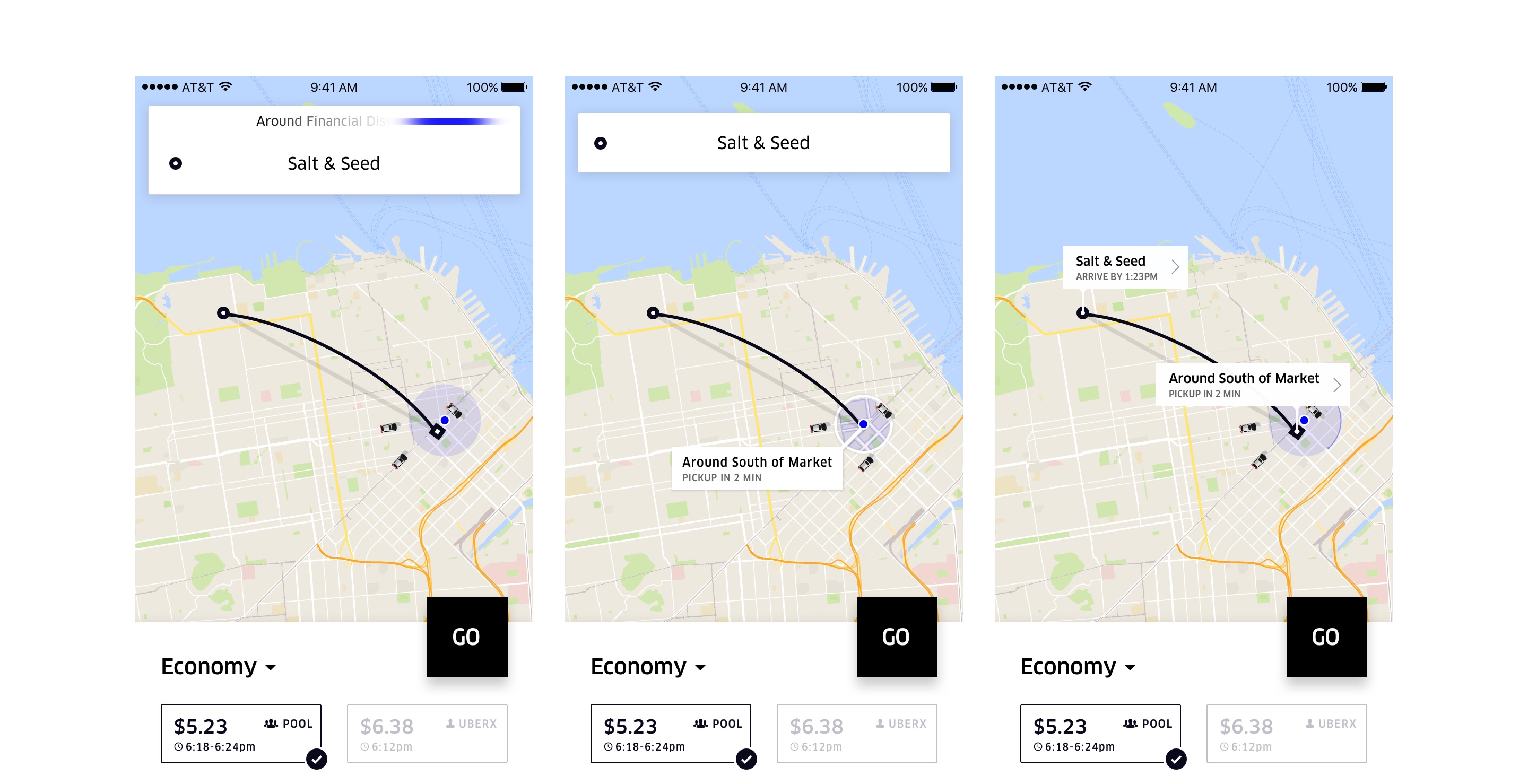
Over-designing for anxiety
The goal of these designs were to reveal the accuracy of the GPS location as it resolved. I assumed that transparency was the key to building Rider trust. After testing many iterations of this experience, we repeatedly observed that:
- Ambiguity and resolution concepts were mostly missed.
- Riders assumed that the app knew their current location and didn’t actively look to confirm.
Riders were not anxious or thinking about the GPS accuracy at all. My anxiety, further compounded by stakeholder feedback was being reflected in my designs. The GPS dot and location tooltips were loaded with this anxiety and I felt like I had exhausted all possibilities.
After the third round of poor testing, I killed the idea in favor of a more simplified and balanced interface that reflected what Riders were focussed on.
From Inefficient to Optimized / Immutable to Fluid
Giving riders and drivers back their time.
Knowing the Rider’s destination and the most accurate understanding of their location allowed us to do the heavy lifting and select the most optimal pickup location. The system needed to be smart enough to just work when it could, and humble enough to intervene when it couldn't. This system called adaptation was by far the most complex problem of this project.
Foundational to the adaptation framework were these concepts:
- A confidence score would determine whether to choose a spot on behalf of the user, or to disambiguate their location. How we calculated this confidence score would be an ongoing project to improve.
- We needed to respect Rider control and agency. Design patterns needed to allow for opting in, opting out or taking complete control.
- The system needed to be flexible enough to learn about Rider willingness. Don't design based on the assumption we will know the right answer.
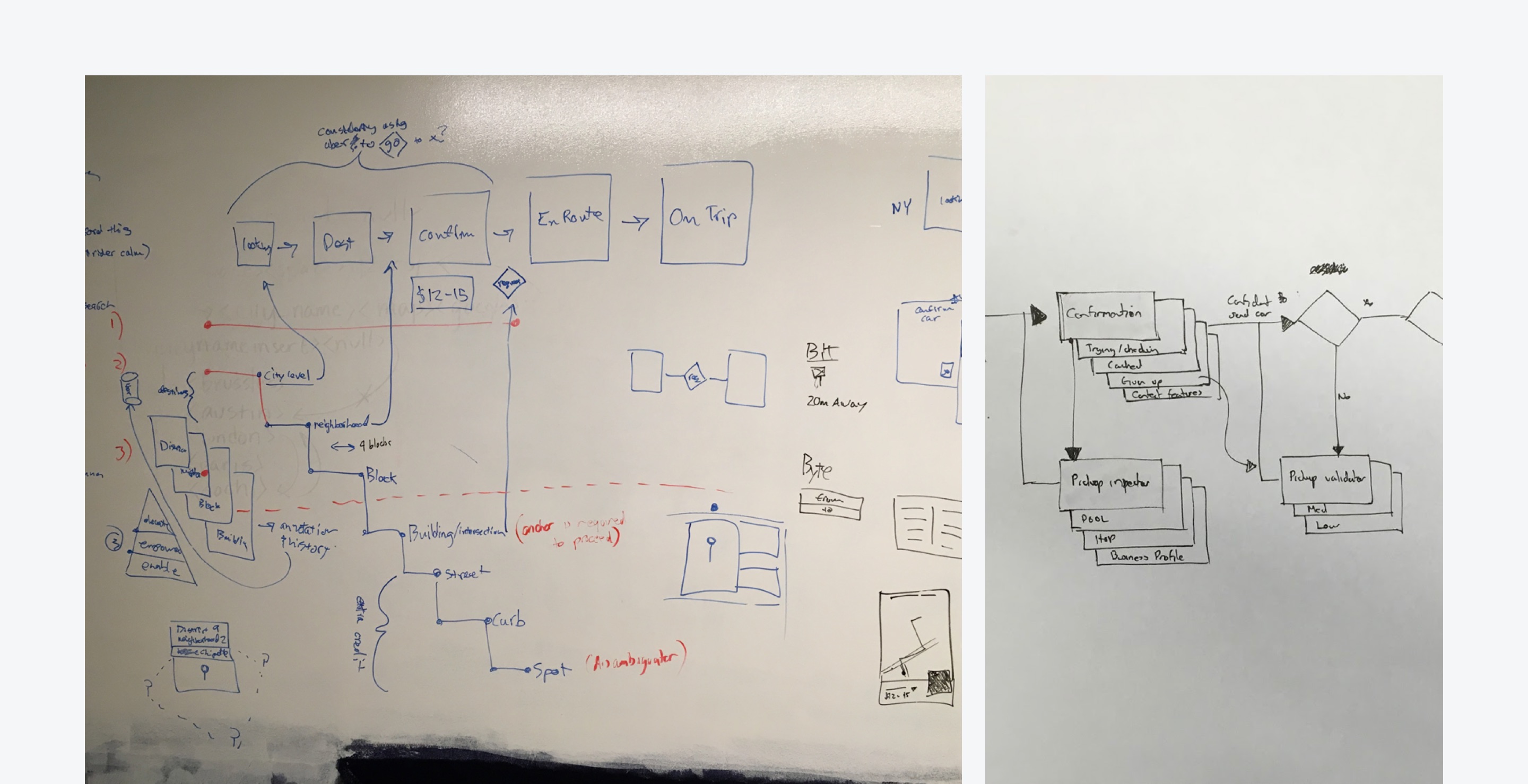
Intelligent pickups
Making trips efficient required that we move beyond dispatching the closest car, to dispatching the most optimal* car. This presented several design challenges:
- Getting the Rider to walk to a nearby pickup location.
- Creating heuristics to decide the optimal spot.
- Adapting when we don’t know where the Rider is.
- Balancing smart defaults with choice and control.
*Optimal refers to the car with the fastest route to destination based on a set of nearby candidate pickup locations
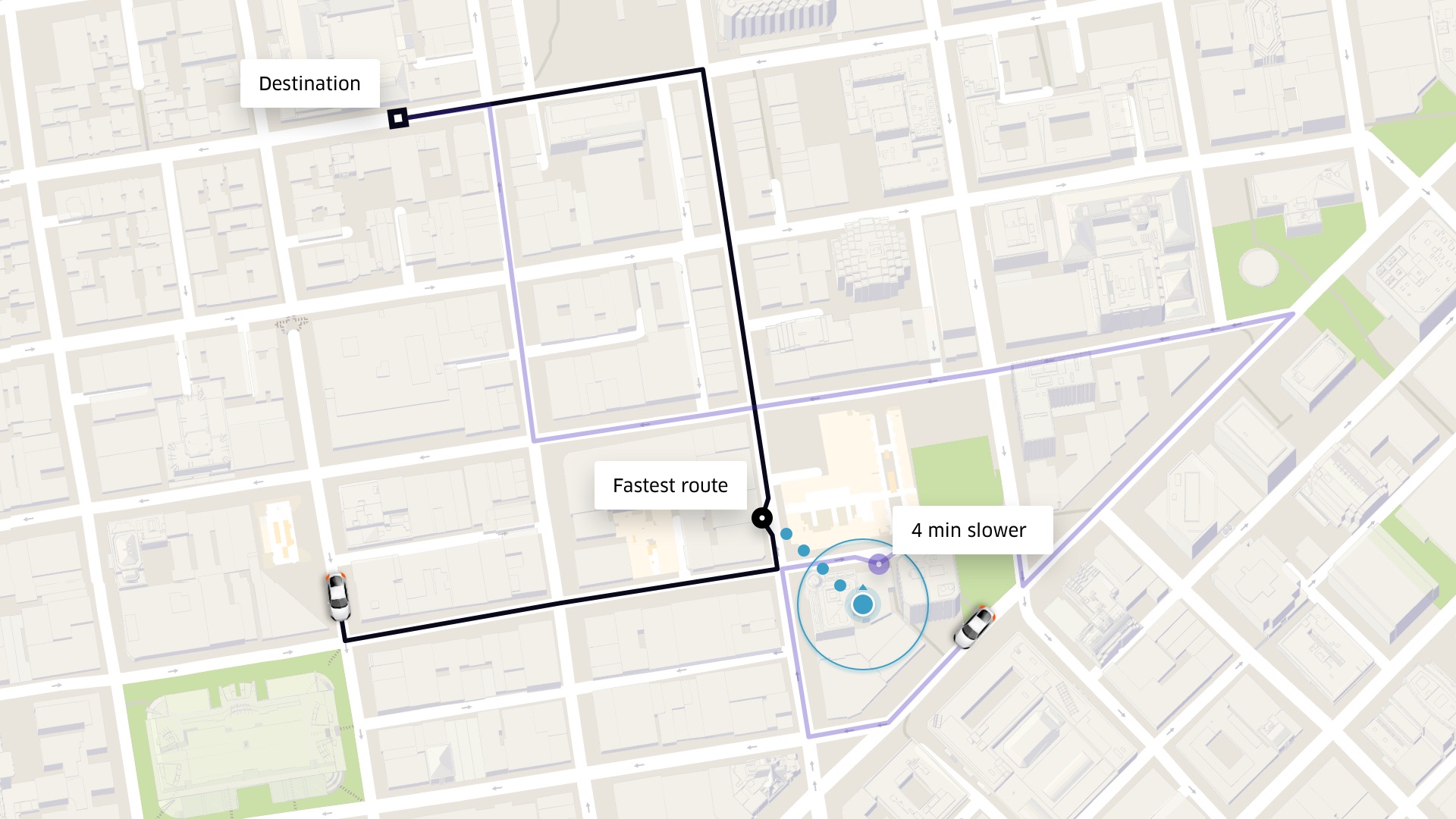
Adaptation - a flexible architecture
I designed the flow based on the idea of a location confidence score. If Uber is confident of the Rider's location, it does all the heavy lifting. Otherwise, the app prompts the Rider to validate their location.
Instead of designing for the right answer, I designed a flexible system optimized for learning and optionality.
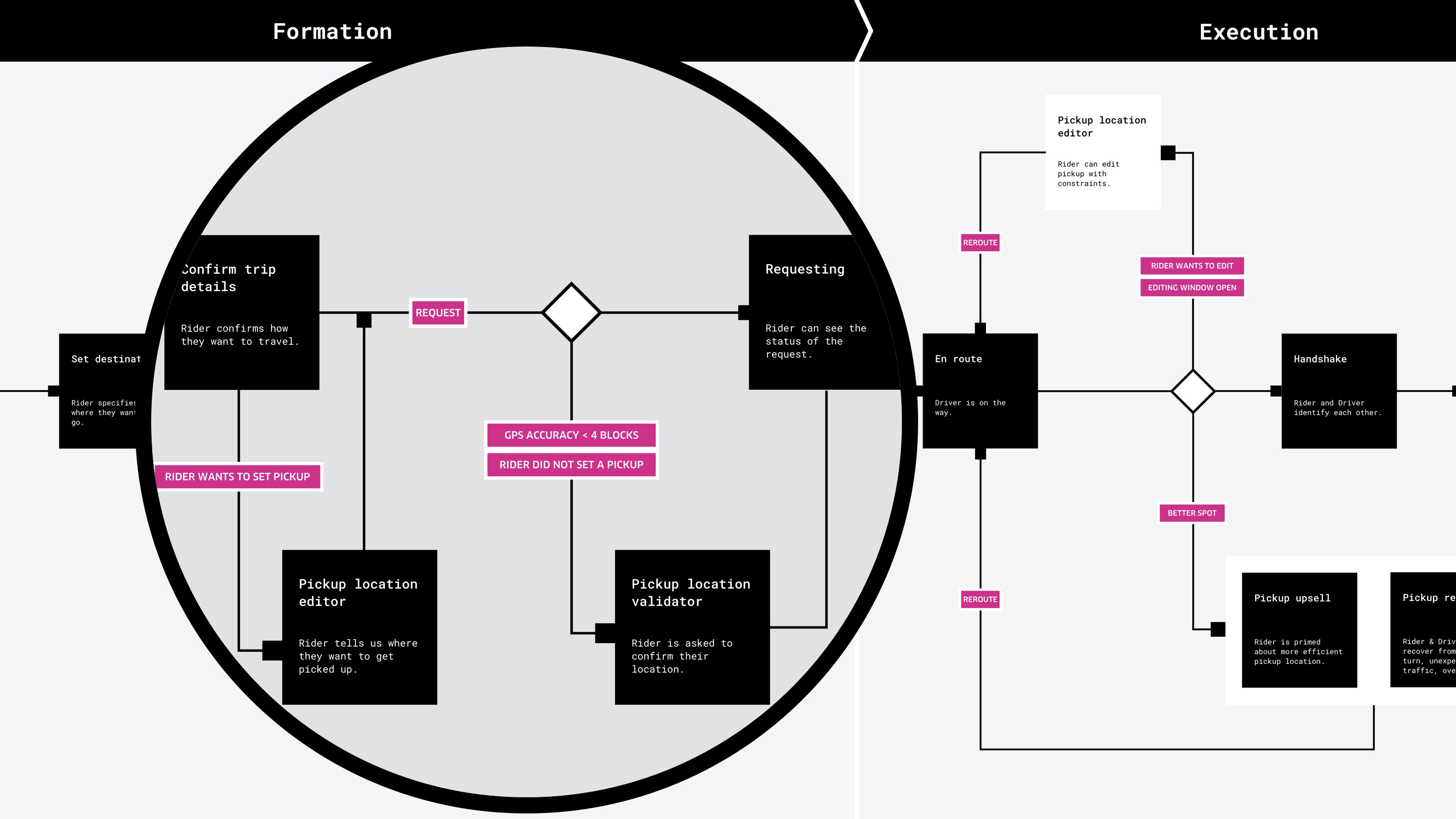
From Ambiguous to Obvious
Communicating location in a more intuitive way.
A critical part of the rendezvous experience is that Riders and Drivers have a clear understanding of where to meet and how to get there. The existing Uber app didn’t do a good job of supporting wayfinding, relying mostly on street addresses and the map.
During our research trip in India, we observed many wayfinding challenges. Limited street signage, intense traffic on the roads and sidewalks and poor GPS accuracy meant that the Riders and Drivers used POIs to coordinate their pickup location (in spite of what was formed in the app).
We found that there were structural patterns inherent in their communication, which inspired the Geotalker feature.
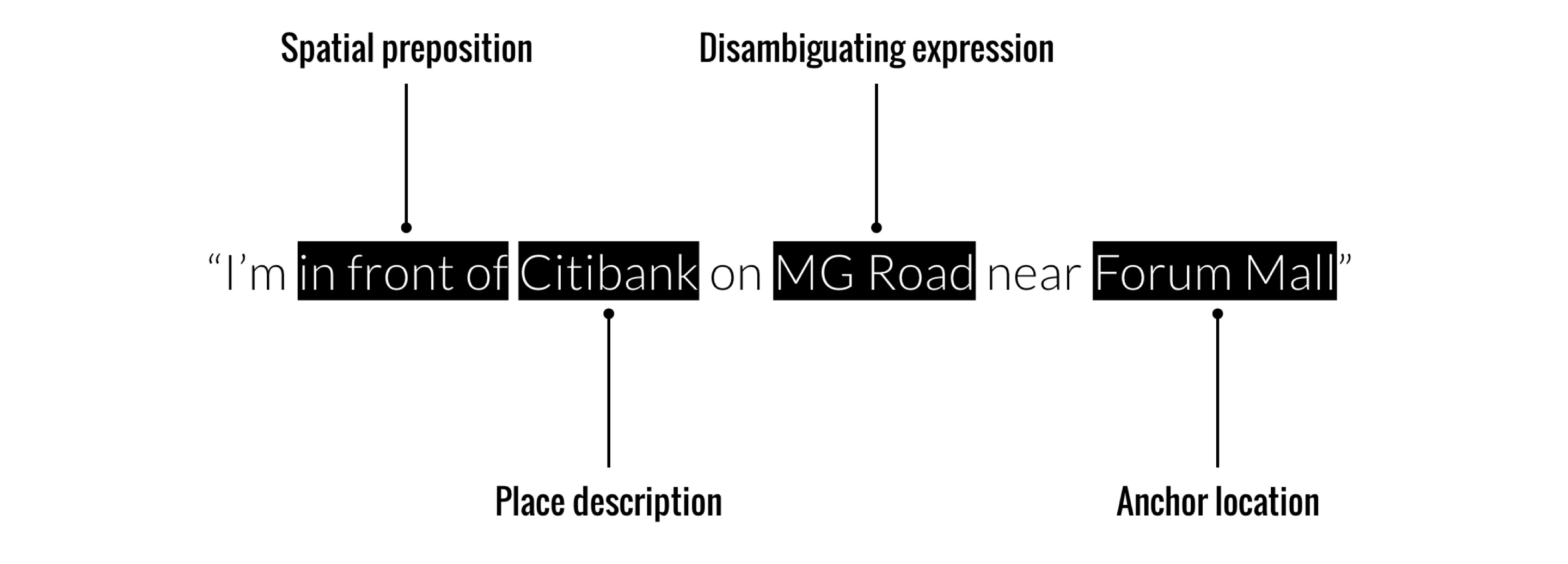
Geotalker is a place description framework that mirrors how the human mind organizes spatial knowledge. It works by using a set of heuristics to translate a reverse geocoded street address into a place description phrase to support wayfinding, spatial awareness and communication.
I started out by creating a concept model for wayfinding and spatial cognition. The exercise helped me come up with the idea that features of the urban environment could have different levels of salience, depending on the point of view of the Rider or Driver.
The larger vision was to create a system where place description leveraged the POI with the highest level of salience, based primarily on heading direction and other factors. The system would test different labels and self-optimize based on the quality of the pickup experience.
However, given the speculative nature of the idea and reliance on a quality location data set, we decided to experiment with a less intelligent version in the existing app.
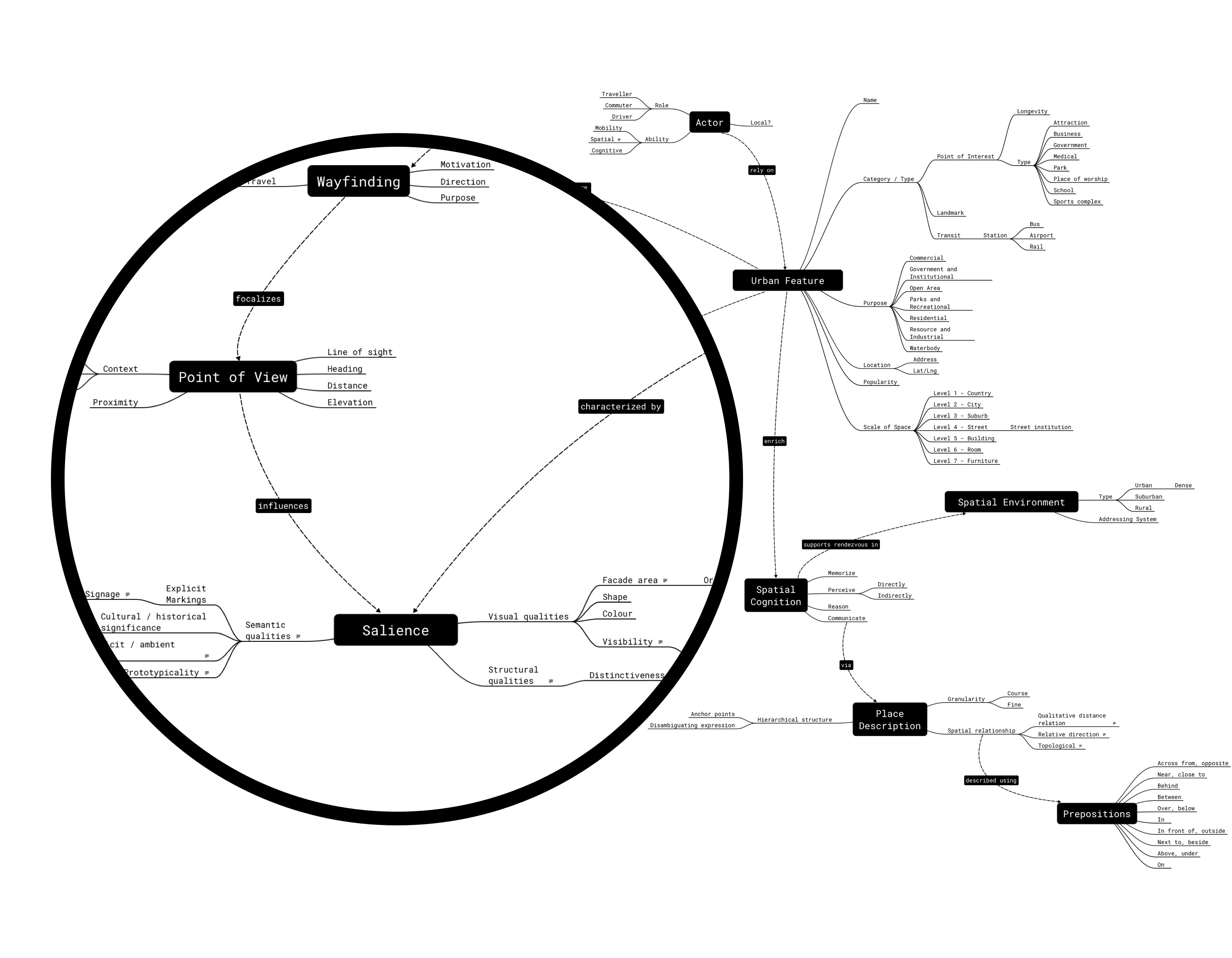
Geotalker reduced ambiguity in the pickup experience
Early experiments resulted in significant decreases in the distance between pickup request location and actual pickup location and contact rate. We concluded that Geotalker helped to reduce ambiguity of the pickup location.
This was enough signal necessary to launch the idea in the redesign.
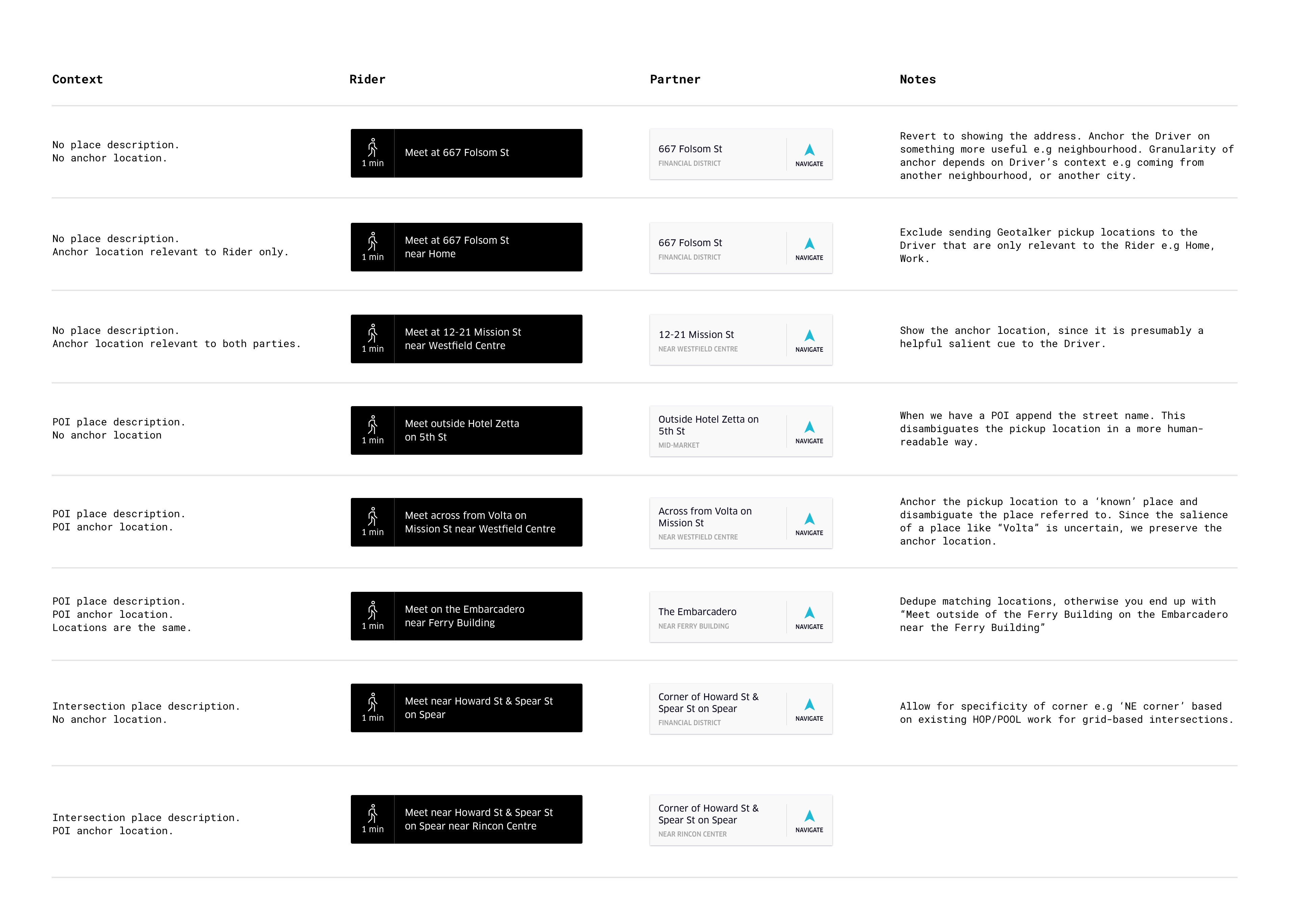
The Most Radical Update Since 2012
In the 5 months after my involvement on the project, the team continued to evolve and polish the visual design, as well as finesse the finer functional details as the app was being built. Although I was not part of this process, it was great to see most of my work brought to life.
On November 2nd, 2016 the new Rider app launched globally—an impressive achievement by the team, considering that it was a complete redesign and rebuild from scratch.
Positive results and much more to do
The redesign of the Uber Rider app on iOS and Android has had a positive impact on the pickup experience, at the time of writing (3 months since launch). However, contact rate has not been significantly decreased which means Riders and Drivers continue to contact each other to confirm or coordinate pickup details. I believe this to be a behavior change that will reveal over a longer period of time.
The error distance between requested pickup location and actual pickup location decreased by 34%
Driver wait-time decreased by 20%, high-precision pickup rates increased by 17%, multi-contact rate decreased by 3%.
For confidentiality reasons I have omitted the actual values for these metrics.
Was this case study helpful?
Feel free to show your support by buying me a coffee.
Uber Brand Case Study
A tech startup turned global mobility platform in eight short years deserves a holistic brand system that’s instantly recognizable, works around the world, and is efficient to execute. Here’s a case study looking at the 2018 Uber rebrand.

About Uber Brand Case Study
- Category : Web Design
- Colors : Color Code #eeeeee Color Code #444422 Color Code #888844 Color Code #222222 Color Code #66cccc Color Code #cccccc Color Code #aaaaaa Color Code #000000
- ← Pesce
- Fully Studios →


How Uber Disrupted An Industry With An Explosive Approach
Table of contents.
In this strategy study, we’re going to delve into a company that impacted everything from people’s everyday lives and entrepreneurial dreams to the startup world and city legislature.
Its story and strategy are fascinating, often problematic, and definitely worth exploring. So let’s embark on a different kind of Uber ride.
Despite disrupting transport around the globe, Uber defines itself as a technology company , not a transport company - hence their legal name Uber Technologies Inc. It was one of the first companies to embrace and define “the sharing economy” concept and created a two-sided digital marketplace for drivers and riders.
Uber’s mission was to make transportation as easy to access as running water and they wanted to do it in a different way - without owning its own vehicle fleet like your regular taxi company.
That asset-light strategy is what makes Uber so incredibly scalable and it proved to be a huge draw for investors. Since Uber’s launch in 2010, the company has attracted over $25 billion in VC funding.
Their business model and immense financial backing helped Uber achieve:
- Present in 10,500+ cities across 70 countries
- 131 million monthly active platform customers
- Nearly 23 million rides per day worldwide
- Over 5 million drivers worldwide
- 118 million users in 2021
- Annual revenue of $17.4 billion in 2021
- A 68% share of the US rideshare market .
Uber’s numbers are astronomical and the company is a perfect example of a disruptive and transformative brand. However, as we dive deeper into Uber’s strategy, you’ll see that Uber faced and is still facing many challenges - the biggest one among them being its (un)profitability.
But let us start at the very beginning...
{{cta('eed3a6a3-0c12-4c96-9964-ac5329a94a27')}}
It all began on a cold night in Paris...
It was a snowy winter night in Paris in 2008. Two friends and successful startup founders, Travis Kalanick and Garrett Camp, were attending the annual tech conference LeWeb. More importantly, they were trying to get a cab but couldn’t find one.
What if you could just request a ride from your phone?
This idea, based on a very real need at that moment, is what sparked the creation of Uber.
After the conference, the entrepreneurs went their separate ways, but when Camp returned to San Francisco, he continued to be fixated on the idea and bought the domain name UberCab.com.
In 2009, Camp was still CEO of StumbleUpon, but he began working on a prototype of UberCab as a side project. At the time, UberCab was still an idea for a shared luxury cab service that could be ordered via an app.
Camp had managed to persuade Kalanick to join UberCab in an advisory role and on July 5, 2010, the first Uber rider requested a trip across San Francisco. Kalanick became Uber’s CEO in December 2010, while Ryan Graves, Uber’s first CEO, assumed the role of the COO and board member.
Uber’s app, enabled its users to order a ride with a tap of a button . A GPS identified the rider’s location, and the cost was automatically charged to the card on the user account. Uber’s simplicity fueled its early popularity among users as well as investors and the startup quickly became one of the hottest companies in San Francisco.

By October 2010, the company received its first major funding of $1.25 million and in 2011 its growth skyrocketed. Early in the year, the company raised $11 million and went on to expand to New York, Seattle, Boston, Chicago, Washington D.C. as well as abroad in Paris.
Yes, just a year after the first Uber ride was requested, Uber had already launched internationally in Paris, where the idea for Uber first took root.
In December at the 2011 LeWeb Conference, the very conference “responsible for Uber’s inception”, Kalanick announced that Uber raised another $32 million in Series B and that investors like Jeff Bezos and Goldman Sachs got on board.
In 2012, Uber launched its arguably most popular service UberX. UberX provided an option of ordering a more affordable car as an alternative to its original black car service. That’s when Uber became really appealing to the mass market.
Behind Uber’s explosive growth are an innovative business model and growth strategy that we must explore before diving into Uber’s global expansion.
Key takeaway #1: build solutions for real-world problems
Successful products and services identify real problems and figure out how technology can be leveraged to solve them. Uber’s founders made sure they’re going to be able to get a ride during a cold winter night by using mobile technology to transform on-demand transportation.
All about Uber’s scalable business model
When talking about Uber’s business model, we need to mention that since its launch, Uber has expanded and diversified its services. It’s no longer just a ride-hailing service - it also offers food delivery (Uber Eats) and trucking (Uber Freight).
However, for the sake of simplicity, we’ll mostly focus on Uber's core business of ridesharing and the business model revolving around it.
The basic idea behind Uber is to connect riders that need to get somewhere with drivers that are willing to take them there. Riders create the demand while drivers provide the “supply” and Uber acts as the marketplace where both parties can seamlessly connect.
As you can see, Uber has two key users and it has to provide strong value propositions for both drivers and passengers in order to attract enough users for the platform to function as intended.
Let’s see why passengers and drivers use Uber.
Uber’s value propositions
- Convenient on-demand ride bookings
- Real-time tracking
- Cheaper rates compared to taxis
- Accurate estimated time of arrival
- Automatic credit card rides
- Lower wait time for a ride
- Upfront pricing
- Multiple ride options
For drivers
- Highly flexible source of income for people who own (or are willing to loan) a car
- Completely flexible working hours
- Good trip allocation
- Assistance in getting vehicle loans
- Weekly or even daily payments
Uber’s target market
While the appeal of Uber is quite obvious, who exactly do they target?
As evident from the value propositions, Uber has two main target segments - passengers who want a fuss-free experience ride from A to B and drivers that want flexibility and some extra income, usually on the side.
When it comes to passengers, Uber’s website’s headline for a long time was: Everyone’s private driver . That instantly lets us know that Uber’s target market is very, very wide. It’s everyone who needs a ride .
While targeting several customer segments with different cost-conscious and more luxurious service options, what’s perhaps more important is how Uber reached its audience at the very beginning as you can’t just target everyone from the get-go.
It’s all about passionate early adopters
Uber did a masterful job attracting its first users - passengers as well as drivers. When it comes to launching a marketplace the first few weeks are absolutely crucial as there needs to be enough supply and demand for service to feel worthwhile.
Uber developed a highly targeted and localized early adopter strategy in the Silicon Valley area. They knew that launching there meant that the company will be interacting regularly with the tech community who are continually looking for new tools and services that improve their quality of life. People there were ideal early adopters and Uber reached them by sponsoring tech events, providing free rides, and in general driving awareness among this audience.
San Francisco also has notoriously spotty cab service which was perfect for Uber. As early adopters, completely fed up with the taxi situation in the city, tried Uber, they took to blogs, social media and every other way possible to tell their friends about this new way to ride.
The Uber experience became a vector for growth as early adopters impressed their friends with the ability to call a black car from their phone with a couple of taps. These new riders were immediately wowed by the experience and became new users and advocates within the span of a single car ride.
Uber also knew that attendees of their sponsored events were well connected and highly likely to share their experiences with friends, tech press, and social media audiences after trying Uber.
By seeding this audience, they were able to create a growth engine that hinged not just on word of mouth, but by showcasing the service to one's friends which quickly led to a growing network of passionate customers.
Uber combined that initial campaign with its referral marketing strategy where users can give friends free rides while earning credits themselves. This “give money-get money” program gave first-timers a more concrete reason to try the service. It’s been massively successful both for Uber and for certain “superfans”, one of whom earned over $50,000 in referral credits . Drivers also get referral incentives, thereby making acquisition on both driver and rider sides faster and easier.

That’s how Uber quickly got a lot of passionate users who were actually Uber’s first target market. Of course, every company wants passionate users, but as you’ll see, Uber needed them to win against the myriad taxi regulations in major cities.
Uber’s early adopters were people that weren’t happy with the existing state of the transportation industry in their cities. They quickly became advocates for the company in various forums as Uber fought against old regulations. It was a very clever move to identify and cultivate these customers early on. By making customer convenience and service a priority, Uber took the role of “disruptor” and turned it into a part of the company’s image and brand. They joined a broader socioeconomic movement towards changing old industries in ways that benefited consumers.

It’s safe to say that if Uber wasn’t backed by its passionate users, it wouldn’t be able to expand nearly as fast as it did. In fact, the disruptive socioeconomic movement became a key part of Uber’s early business model.
Adapting to local markets
Despite targeting everyone, Uber still takes into account local experience. As Uber expanded it segmented its audiences and precisely targeted them by region and immediate needs.
For example, in countries like India and Thailand, the average customer must deal with higher traffic congestion and reduced purchasing power than a North American city. In these regions, Uber expanded its offerings with a rickshaw and motorbike service, which are more affordable and often faster transport options.
What enables Uber to adapt its services to the local condition? It’s arguably the most important part of Uber’s business model and quick expansion...
An asset-light strategy
As we said Uber is not a transport company and therefore does not need the assets a traditional taxi company requires.
By being “just” an online platform connecting drivers with passengers via their smartphones eliminates Uber’s need to establish a brick and mortar presence in each new city to which it expands operations. This model eliminates many barriers to Uber’s growth and drastically increases its scalability. It also unlocks the potential for Uber to expand into contiguous service segments such as food delivery (Uber Eats) without drastic changes to the company’s operating model.
The majority of Uber drivers use their own cars which means that Uber doesn’t need to invest in a fleet of company-owned vehicles or the insurance and repair costs that come with it. It also doesn’t need dispatchers or call centers as the whole process of hailing a ride takes place on their app.
So, compared to a traditional cab company, Uber doesn’t have to deal with:
- servicing and maintaining a fleet of taxis,
- call center agents,
- administration,
- parking fees,
- recruiting and training drivers and issuing permits.
This means massive savings in fixed and variable costs as well as the agility to respond more quickly and effectively to market changes relative to its competitors.
That’s why Uber was able to expand extremely quickly and in a span of 10 years appeared all over the globe. No taxi or transport company is able to achieve that.
Their lack of assets shows how they save money and expand at relatively low costs - but how does Uber actually make money?
How does Uber make money?
You can probably guess that Uber’s ridesharing service makes money by taking a cut of each ride that happens through their platform. While this is correct, Uber’s revenue model consists of more than just trip commissions - even without taking into account its other services like Uber Eats and Uber Freight. Let’s take a look at other revenue streams their business model enables.
Trip commissions and surge pricing
Uber provides the drivers on its platform with a robust supply of ride requests to accept, fulfill, and make income. When passengers pay for the ride through the app, Uber takes their commission and transfers the rest to the driver. Uber claims that they charge their drivers a 25% fee on all fares, yet reports vary.
However, Uber’s trip rates are not always the same. Uber utilizes a surge pricing model , which is also a cornerstone of Uber’s business model.
It takes advantage of the dynamic relationship between supply and demand and willingness to pay. When there are more passengers than available drivers in a given area, the algorithm increases rates in order to equilibrate this discrepancy. The first benefit of this model is that it attracts drivers to areas offering higher rates, thus increasing their numbers in regions of high demand. Second, it narrows the initial pool of potential passengers based on how much they value a ride, allowing Uber to more accurately segment their customer base and satisfy those users who need their service the most.

Thus the surge pricing model serves the purpose of capturing the highest possible margins for the company and its drivers while establishing a targeted base of users that value Uber rides the most. These users might also be enticed to upgrade their chosen option to a premium one the next time they use Uber, which is considerably more profitable for the company.
Leasing to drivers
Uber runs a vehicle leasing program in many of its target countries to help new drivers get onboard faster. Drivers have to pay an upfront security deposit for the vehicle and payments are automatically deducted on a weekly basis from the driver’s earnings.
Advertising
There are millions of people around the world that interact with Uber cars every day. Not just the ones who use it for rides but also the ones who see them. That’s a huge opportunity for local as well as global brands that can take advantage of Uber’s on-car advertising .
Brands can advertise on cartop video screens, car wrappings, or car stickers. All three ways display ads on the car and are a fairly traditional form of advertisement, yet Uber with their huge number of drivers can get some money out of it. Of course, drivers that are willing to use their cars as moving ads also earn some additional income.
Understanding Uber’s business model is important if we want to understand the company’s extremely fast and aggressive global expansion, which is something Uber is quite famous for.
Key takeaway #2: plan for scalability
Building a scalable business model is critical, especially if the company’s revenue depends on the quantity of its service. Uber has built its platform in such a way that it is easy for it to expand to new markets and serve millions of users at the same time without a significant increase in its operational costs.
Uber expansion strategy
Uber’s initial global expansion it’s an amazing showcase of the company’s “ask for forgiveness instead of permission” approach . As we’ll see later, Uber’s culture has completely changed since then, but its early expansion is what brought the company mercurial success as well as plenty of backlash and issues of all kinds.
Uber employed an almost warlike mentality when going into a new market and the company’s sole focus was winning. This was first visible in San Francisco even before it went global.
Uber received a cease and desist order in San Francisco soon after its launch in 2010. It ignored it and issued the following response , that might be seen a bit on the arrogant side:
“UberCab is a first to market, cutting edge transportation technology and it must be recognized that the regulations from both city and state regulatory bodies have not been written with these innovations in mind. As such, we are happy to help educate the regulatory bodies on this new generation of technology and work closely with both agencies to ensure compliance and keep our service available for our truly Uber users and their drivers.
Our commitment is to facilitate an improved transportation option that provides safe, reliable, and convenient travel. That will not change. We will continue full speed ahead with the mission of making San Francisco city a great place to live and travel.”
They were relying on their passionate supporters and on their lobbying efforts to put things in order. Not just that, while this is playing out, they're continuing to push forward and expand into other parts of the world. That’s how aggressive they were from the get-go.
Going to Paris - because they can
Uber recognized early that international expansion should be a priority if the company wanted to achieve exponential growth and made Paris its 3rd launch city and 1st city outside the US.
In fact, when they launched in Paris, they launched as sort of a prototype, just to show that they can do it without too much difficulty.
As Mina Radhakrishnan, Uber’s first Head of Product said in a blog post :
“At Uber, we launched our first international city, Paris, in 30 days. There was a lot of manual work to continue launching in other countries and languages while we didn’t have a core set of international systems – we had to charge everyone in US dollars for several months. In parallel, we built out the foundations and kept moving pieces onto the new infrastructure, which allowed Uber to keep momentum and still scale.”
While Paris served as an enticing showcase for new investors it also made Uber realize they need an expansion playbook.
Uber’s unusual expansion playbook
At first Uber treated each city as an individual project. They would investigate what needed to be done on a case-by-case basis, and it involved a whole lot of work manpower.
However, there was a market that needed to be monopolized and they needed to act quickly.
Uber soon realized that looking at each city as a project was too slow. Instead, they developed a process based on the lessons learned from their initial projects and created their aggressive expansion playbook.
Here’s Uber’s plan when expanding to a new city:
- Secretly enter a new market. Recruit drivers and customers through company ambassadors who gain commission and Uber credit. Offer first-time customers free rides to create a strong customer and to exploit a legal loophole for promotion.
- Ignore threats of legal action. Make a case that customers want Uber to be there.
- Ignore government sting operations. When the government threatens Uber’s drivers with fines, reassure them that Uber will cover any penalties, legal costs or other repercussions using the massive sums of money invested in the company.
- Start lobbying the state government. Start pushing for regulations that legalize its operations. Create a positive public image and gain the support of influential local charities and other key community stakeholders. Involve customers in petitions.
- Monopolize the market. Hire more drivers, pour more money into promotion, and manufacture PR stunts like delivering puppies or ice cream.
- Undermine the competition. Recruit drivers from competitors by offering them high sign-up fees and often employ other tactics to disrupt their services.
This was the overarching process, and there is obviously a multitude of smaller processes within each of the six steps. The playbook was implemented by a new, local team with a separate entrepreneurial manager who was overseen by Kalanick, the CEO at the time.
While the process was extremely aggressive it’s also how Uber increased its valuation from $3.7 to $41.2 billion in just 15 months.
The main thing Uber did with this playbook was to launch its service seemingly out of the blue which gave the authorities no time to react before it was firmly established in the city.
While this playbook is responsible for Uber’s early success the approach was often challenged and frowned upon.
War on all fronts
Unsurprisingly Uber has been heavily criticized for aggressively lobbying, following unfair labor practices, jeopardizing the security of passengers and drivers, and playing with local laws by requiring no permits. There were too many scandals and issues to cover them all.
Uber’s warlike approach worked better in countries with legal systems based on common law. In common law countries like the US, Canada, and the UK, laws and regulations are more flexible and subject to judicial interpretation. Uber was therefore afforded greater latitude when arguing the legality of its case in the courts of law.
In the U.S., Uber used consumer enthusiasm for its service to bring pressure on local politicians to develop rules that allow it to operate. However, such an approach is difficult in civil law countries like China, France, Germany, Spain, and much of continental Europe.
This resulted in plenty of bans, penalties, and losses on various markets .
Uber has been banned from operating in parts of France, Germany, Spain, the Netherlands, and Belgium. It has been accused of willfully ignoring and breaking the law, placing both drivers and riders in peril. In the Netherlands, the company had to pay around 2.3 million euros to settle a case, after being accused of operating an illegal taxi service from 2014 to 2015.
Uber also faced issues in countries where the relationship between Uber and its drivers meets the definition of the employer-employee relationship. This is one of the reasons why the app was temporarily banned from operating in Colombia and faced similar legal issues in Chile and Argentina.
Its presence in various countries has generated an incredible backlash – protests, riots, and clashes with angry labor unions - especially cab drivers.
Uber also completely mismanaged their launch in China and lost billions trying to establish themselves on the Chinese market. Here’s where their process completely failed them.
When Uber came to China, it didn't fully anticipate all the changes it would have to make. In China, besides having an established competitor in Didi, Google Maps didn't work, so Uber had to completely redo their location services.
Uber also relied on credit cards for payments, and in China, consumers increasingly used apps to do their payments. However, the main apps consumers used ( WeChat and Alipay), were owned by parent companies of the rival ridesharing company, so Uber had to essentially negotiate with its rivals in order to have consumers pay for their ridesharing services.
The Chinese policy regarding competition is also very different from the policy in the United States and much of Europe. The Chinese government wants to promote domestic firms and aggressive tactics are not really an option, because when push comes to shove, the government is likely to come down on the side of the domestic company.
Despite many problems and failures, Uber made impressive headway in foreign markets. But their success also made them a target. Well-funded local challengers soon replicated and improved upon Uber’s model and quickly limited Uber’s market share or pushed them out of their markets.
Tactical retreat from some markets
After Uber hired a new CEO in 2017 and started cleaning house at the end of 2017 (more on this later), it switched to a much less aggressive expansion strategy. In 2018 they decided to retreat from some markets instead of trying to “win at all costs”.
While some may see retreat as a failure, Uber’s early and aggressively sought international position actually provided an opportunity. Instead of completely giving up on markets, Uber used its leverage as an established player to acquire stakes in local competitors . Uber acquired 15.4% of Chinese Didi, 38% of Russia’s Yandex Taxi, and 23.2% of Southeast Asia’s Grab.
Uber also vowed to do a “reset” in Germany, where it operated a very limited service in Berlin.
Uber is still left fighting in India against rival Ola where the two have been locked in a costly battle for years over dominance in India’s ride-hailing market. The rivalry is more awkward now that both companies share a mutual large investor: SoftBank.
Uber’s early super aggressive expansion policies reflected its combative corporate culture which soon tarnished the brand’s image.
Key takeaway #3: being ultra-aggressive is a double-edged sword
There’s no denying that without its extremely fast expansion Uber wouldn’t be the brand that we know today. But as scandals mounted and as Uber lost millions and billions of dollars in certain markets, we should ask ourselves if things could have been done differently. Ignoring local regulations, while it did work in some cases and was extremely costly in others, was never ethical. And we can probably all agree that even if a company adopts an aggressive playbook, it should do all it can to act ethically as well.
Uber’s toxic culture comes to light
Uber needed three key elements in place if it wanted to thrive as a global business.
- A set of country managers who are responsible for their individual markets.
- An understanding of how those markets differ.
- A unified executive team, which creates a centralized command center.
Under Kalanick, Uber actually had the first two. There were strong regional managers and a decentralized command structure that allowed them to enthusiastically implement Uber’s playbook.
However, Uber was lacking a unified executive team to coordinate global operations, including the activity of the individual country managers.
Not just that, back-biting, undermining, and infighting were the rule, not the exception, and executive meetings were often canceled at the last minute.
When we look at Uber’s playbook, that’s not really surprising. Uber always played to win and they did a really good job at recruiting teams of people who really wanted to win as well.
One of the downsides of this course of action is that if you exclusively focus on winning and getting around the existing regulations it quickly blurs the line of what's ethical and what's not ethical - not just when expanding, but inside the company as well.
It also brings into the company a certain kind of people - people that enjoy treating every encounter as a confrontation . Constantly fighting skirmishes outside and inside the company is not just exhausting but affects the morale at the company and the corporate culture.
Uber’s cultural guidelines weren’t helping. They ranged from the sober “Be Yourself” to full-on bro-tastic maxims like “Superpumped” and “Always be hustling”.
As the company scaled rapidly, so did its toxic culture and questionable business tactics. These led to a constant stream of nasty and very public challenges. They included political infighting, allegations of corporate espionage, and criminal investigations.
Then there were the many run-ins with regulators, taxi firms, and even Uber’s own drivers. Uber saw a backlash in some of its key markets which came to a head with the #DeleteUber campaign.
The old Uber logo didn’t help either. It emphasized the public’s perception of Uber’s hostility, imposing itself on customers with all-caps on black background, reflecting Uber’s hyper-masculine attitude.
While Kalanick did build a hugely successful business, an increasingly toxic culture had become a poison and tarnished the brand.
“The radical scale success of Uber that was unprecedented at the time, I think, led to a culture that was highly confident, a culture that was confrontational, a culture that to some extent celebrated breaking the rules . All of which made possible what Uber built, but which created a blind spot as to individual's respect, respect for diversity of different viewpoints, et cetera, that led to Susan Fowler's blog – which by the way wasn't the only difficult occurrence happening at the company,” says Dara Khosrowshahi, the current CEO of Uber.
Exposed by a blog post
The blog post Khosrowshahi mentions was published by a former Uber engineer Susan Fowler in February 2017. She described a toxic culture at the company where sexual harassment was rampant and managers cannibalized each other.
Her post received so much attention that Uber decided to respond by having the law firm Perkins Coie do an investigation into her allegations.
The CEO and co-founder of Uber, Travis Kalanick, began facing heavy scrutiny over Uber’s company culture. Earlier in 2017 Bloomberg also posted a video of him arguing with an uber driver over falling fare rates, which certainly didn’t help his case and further tarnished Uber’s brand.
The company finally recognized a crucial if simple truth: to maintain a sustainable brand long-term, Uber had to be honest about what it stood for. It postured itself as a cutting-edge, progressive company, yet its corporate culture was the opposite of progressive. The brand teetered on the brink of outright hypocrisy.
Kalanick resigned as CEO on June 20, 2017, and there were numerous other personnel casualties of Uber’s very public self-reflection.
The need to rebrand was clear: without a complete brand overhaul, Uber risked totaling its business and Uber decided to undergo a massive effort to restore its image and set itself up for the future.
Key takeaway #4: recognize when it’s time for a cultural shift
While the “always be hustling” mantra and “win at all costs” people might be required to succeed at a startup, there’s a time when such thinking should be left behind. As Uber grew and expanded it never really took a hard look at the corporate culture it created. It wasn’t a small startup anymore, it became a huge company and should’ve therefore acted more responsibly sooner. In the end, it was forced into an overhaul, but not before its toxic culture tarnished the brand.
Uber rebrands and goes public
When Uber decided to turn things around there were two major areas they focused on - one was their corporate culture and values and the other was their brand .
Khosrowshahi, the new CEO of Uber, said that they asked their employees what should represent the culture of Uber going forward.
He recaps the conversations and answers:
“We celebrate differences. We want to be a different company but we also celebrate differences and backgrounds and where you come from and religion and sexuality, et cetera, and we believe that no matter what you bring to the table, you should be able to contribute to what we call Uber.
The simplest answer that I hear repeated over and over is: We do the right thing, period. We didn't want to define to the employee what the right thing is. You know what the right thing is. Let's do that and, period, that's what we do.”
Listening, observing, and learning became the foundations of Uber’s cultural overhaul.
Since the change, some Uber executives even go the extra mile to participate as normal Uber drivers and experience what Uber’s drivers experience. The importance of getting one’s hands dirty is a part of the refreshed culture.
They started calling their drivers “driver-partners”.
“Now we have a fundamental connection there that is reflected in the
organization, we have a driver product team, and we now fundamentally build our
product with the driver. We talk to them, we have a dialogue with them, and we build with
them. That kind of connectivity with our driver-partners, I think, creates a win-win and it
creates mutual respect,” says Khosrowshahi.
The current CEO also recognized that executives can get out of touch with reality and said that whenever he goes from city to city he meets with drivers and asks them what they like and what they don’t like.
Uber also changed its approach to communication with governments and regulators. Before all the conversations and the dialogue was happening through lawyers, now Uber is trying to talk about their requests and find a compromise wherever they can’t agree with authorities.
While Uber is still facing challenges and there are still many dissatisfied parties, the company has changed its warlike and aggressive approach and is trying to make things work in a different, more humane way.
A new, more emphatic brand
Uber also embarked on a major rebranding intended to capture an accessible, progressive style that reflected the best of the company.
The company understood it faced a critical mission: it had to persuade customers that its lousy reputation left the building when its former CEO was replaced.
Uber opted for a complete redesign to overhaul the brand from the ground up.
Their new logo is the foundation of a substantial rebranding effort – one that incorporates a sense of mobility, accessibility, and friendliness not found in previous iterations. The company’s goal was to create a cohesive brand system described as “instantly recognizable, works around the world, and is efficient to execute” .
The agency Wolff-Olins summed up the project goals on their case study site :
“The brand needed to work around the world. Its highest growth areas are in regions outside of the US, such as Latin America and India, where Wolff Olins has a considerable depth of experience. Instead of pursuing a complex identity system, localized through color and pattern, we moved towards a universal ‘beyond simple global brand. Teams in diverse markets can make it relevant to their audiences with culturally specific content.”
What began as everyone’s personal driver is now all about moving forward and moving together .
The fresh logo was supplemented by creatives that included photos of people from around the world — serving two purposes. Firstly, it represents Uber’s global market, and secondly, adding this human element made the brand a whole lot more relatable. It’s no longer just a tech startup in Silicon Valley — it’s also the drivers you meet every morning, the co-riders you pool with every evening.
Arguably the best example of Uber’s new branding direction is their marketing campaign What moves you, moves us . It’s a campaign that focuses on the drivers and is built on empathy. It acknowledges and shows appreciation for their drivers' hard work and shows the customers who and what they’re supporting when they choose to ride with Uber.
More recently, Uber acknowledged the hard work of frontline healthcare workers during the Covid-19 pandemic with a #GratefulUK campaign. The company offered them free rides and free meals during the Christmas period and encouraged people to share letters, drawings, poems, or doodles thanking the workers.
Overhauling the brand’s image and corporate culture were not the only major changes that happened after Uber’s scandalous years and Kalanick’s resignation. Another major step towards the maturity of the company happened in 2019 when Uber decided to go Public.
Going public - to boost reputation, get more money, or both?
In less than two years after the rebrand began, Uber decided to go public. Filing for IPO was likely a part of Uber’s rebranding plan.
Why? People tend to look at public companies as more mature. Going public also provides a sense of accountability because public companies have to report on a quarterly basis and are subject to the regulatory process. It opens the company up to an entire set of investors who drive transparency. That’s exactly what Uber needed after all the previous scandals.
Of course, the public market also provides greater liquidity and more readily available money, which Uber needed as well as it was losing billions of dollars on a yearly basis.
However, Uber's IPO didn’t go as well as expected. Uber’s valuation predictions hovered around $120 billion , which would’ve made it the most valuable company to ever go public. In the end, Uber priced its stock at $45 apiece for a valuation of $82.4 billion , which was lower than many expected yet it is still one of the most valuable exits in history. Uber’s stock began falling right away, but we won’t go further into that.
What’s more important - the company has become public which means new pressure from big investors and shareholders every quarter to stem their losses. And as we’ll see later on, Uber’s eventual profitability is not nearly guaranteed.
Before we dive into the questions of profitability, we should examine how Uber defined itself as an innovative company and how it evolved in the last 10 years.
Key takeaway #5: when you need to change, show dedication
Although the jury is still out on how successful Uber’s rebranding actually is, it’s clear that they’ve undergone major steps to repair their reputation. And there’s really no other way to do it. If you want to rescue a tarnished brand, you have to show that you’re truly dedicated to making it work and aren’t just trying to save face for your own sake.
Uber innovation & diversification strategy
Although Uber is known as the main disruptor in the transport industry, the company is actually not the ridesharing pioneer, but a fast follower in the sector.
Uber’s competitor Lyft and former competitor Sidecar (which shuttered back in 2015) are the ones that pioneered ridesharing as it is known today, which entails using non-professional, non-commercially insured vehicles and drivers.
Uber initially worked exclusively with commercially licensed, insured, and regulated entities (known as Black Cars in many areas) before transitioning to the current ridesharing model.
While Uber was a fast follower, it expanded quicker and more aggressively and offered a better user experience which led to market dominance in many regions.
In fact, Uber followed a market entry pattern that has proven successful for business entities in the past – Myspace preceded Facebook, Yahoo preceded Google, and Blackberry preceded Apple’s iPhone. Historical patterns of transformation suggest that being first does have its advantages, but entering the market early and iterating quickly is even more vital when it comes to dominating a market.
Uber’s expansion playbook is a prime example of how quickly they adapted their model and grabbed the opportunity of extremely fast expansion which was possible because of the significant funding the company received.
Their activation of early adopters and passionate customers to support Uber via petitions and pressure on local authorities can also be seen as an innovative approach to one of the ridesharing market’s main challenges.
A flexible pricing model
Uber’s surge pricing model is another example of a simple yet ingenious solution to a very real problem of the taxi industry - how to get a ride when you simply can’t get a cab . That can happen during peak traffic times or during bad weather.
When Uber’s demand for rides is higher than the supply the prices surge. That means users can almost always get a ride if they’re prepared to pay enough.
Researcher Oliver Senn analyzed satellite data on weather conditions over a two-month period, and he obtained 830 million GPS records of 80 million taxi trips. The data shows that it was not the high demand for taxis that resulted in a perceived shortage on rainy days; instead, it appeared that many cabbies simply did not pick up passengers, fearing accidents on the wet roads. However, Uber entices their drivers with higher prices and therefore higher earnings when there’s a shortage of rides.
While plenty of users don’t like the surge pricing, it proved to be a way to get more drivers in the area to take advantage of higher earnings when there’s a shortage of available rides.
Reviews ensure a better service
Another massive differentiator between Uber and traditional taxis is that Uber has rating systems for both drivers and passengers. A review system by itself is nothing new, but it hasn’t been used in the transport industry before - especially not on an individual basis.
The system is a simple solution to the question: “How will drivers and passengers behave?”
It promotes trust in Uber and better behavior on the parts of both driver and passenger as it weeds out the bad users.
More than just a ridesharing service
Over the years Uber has become more than just a ridesharing company. It’s leveraging its underlying technology to test new services that have the potential to generate additional revenue and fuel Uber’s ambitions.
By introducing new services that add incremental value for users, Uber creates opportunities to capture a larger share of their consumer’s wallets, while also retaining and generating additional income for drivers as well.
There are two main services that stuck around: Uber Freight and Uber Eats.
Uber Freight
Uber Freight is basically Uber for trucks. Uber launched its own on-demand trucking app in 2017 with the core idea of seamlessly matching shippers with carriers.
In August 2018, it was spun off into a separate business unit, a move that simultaneously allowed it to gain momentum and burn more cash. After spinning off of Uber, the freight company underwent an expansion.
In 2020 an investment firm Greenbriar Equity Group has committed to invest $500 million in a Series A preferred stock financing for Uber Freight. When announcing the investment Uber said it will maintain majority ownership in Uber Freight and will use the funds to continue to scale its logistics platform, which helps truck drivers connect with shipping companies.
Uber Eats food delivery service launched in 2016 and it was a logical next step for Uber as it aligns with its ridesharing business and helps it utilize its large fleet of drivers. It launched as a separate app and grew in popularity at a rapid pace.
.jpg)
Uber Eats ensured that Uber’s customers used the company’s services more often than ever before. Users who used both Uber and Uber Eats booked an average of 11.5 trips per month, versus only 4.9 trips for those using only a single Uber service.
Consumers benefited from an additional convenient service, and drivers gained a new source of trips which generated a more steady stream of bookings throughout the day, which in turn increased the overall supply of drivers.
With drivers now busier and making more consistent income, they have less reason to dual-app and drive for a competing service like Lyft.
Uber Eats was also huge for Uber during the Covid-19 pandemic. While Uber’s ride-hailing segment contracted by 24%, Uber Eats increased revenues by over 200% in 2020 and prevented a much higher loss of revenue that would have occurred if Uber hadn’t diversified its services.
Uber Revenue by Segment
YearMobilityDeliveryFreightOther2018$8.9 Billion$0.7 Billion$0.3 Billion$0.1 Billion2019$10.4 Billion$1.3 Billion$0.7 Billion$1.3 Billion2020$7.9 Billion$4.8 Billion$0.9 Billion$1.3 Billion
Dreaming of self-driving cars
You may have heard of Uber’s Advanced Technologies Group(ATG) which was established in 2016 with the purpose of developing self-driving cars. Kalanick, the CEO at the time, saw it as an essential investment and there’s no doubt that fully self-driving cars would immensely benefit Uber.
However, ATG brought high costs and safety challenges . Throughout the course of a pandemic-stricken year, Uber has made efforts to stem losses in its ride-hailing business and control business costs. That’s why at the end of 2020 ATG was acquired by its start-up competitor Aurora Innovation. In fact, Uber handed its equity in ATG to Aurora and then invested $400 million into Aurora, which will give Uber a 26% stake in the company. Uber CEO Dara Khosrowshahi will also join Aurora’s board.
“With the addition of ATG, Aurora will have an incredibly strong team and technology, a clear path to several markets, and the resources to deliver,” Chris Urmson, co-founder and CEO of Aurora, said in a statement. “Simply put, Aurora will be the company best positioned to deliver the self-driving products necessary to make transportation and logistics safer, more accessible, and less expensive.”
Uber positioned itself to be right there once Aurora develops their self-driving car, which just might be the key to Uber’s profitability in the future.
Looking towards the future
While Uber’s plans for the future after the pandemic are not set in stone, Khosrowshahi says that people should think about Uber not as a service but as a transportation platform or as an Amazon of transportation. He said that people will be able to take a bus, to take a car, to take a train or to take a taxi using Uber. It would be a win for the consumer because the more choices they've got, the more pricing they've got, the better the product is.
Uber is aiming to pivot their strategy so that it is more inclusive. How they are planning to do that is yet to be seen, but we can be certain they’re going to try and offer new services and further diversify their product as that might be their only option if the company wants to become profitable.
Key takeaway #6: keep innovating and evolving
Uber doesn’t rest on its laurels of being the first prominent rideshare app. Its founders understood really well that the competition will grow over time and they can only stay ahead if they evolve and diversify. They keep adding new features and new services while constantly looking to invest in new technologies.
Will Uber ever be profitable?
Although Uber claims that it will soon become profitable, there are many sceptics that think it won’t happen - and with a good reason.
Uber has been losing billions of dollars during the last few years. Although Uber losses improved in 2020 due to Uber Eats, the company still lost $6.77 billion . Uber plans to minimize losses in 2021, yet due to the ongoing pandemic, Uber had to spend hundreds of millions of dollars in incentives to get drivers back on the streets once the Covid situation improved and the demand increased.
Hubert Horan , a transportation industry expert who has published in-depth analyses of the company's financial outlook, has this to say about Uber’s profitability:
"Not only can I not imagine any remotely plausible explanation as to how Uber could suddenly become profitable after eleven years of massive losses, but absolutely no one has attempted to lay out a financial analysis making such a case. Not the company, not Wall Street analysts, not academics — no one."
In its S-1, a document that every company must file with the SEC if it wants to go public, Uber itself acknowledged and warned that it was possible it would never become profitable .
How come such a successful company that is a magnet for investors still struggles with such heavy losses?
The thing is Uber doesn't really have an edge over its competitors. A smartphone app that matches passengers with drivers can be — and has been — replicated by countless other companies. And once there are competitors, Uber doesn’t offer a service that would be that much more efficient.
As it often does, it all comes down to costs-leadership . The need for human drivers that have to earn a living wage seems to be a vexing problem for the ride-hailing industry. It just costs too much.
That's why Uber once staked so much of its future on self-driving cars, which could potentially reduce the company’s per-mile cost by 80% . But as you know, Uber has already sold its self-driving research center.
The typical explanation of the Uber model is that its focus has been on growth, not profit. Huge investments allowed Uber to keep scaling up until it was everywhere and ensured that the populace relied on its service. According to Horan, its plan was to "eliminate all meaningful competition and then profit from this quasi-monopoly power" in the exact same way that Amazon has managed to do for e-commerce. Except that it hasn't worked as competition is still here and Uber’s core service is not that different from it.
Uber’s push for profitability might be the reason that as of April 2021, the cost of a ride had increased by 40% as the New York Times reported . Why? The increase might be due to the shortage of drivers at the time. Uber is notorious for not paying drivers enough (according to the drivers), but that only works until the point that a critical number of them decide that it isn't worth any of their time.
To counter that Uber has to raise fares, but then it runs the risk of losing a big part of their market and their revenue, even with higher per-passenger fares.
What’s the solution? That’s probably the most important question in Uber’s history and one that will define its future. It’s also the reason Uber is trying to position itself as a transportation platform and not just a ridesharing service as profitability continues to be an industry-wide problem.
Key takeaway #7: have a clear plan on how to become profitable
Although Uber is one of the fastest-growing and arguably one of the most successful companies in the last decades, it’s still not profitable and it’s a fair question if it ever will be. This shows that growth is not everything and if you want to run a sustainable business you have to know how it will eventually become profitable.
Uber’s SWOT analysis
Let’s recap everything we’ve covered during this strategy study in a concise SWOT analysis.
Global brand recognition
Uber’s brand is unmistakable and has become a synonym for “ridesharing.” Uber is present in over 60 countries worldwide and is the first ridesharing brand that comes to mind when new users are looking for ridesharing apps.
A strong market position
Uber is the largest ridesharing platform in the U.S. and worldwide. Currently, Uber’s market share in the US is 68% and 32,4% worldwide. In an industry that’s all about the quantity that’s extremely important.
Knows how to diversify
One of Uber’s key success factors is its ability to adapt and innovate to encompass changing needs. This can be seen in its diversification into logistics with Uber Freight and broadening its services to offer groceries and food delivery with UberEats. Diversification plays a huge part in Uber’s total revenue.
Dynamic pricing model
Uber’s surge pricing strategy has been good for its drivers. Drivers can earn more at night, in bad weather conditions, and during the holidays. This encourages more drivers to take ride requests to meet demand surges.
Low operational costs
Uber is based on low fixed investments and minimal physical assets. It has a fleet of cars they don’t actually own and no full-time drivers which helps to keep operational costs down.
Convenient to use
That’s the whole point of Uber. Anyone can order a ride with a few taps on their screen, learn the price of the ride and pay it through the app.
More affordable than cabs
Uber was and still is more affordable than most cabs and its competition. However, that might change with the recent price surges.
Generally good service due to the review system
Uber riders have the ability to rate their trip and the driver. As drivers are always trying to improve their ratings, riders will most likely experience good service.
Bad publicity due to scandals
Despite Uber’s rebranding, stories of former sexual harassment scandals, driver fraud, and reports of very low driver’s wages reflect poorly on the company’s image and might alienate drivers as well as riders.
Substantial losses
Uber has lost billions of dollars year after year, which is starting to affect its image and spending. Nobody really knows if the company can become profitable and when or how it might happen.
Low-profit margins
Uber has to keep its fares low and can’t increase its commission per trip leading to low-profit margins. As we’ve seen, Uber's unprofitability has already prompted it to withdraw from China, Russia, and Southeast Asia.
Dependency on their workforce
Uber is heavily dependent on its drivers. They are essentially Uber’s brand ambassadors 24/7. However, their behavior is unpredictable and the company’s image is hurt every time a scandalous story reaches the news. Many drivers have been accused of harassment and abuse.
The main service can be easily replicated
The ridesharing industry has a relatively low barrier of entry and Uber’s main functionality can be easily replicated by potential competitors which happened in Southeast Asia.
Opportunities
Further diversification
Uber Eats exploded during the recent Covid-19 Pandemic and significantly increased Uber’s revenue in 2020. Uber Freight also grew by 64% in Q2 of 2021 and earned $348 million. Further diversification might be one of the more viable paths towards Uber’s profitability.
Self-driving cars
While not there yet, driverless technology would significantly lower Uber’s operational costs while eliminating scandalous stories caused by their drivers’ bad behavior.
New markets
There are still many untapped growth opportunities in many countries. In fact, t he acquisition of Careem by Uber with $3.1 billion has opened the door to an incredible business opportunity for the company in the Middle East.
Local laws and regulations Uber has previously ignored
Increasing pressures from local authorities require Uber to comply with certain laws, which the company skirted when setting up in different countries. Non-compliance with local laws incurs fines and results in bad publicity. At the same time, the communities of traditional taxis are pushing heavily on the enforcement of some type of regulation.
Low driver’s wages
Uber drivers reportedly earn less than minimum wage in many locations. Drivers have become more active in various locations in advocating for their “fair share” and are pressuring Uber to increase their wages, which would make it even harder to become profitable.
Employee retention
Unsatisfied drivers may switch to rival platforms due to better incentives from competitors from the ride-hailing market or from other parts of the sharing economy.
More and more competition
As the ridesharing market becomes more saturated, it will become more difficult for Uber to retain customers as shifting to other services if they offer lower prices is very easy. This goes for services like food delivery as well.
Final thoughts and key lessons
Uber is a fascinating company with a fascinating story. It’s one of the most famous disruptors in the last decade, yet its technology is not really disruptive. But the way it uses it and combines it with its business model certainly is!
If there’s one thing that defines Uber it’s determination .
Determination to stick to their brand strategy of a technological company and an industry disruptor. Determination to quickly expand across the globe even if it means taking on regulators and local authorities. Determination to right the ship and overhaul the culture once they recognized their mistakes.
What allowed Uber to do all of the above while adapting to different challenges and markets is its lack of assets . That’s where the company really shines - they solved a big real-world problem with the fewest possible assets.
Uber is not a shining example of a company that did everything right.
But no one can argue that it looked for an opening, grabbed the chance, and achieved amazing things.
It’s a walking lesson that sometimes you have to grab the opportunity before it’s too late, learn on the flight, and do your best to correct your mistakes as you go .
In the end, Uber disrupted an entire industry and achieved a multi-billion-dollar IPO. Who knows what would’ve happened if they waited to have everything figured out?
Recap: Growth by the numbers
Uber’s 2020 data is skewed by the impact of the Covid-19 pandemic, that’s why we decided to use the data from 2019 instead.
The ultimate list of strategic takeaways:
- Create a flexible business model and stick to it.
Uber always identified itself as an asset-light technology company. That allowed it to quickly expand, adapt and diversify. Uber’s potential because of its scalability and flexibility is what made it so attractive to the founders.
- Recognize what you need to do to succeed and don’t waver.
Uber knew that it needed to scale and reach new users fast if it wanted to grab its market share before the competition. Their super aggressive expansion is controversial but it did achieve its goal and positioned Uber as the rideshare leader.
- Don’t neglect your corporate culture.
Uber’s many scandals combined with its toxic corporate culture tarnished Uber’s image and almost ended in disaster. If your early dogma is to hustle, recognize when it’s time for a cultural shift and make sure your values, brand, and culture are in sync.
- Diversify and evolve to stay ahead of the competition.
Look for new opportunities and add new features or services to capture them. Uber’s asset-light flexible service allowed it to explore other complementary industries and Uber Eats significantly limited Uber’s losses during the pandemic. If there are low barriers to entry into the industry, the company should be proactive and take steps to stay ahead of emerging competition.
Design Thinking Case Study Index

How the UberEATS Team uses Design Thinking
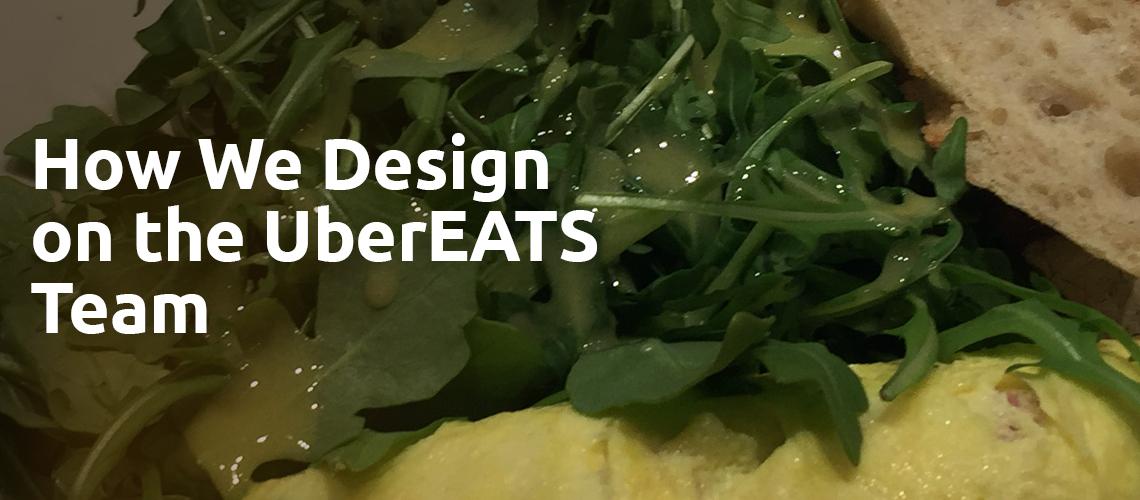
Design Thinking Examples: Five Real Stories
min to read
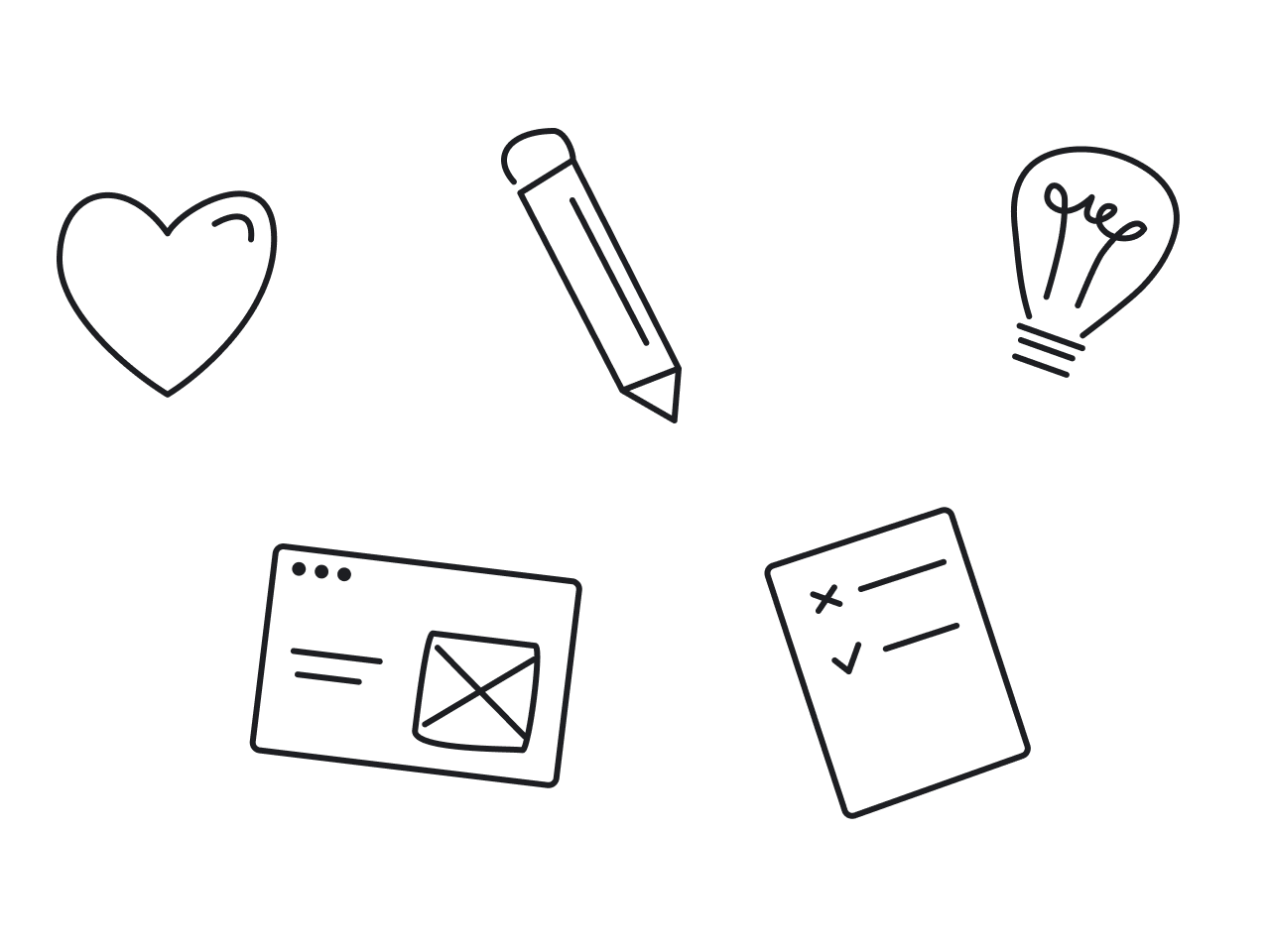
No other area of design requires such deep immersion in the client's world as UI/UX design. To create a user-friendly and practical product, it is necessary to understand the customers’ pains, needs, and expectations. This is what design thinking is all about.
Design thinking is a unique client-centered approach that helps businesses create innovative ideas using a human point of view instead of raw historical data. For example, our recent client, HandPrinter, based their project on a goal that is very important - to encourage people to protect the environment - which helped them become a company with an inimitable vision and no analogs around the globe. Interested in how they did it? Please, read further in our case study .
With the help of design thinking, you can help your clients solve their problems and create benefits for your business. Of course, in theory, using this approach seems just a piece of cake. But what about real life? I guess you are wondering if it is possible to efficiently apply design thinking in your business.
In this article, we will discuss five design thinking examples of real companies that actively use this approach as a part of their corporate strategy. So, get ready for your dose of inspiration!
Examples of companies that use design thinking
To show how resulting the design thinking can be we won't have to dig through the whole internet. What's more, I bet that you have not only heard about companies we're going to talk about but even use their products regularly!
Anyways, without further ado, let's analyze some cases when companies revolutionized the market using design thinking.

The first obvious choice to illustrate design thinking in action is Airbnb. Its founders, designers Brian Chesky and Joe Gebbia, studied together at the university and then rented an apartment in San Francisco. In 2007, a design conference took place, and hotel room prices skyrocketed. To make attending the conference more affordable for their colleagues, the two bought some air mattresses and created airbedandbreakfast.com to find guests.
It worked well enough, so Chesky and Gebbia wanted to continue developing the idea. As designers, they were familiar with the empathy method and used it to answer the following questions: "What do people do when they are traveling? How can they learn how to get from the airport to their lodging quickly? How can one recommend their favorite place to eat in the neighborhood?"
Answering these questions gave Chesky and Gebbia insights on the direction of further developing the website. The user can now rent an apartment, order breakfast, and communicate with their host to ask them for recommendations or local knowledge. The ability to leave feedback from both sides also allowed for a break in distrust between the host and the guest.

Now, every design team at Airbnb has a leader whose first priority is specifically to represent the customer and their needs.

- Start Small
- Fail Quickly
Netflix used these design thinking principles way back in 2011. It was not afraid to destroy its existing DVD delivery business in the wake of new tech trends, dropped the early streaming attempts once they failed, and grew rapidly thanks to the introduction of Netflix's original content. How did it come to this? In 2001, Netflix founder Reed Hastings spent $10 million a year on streaming technology research ( Forbes ) to better understand the market, the trends, and users.What makes Netflix's human-centered UX design so distinctive? Keep in mind: it goes further than digital design itself. It's all about the user experience from start to finish.
Interactive card design

Netflix's card design is a hallmark of its user interface, offering a visually engaging and intuitive way to browse content. Each card represents a movie or TV show, providing users with key visuals, such as posters or stills, that invite exploration and interaction. This design allows for an organized presentation of vast libraries, making it easier for users to scan and find content that appeals to them. Additionally, the card layout adapts to various screen sizes, ensuring a consistent and accessible user experience across devices.
AI-powered personalized recommendations

The AI-powered recommendations are another cornerstone of Netflix's design. By analyzing a user's viewing history, preferences, and even the time spent on specific titles, Netflix's algorithms curate a bespoke selection of content tailored to each viewer. This system not only enhances user satisfaction by reducing the time spent searching for something to watch but also introduces users to new content they might not have discovered otherwise.
Seamless cross-platform experience
Netflix offers a consistent user experience across various devices and platforms, including smart TVs, gaming consoles, smartphones, and tablets. This consistency ensures that users have a familiar interface, making it easy to switch between devices without relearning the navigation.
Efficient search functionality
The platform's highly optimized search feature allows users to find content by titles, actors, genres, or even specific keywords. This efficiency reduces users' time searching for content, enhancing their overall experience.
Personalized user profiles
Netflix allows the creation of multiple user profiles within a single account, each with its personalized recommendations, watch history, and content preferences. This feature is particularly useful for families or shared accounts, ensuring each user's experience is tailored to their tastes.
Smart download feature
Netflix introduced the 'Smart Downloads' feature for mobile users. This feature automatically downloads the next episode of a series you're watching and deletes the ones you've already watched. This feature is particularly useful for users who watch content on the go, ensuring they can always access their favorite shows without manual management.
High-quality thumbnails
Netflix employs a unique strategy of using multiple, high-quality thumbnails for each title, which change dynamically. This approach is designed to capture the attention of different users based on their interests, making the content more appealing and increasing the likelihood of engagement.

Using design thinking to prioritize the customer has allowed Netflix to become a household name and an essential part of how we consume media.

Uber, with its global footprint spanning over 600 cities across 65 countries and serving more than 75 million users, stands as a testament to the transformative power of design thinking in creating innovative business models. The core of Uber's user experience excellence lies in its deep empathy for users, particularly addressing the universal disdain for waiting. This insight has been pivotal in shaping a service that is not just a ride-hailing app but a seamless part of modern urban mobility.
One of Uber's design thinking triumphs is the minimization of user inaction. Through engaging animations and interactive elements, Uber transforms passive waiting times into periods of engagement and information for its riders. This approach not only entertains but also keeps users informed about the status of their ride, effectively reducing the perceived wait time.
Transparency is another cornerstone of Uber's design strategy. By openly displaying key operational aspects, such as the dynamic calculation of arrival times, Uber fosters trust and appreciation among its users. This transparency ensures that users are not burdened with unnecessary technical details, yet they receive enough information to understand the efforts made to optimize their experience.
Additionally, Uber excels in setting and communicating clear expectations for the ride journey. By detailing each phase of the ride process, from car arrival to destination reach, Uber keeps users informed about their progress towards their goal, enhancing the overall experience and anticipation.

Moreover, Uber's design extends to features like safety protocols, real-time tracking, and easy payment options, which collectively contribute to a user-friendly, reliable, and efficient service. This holistic, user-centric design approach has not only solved practical transportation challenges but has also redefined the very fabric of urban mobility, making Uber an indispensable tool in daily life. Through design thinking, Uber has successfully transformed the concept of getting from point A to point B into an experience that users value and rely upon.

Bridget van Kralingen, senior vice president of IBM Global Business Services, recently told : “There’s no longer any real distinction between business strategy and the design of the user experience” and these words make a big difference.
IBM design has gone through many stages in its development (" good design is good business "), and now the company provides design services and invests $100 million in implementing principles of design thinking in their organization.
In 2014, IBM used design thinking when creating Bluemix (now IBM Cloud), a cloud platform for application development. IBM’s main goal was to help developers in big companies create cloud applications much faster.
Researching their target audience allowed IBM to create an easy-to-use and functional platform that attracted more than 1 000 000 developers.
Here are three main points why all these developers fall in love with Bluemix:
- Choice. Bluemix allows to build a consistent application that can run both on and off premise. It helps to reduce the cost and time developers spend on setting up infrastructure
- Extensive catalog with tools. Bluemix offers almost 150 tools and services that propels you months ahead in development (e.g. Internet of Things for secure data collection, Watson for cognitive computing services, etc.)

Methodology. Using the DevOps tool chain allows to easily scale your projects.
That’s how identifying pains and needs of the target audience allowed IBM create a platform that helps developers quickly build applications.

Intuit is a global platform that helps its customers cope with financial issues (accounting, tax preparation, etc.).
Back in 2006, Scott Cook, the founder of Intuit decided that his accounting software company has to be more innovative. Inspired by an article about design thinking written by Roger Martin, Cook started thinking about how this approach can help to develop and improve his product.
First of all , Intuit’s team identified the problem. Most people hate spreadsheet-based personal finance tracking solutions, and they stop using them as soon as they start. The research of competitors helped to realize that existing solutions are suitable for professional accountants but difficult to use for an average person. Although there is a need for financial planning for individuals or small businesses as well.
The solution was to create an easy-to-use and consistent UX. When Intuit introduced its software to help people control their finances, there were 46 similar products on the market. At the beginning of the journey, they joked that at that moment they had the " 47th mover advantage . "
The basic version of Intuit offered only a third of all available features, but with a great design. Instead of spreadsheets, the program displays familiar images with check receipts on them.

Because of its extremely intuitive design, Intuit immediately became the market leader in personal finance software.

As a result, Intuit has shown software companies that good design is something every industry should care about. You can use empathy to create well-designed software that can both solve business problems and serve people.
Think of people and they will think about you
To make a successful product you need to put user needs at the center of your efforts focusing on designing usable, delightful, and efficient experiences. Design thinking helps you to understand real people’s needs and problems and uncovers ways of improving user experiences.
So, don’t hesitate to make design thinking a part of your company culture. It will promote creating products that deeply resonate with your customers — ultimately driving engagement and growth.
And if you need help in creating products that show how much you care about your customers, come to Eleken for a human-centered UI/UX design .

Learn if card UI design is a good solution for your digital product. Read on to see the best examples and hear pro tips from our designers.

So many books, so little time. We talked to working product designers about their favorites for you to read proven and revised, 100% best UI/UX books.

Essential knowledge on how to benchmark, calculate, and forecast the growth rate — industry studies findings & tips for startups.

Looking for dashboard design inspiration? Check out Eleken’s examples for ideas and learn some tips and best practices.

Afraid of entering the decline stage? Learn to determine this phase in time and use its opportunities to prolong the life of your product.
Fill out the form, and let's chat about how we can help bring your vision to life
Your email has been submitted successfully.
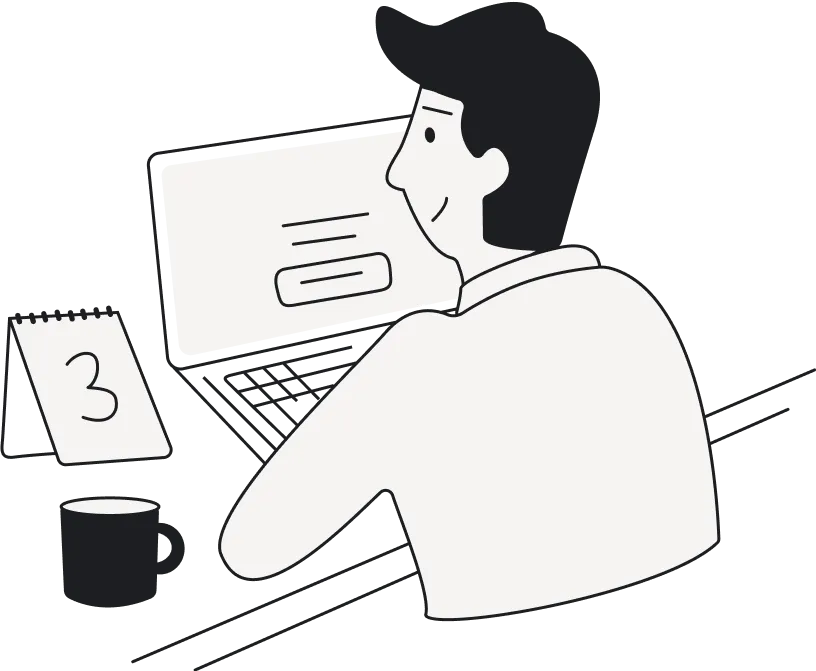
Get weekly updates on the newest design stories, case studies and tips right in your mailbox.
Your email has been submitted successfully. Check your email for first article we’ve sent you.
Browser not supported
This probably isn't the experience you were expecting. Internet Explorer isn't supported on Uber.com. Try switching to a different browser to view our site.
Schedule rides in advance
Introducing Domain-Oriented Microservice Architecture

Introduction
Recently there has been substantial discussion around the downsides of service oriented architectures and microservice architectures in particular. While only a few years ago, many people readily adopted microservice architectures due to the numerous benefits they provide such as flexibility in the form of independent deployments, clear ownership, improvements in system stability, and better separation of concerns, in recent years people have begun to decry microservices for their tendency to greatly increase complexity, sometimes making even trivial features difficult to build.
As Uber has grown to around 2,200 critical microservices, we experienced these tradeoffs first hand. Over the last two years, Uber has attempted to reduce microservice complexity while still maintaining the benefits of a microservice architecture. With this blog post we hope to introduce our generalized approach to microservice architectures, which we refer to as “Domain-Oriented Microservice Architecture” (DOMA).
While it’s been popular in recent years to criticize microservice architectures because of these downsides, few people have advocated an outright rejection of microservice architectures. The operational benefits are too important, and it seems that there are no, or limited, alternatives. Our goal with DOMA is to provide a way forward for organizations that want to reduce overall system complexity while maintaining the flexibility associated with microservice architectures.
This piece explains DOMA, the concerns that led to the adoption of this architecture for Uber, its benefits for platform and product teams, and, finally, some advice for teams who want to adopt this architecture.
What is a microservice?
Microservices are an extension of service oriented architectures. As opposed to the fairly large “services” of the 2000s, microservices are applications that represent a set of narrowly scoped functionality. These applications are hosted and available over the network and expose a well-defined interface. Other applications call this interface by making a “ remote procedure call ” (RPC).
The key characteristic of microservice architecture is the way in which code is hosted, called, and deployed. If we think about large, monolithic applications, they are generally split into encapsulated components with well-defined interfaces. These interfaces would then be called directly in-process as opposed to over the network. In this way, we can start to think of a microservice as a library with a performance hit (network I/O and serialization / deserialization) in order to call any of its functions.
When we think about microservices this way, we might question why we would adopt a microservice architecture at all. The answer is often independent deployments and scaling . With a large, monolithic application, an organization is forced to deploy or release all of their code at once. Each new version of an application can involve numerous changes. Deployments become risky and time consuming. Anyone can bring the whole system down.
In other words, organizations adopt microservices for an operational benefit at the expense of performance . Organizations also must take on the cost to maintain the infrastructure necessary to support microservices. In many situations, it turns out, this trade-off makes a lot of sense, but it is also a strong argument against a premature adoption of a microservice architecture.
Motivations
At Uber, we adopted a microservice architecture because we had (circa 2012-2013) primarily two monolithic services and ran into many of the operational issues that microservices solve.
- Availability Risks. A single regression within a monolithic code base can bring the whole system (in this case, all of Uber) down.
- Risky, expensive deployments. These were painful and time consuming to perform with the frequent need for rollbacks.
- Poor separation of concerns. It was difficult to maintain good separations of concerns with a huge code base. In an exponential growth environment, expediency sometimes led to poor boundaries between logic and components.
- Inefficient execution. These issues combined made it difficult for teams to execute autonomously or independently.
In other words, as Uber grew from 10s to 100s of engineers with multiple teams owning pieces of the tech stack, the monolithic architecture tied the fate of teams together and made it difficult to operate independently.
As a result, we adopted a microservice architecture. Ultimately our systems became more flexible , which allowed teams to be more autonomous.
- System reliability. Overall system reliability goes up in a microservice architecture. A single service can go down (and be rolled back) without taking down the whole system.
- Separation of concerns. Architecturally, microservice architectures force you to ask the question “why does this service exist?” more clearly defining the roles of different components.
- Clear Ownership. It becomes much clearer who owned what code. Services are typically owned at the individual, team, or org level enabling faster growth.
- Autonomous execution. Independent deployments + clearer lines of ownership unlock autonomous execution by various product and platform teams.
- Developer Velocity. Teams can deploy their code independently, which enables them to execute at their own pace.
It’s not an exaggeration to say that Uber would not have been able to accomplish the scale and quality of execution that we maintain today without a microservice architecture.
However, as the company grew even larger, 100s of engineers to 1000s, we began to notice a set of issues associated with greatly increased system complexity . With a microservice architecture one trades a single monolithic code base for black boxes whose functionality can change at any time and easily cause unexpected behavior.
For instance, engineers had to work through around 50 services across 12 different teams in order to investigate the root cause of the problem.
Understanding dependencies between services can become quite difficult, as calls between services can go many layers deep. A latency spike in the nth dependency can cause a cascade of issues upstream. Visibility into what’s actually happening is impossible without the right tools, making debugging difficult.

In order to build a simple feature an engineer often has to work across multiple services, all of which are owned by different individuals and teams. This requires extensive collaboration with time spent on meetings, design, and code review. The earlier promise of clear lines of service ownership is compromised as teams build code within each other’s services, modify each other’s data models, and even perform deployments on behalf of service owners. Networked monoliths can form, where services that appear to be independent all have to be deployed together to safely perform any change.

The result is a slower developer experience, instability for service owners, more painful migrations, etc. For organizations that have already adopted a microservice architecture there is no turning back. It becomes a case of “ can’t live with them, can’t live without them .”
Domain-Oriented Microservice Architecture
If we can think of microservices as I/O bound libraries and a “microservice architecture” as a large, distributed application then we can use well understood architectures to think about how to organize our code.
“Domain-Oriented Microservice Architecture” thus draws heavily from established ways to organize code such as Domain-driven Design , Clean Architecture , Service-Oriented Architecture , and object- and interface-oriented design patterns. We think of DOMA as innovative only insofar as it is a relatively novel way to leverage established design principles in large distributed systems in large organizations.
The core principles and terminology associated with DOMA are as follows:
- Instead of orienting around single microservices, we oriented around collections of related microservices. We call these domains.
- We further create collections of domains which we call layers. The layer that the domain belongs to establishes what dependencies the microservices within that domain are allowed to take on. We call this layer design.
- We provide clean interfaces for domains that we treat as a single point of entry into the collection. We call these gateways.
- Finally, we establish that each domain should be agnostic to other domains, which is to say, a domain shouldn’t have logic related to another domain hard coded inside of its code base or data models. Since frequently teams do need to include logic in another team’s domain (for example, custom validation logic or some meta context on a data model), we provide an extension architecture to support well defined extension points within the domain.
In other words, by providing a systematic architecture, domain gateways, and predefined extension points, DOMA intends to transform microservice architectures from something complex to something comprehensible: a structured set of flexible, reusable, and layered components.
The rest of this post digs into Uber’s implementation of DOMA, the benefits we’ve seen, and practical advice for companies which might want to adopt this approach.
Uber’s Implementation
Uber domains represent a collection of one or more microservices tied to a logical grouping of functionality. A common question in designing a domain is “how big should a domain be?” We give no guidance here. Some domains can include tens of services, some domains only a single service. The important task is to think carefully about the logical role of each collection. For instance, our map search services constitute a domain, fare services are a domain, matching platform (matching riders and drivers) are a domain. These also don’t always follow company org structure. The Uber Maps org itself is split into three domains, with 80 microservices behind 3 different gateways.
Layer Design
Layer design answers the question of “what service can call what other service?” within Uber’s microservice architecture. As a result, we can think of layer design as “separation of concerns at scale.” Alternatively, we can think of layer design as “dependency management at scale.”
Layer design describes a mechanism for thinking about failure blast radius and product specificity across service dependencies at Uber. As domains move from the bottom layer to the top layer, they impact fewer services in the case of an outage and represent more specific product use cases. Conversely, functionality at the bottom layers have more dependents and as a result tend to have a larger blast radius and represent a more general set of business functionality. The figure below illustrates this concept.

One can think of the top layers as specific user experiences (such as mobile features), and the bottom layers as generalized business functionality (such as account management or marketplace trips). Layers only depend on the layers under them, which gives us a useful heuristic to think about questions like blast radius and domain integration.
It’s worth noting that functionality often moves “down” this chart from specific to more general. One can imagine a simple feature that eventually becomes more and more of a platform as requirements evolve. In fact, this sort of migration downward is expected, and many of Uber’s core business platforms started as rider or driver specific functionality that became more generalized as we developed more lines of business and they took on more dependencies (such as Uber Eats or Uber Freight).
Within Uber, we established the following five layers.
- Infrastructure layer. Provides functionality that any engineering organization could use. It’s Uber’s answer to the big engineering questions, such as storage or networking.
- Business layer. Provides functionality that Uber as an organization could use, but that is not specific to a particular product category or line of business (LOB) such as Rides, Eats, or Freight.
- Product layer. Provides functionality that relates to a particular product category or LOB, but is agnostic to the mobile application, such as the “request a ride” logic which is leveraged by multiple Rides facing applications (Rider, Rider “Lite”, m.uber.com, etc).
- Presentation. Provide functionality that directly relates to features that exist within a consumer-facing application (mobile/web).
- Edge Layer. Safely exposes Uber services to the outside world. This layer is also mobile application aware.
As you can see, each subsequent layer represents an increasingly specific grouping of functionality, and has a smaller and smaller blast radius (or, in other words, less components depend on the functionality within that layer).
The term “Gateway API” is already a broadly established concept within microservice architectures. Our definition does not vary greatly from the established definition, except that we tend to think of gateways exclusively as a single entry-point into a collection of underlying services, which we call a domain. The success of a gateway relies on the success of the API design.

Since upstream consumers only operate on a single service, gateways provide numerous benefits in terms of future migrations, discoverability, and overall reduction in system complexity with upstream services only taking a single dependency as opposed to dependencies on several downstream services that might exist within a domain. If we think about gateways in the sense of OO design, they are interface definitions, which enable us to do whatever we want in terms of the underlying “implementation” (in this case the collection of underlying microservices).
Extensions represent a mechanism to extend domains. The basic definition of an extension is that it provides a mechanism for extending the functionality of an underlying service without changing the actual implementation of that service and without impacting its overall reliability. At Uber we provide two different extension models: logic extensions and data extensions . The concept of extensions has allowed us to scale our architecture to multiple teams being able to work independently of each other.
Logic Extensions
Logic extensions provide a mechanism for extending the underlying logic of a service. For logic extensions we use a variation of a provider or plugin pattern with an interface defined on a service-by-service basis. This makes it so that extending teams can implement extension logic in an interface-driven way without modifying the core code of the underlying platform.
For example, a driver goes online. Typically, we make various checks to ensure that a driver is allowed to go online (safety checks, compliance, etc.). Each of these is owned by an individual team. One way to implement this would be to have each team write logic in the same endpoint, but this can introduce complexity. Each check would require custom, and entirely unrelated, logic.
In the case of logic extensions, the “go online” endpoint would define an interface that they expect each extension to conform to with a predefined request type and a response. Each team would register an extension that would be responsible for the execution of this logic. In this case, they might simply take some context about the driver and return a bool, saying if the driver can go online or not. The go online endpoint would simply iterate through these responses, and determine if any of them are false.
This decouples the core code from each extension, and provides isolation between extensions, which don’t know what other logic is executing. It’s easy to build up more functionality around this, such as observability or feature flagging.
Data Extensions
Data extensions provide a mechanism for attaching arbitrary data to an interface to avoid bloat in core platform data models. For data extensions, we leverage Protobuf’s Any functionality so that teams can add arbitrary data to requests. Services will often store this data or pass it to a logic extension so that the core platform is never responsible for deserializing (and thus “knowing about”) this arbitrary context. Protobuf’s Any implementation comes with some infrastructure overhead in exchange for stronger typing. For a simpler implementation, one could just as easily use a JSON string to represent arbitrary data.

Outside of logic and data extensions, many teams at Uber have introduced their own extension patterns that are appropriate for their domain. For example, much of the integrations tied to our presentation architecture uses DAG based task execution logic.
Almost every major domain at Uber has been influenced on some level by DOMA. Over the last year, we have focused primarily on Uber’s business layer which provides generalized logic for each of our various lines of business.
DOMA is still young at Uber, and we are excited to share more data and in-depth examples of our architecture in the future. However, early signs have been extremely positive in terms of a simplified developer experience and a reduction in overall system complexity.
Products & Platforms
DOMA was the result of a consensus effort across product and platform teams at Uber. Platform support costs often dropped an order of magnitude. Product teams benefited from guard rails and accelerated development. For example, an early platform consumer of our extensions architecture was able to drop the time to prioritize and integrate a new feature from three days to three hours by adopting an extension architecture with reduced time for code review, planning, and learning curve for consumers.
Reduced Complexity
Previously product teams would have to call numerous downstream services to leverage a domain; they now have to call just one. By reducing the number of touchpoints to onboard a new feature, platforms were able to reduce onboarding time by 25-50%. Furthermore, we were able to classify 2200 microservices into 70 domains. Roughly 50% of which have been implemented, and most of which have some plan for future adoption.
Future Migrations
At Uber, we calculated that the half-life of a microservice was 1.5 years, which means that every 1.5 years 50% of our microservices churn. Without gateways it’s easy for a microservice architecture to fall into a “migration hell” as a result of this churn. Ever changing microservices constantly require upstream migrations. Gateways enable teams to avoid dependencies on the underlying domain services, which means those services can change without forcing an upstream migration.
Two of Uber’s largest platform rewrites in the last year happened behind gateways. These platforms had hundreds of services that depended on them that would have had to migrate existing consumers. The cost of migration in these cases would have been extremely high, making a complete platform rewrite infeasible.
New Lines of Business & Products
Platforms designed using DOMA have proven to be much more extensible and easier to maintain. Most teams at Uber who adopted DOMA did so because supporting new lines of business had become too expensive.
Practical Advice
This section provides some practical advice for companies that might want to adopt DOMA. The guiding principle here is that in our experience a mature and thoughtful microservice architecture stems from quiet nudges in the right direction at the right time. The reality is that a true “rewrite” is never possible for one’s entire microservice architecture.
As a result, we think of evolving a microservice architecture more like “trimming a hedge” so that it eventually grows correctly, rather than a top-down or one-time architecture (or re-architecture) effort. It’s a dynamic and progressive process.
The driving questions should be “when should we adopt a microservice architecture?” and “does it make sense for our organization?” As we’ve seen above, while microservices provide an operational benefit to organizations with a large number of engineers, this trades off with an increase in complexity that can make features more difficult to build.
In small organizations, the operational benefit likely does not offset the increase in architectural complexity. Furthermore, microservice architectures often require dedicated engineering resources to support which may be out of budget for an early stage company or else suboptimal from a prioritization perspective.
With this in mind, it isn’t unreasonable to hold off on microservices altogether for some time. If an organization does choose to adopt microservices, it should think about the “microservice as large distributed application” analogy, and the separation of concerns between microservices it wants to build. Also, recognize that the first microservices will likely be the most important and longest lasting as they truly describe the core of the business.
Once a company becomes midsized with multiple teams and the clear separation of concerns becomes hazy between different features and platforms, microservice architectures become more obviously useful.
It’s at this stage that one can begin to think about hierarchies between microservices. Dependency management may become more important, as some services begin to become more obviously critical to business operation, and more and more teams rely on them.
Early investment in platformization may pay dividends down the road. There is the possibility to avoid tech debt here if one can create completely product agnostic business platforms and avoid arbitrary product logic in core platform services. It might make sense to adopt extensions at this point to accomplish that goal.
Given that the number of microservices is likely still quite low, it may not make sense to cluster them together. However, it’s worth noting here that a domain in the context of Uber’s DOMA implementation can contain a single service, so it may still be useful to think in a “domain-oriented” way.
Larger engineering organizations may have hundreds of engineers and microservices and several dependencies. At this point DOMA reaches its full usefulness. There will likely be obvious clusters of microservices that can be easily grouped together into domains with a gateway in front of them. Legacy services often begin to need to be refactored or rewritten and then migrated, which means that gateways will soon begin to provide value in terms of ease of migration if they are already in place.
Clear hierarchy will also become increasingly important with some services operating as “product” services for particular features or grouping of features, and other services will increasingly support multiple products and be thought of as “platforms.” It’s critical at this stage to keep arbitrary product logic decoupled from platforms, so as to avoid a heavy operational burden on platform teams as well as system-wide instability.
Final Thoughts
We are still actively evolving DOMA as more and more teams at Uber come to adopt it. The critical insight of DOMA is that a microservice architecture is really just one, large, distributed program and you can apply the same principles to its evolution that you would apply to any piece of software. DOMA is simply an approach for thinking about these principles in practice. We hope others find it useful and we look forward to feedback!
DOMA itself was the result of a cross-functional effort, which involved nearly 60 engineers across every org at Uber. Some particular acknowledgements, for people who invested heavily into this effort over the last 2 years…
Alex Zylman, Alexandre Wilhelm, Allen Lu, Ankit Srivastava, Anthony Tran, Anupam Dikshit, Anurag Biyani, Daniel Wolf, Davide D’Agostino, Deepti Chedda, Dmitriy Bryndin, Gaurav Tungatkar, Jacob Greenleaf, Jaikumar Ganesh, Jennie Ngyuen, Joe McCabe, Joshua Shinavier, Julia Law, Kusha Kapoor, Linda Fu, Madan Thangavelu, Nimish Sheth, Parth Shah, Shawn Burke, Simon Newton, Steve Sherwood, Uday Kiran Medisetty, and Waleed Kadous
Acknowledgements:
This work brings multiple existing design patterns in the industry to solve problems at Uber while also suggesting new patterns like extensions. We are thankful to the industry for the work on them. We are also thankful to the engineers at Linkedin who worked on Superblocks , who spoke to us about their experiences.

Adam Gluck is a Sr. Software Engineer II at Uber. He spent his first 3.5 years at Uber fleshing out our Driver Platform team and helping to scale our driver product. More recently, he’s been a part of Uber’s engineering strategy team, focused on high level system architecture and Uber-wide platformization efforts.
Posted by Adam Gluck
Related articles

Upgrading M3DB from v1.1 to v1.5
May 16 / Global

DataK9: Auto-categorizing an exabyte of data at field level through AI/ML
May 9 / Global


From Predictive to Generative – How Michelangelo Accelerates Uber’s AI Journey
May 2 / Global

DragonCrawl: Generative AI for High-Quality Mobile Testing
April 23 / Global

Ensuring Precision and Integrity: A Deep Dive into Uber’s Accounting Data Testing Strategies
April 18 / Global
Most popular

Network IDS Ruleset Management with Aristotle v2

SweetTree Home Care Services simplifies client and staff transportation with Uber Health

Load Balancing: Handling Heterogeneous Hardware
Resources for driving and delivering with Uber
Experiences and information for people on the move
Ordering meals for delivery is just the beginning with Uber Eats
Putting stores within reach of a world of customers
Transforming the way companies move and feed their people
Taking shipping logistics in a new direction
Moving care forward together with medical providers
Expanding the reach of public transportation
Explore how Uber employees from around the globe are helping us drive the world forward at work and beyond
Engineering
The technology behind Uber Engineering
Community support
Doing the right thing for cities and communities globally
Uber news and updates in your country
Product, how-to, and policy content—and more
Sign up to drive
Sign up to ride.
New Case Study
One simple way Apple could improve your sleep habits

Case studies

Apple sleep notification

How to avoid (and repair) these 3 critical design blunders
Design Blunders

Social Proof: Why people's behaviors affect our actions
Social Proof

Adobe: The growing issue with “Free” trials UX
Adobe Trial UX

Letterboxd: How to nail product market fit with clear Jobs‑To‑Be‑Done
Jobs-To-Be-Done

Spotify Wrapped: 6 psychology principles that make it go viral every year
Spotify Wrapped

The psychology of Temu’s casino‑like shopping UX
Temu Onboarding

GoDaddy: How to improve checkout flows ethically
GoDaddy Checkout UX

Framing Effect: Why context affects decisions
Framing effect

The psychology behind highly effective landing pages
Landing page conversion

Apple vs Meta Threads: The Illusion of Privacy
Apple privacy policy

Beehiiv subscription: 5 small UX mistakes that make a BIG difference
Newsletter subscription

The Search War: Bing AI Chat vs. Google

The Psychology Behind Loom's Explosive Growth
Loom onboarding

Episode 1: Can Bing's new AI search challenge Google?
Bing onboarding

Typeform: How to offboard users the right way
Typeform offboarding

How to increase signup confirmation rates with Sniper Links
Email confirmation UX

Labor Perception Bias: Why faster isn't always better
Labor perception bias

Tech ethics: If cookie consent prompts were honest…
Cookie consent

Amber Alert Redesign: 5 UX Improvements That Could Save Lives
Amber alerts UX

Google: How to increase feature adoption the right way
Google feature adoption

How Linkedin Increased Notification Opt-in Rates by 500%
Linkedin notifications

The Psychology of Advertising: Why this ad made me stop scrolling
Advertising psychology

The Ugly Truth About Net Promoter Score Surveys
Net promoter surveys

The Psychology Behind Amazon's Purchase Experience
Amazon purchase UX

One Simple Psychology Framework To Improve Your Onboarding
Blinkist onboarding

How Blinkist Increased Trial Conversions by 23% (Ethically)
Trial paywall optimization

YouTube’s Attempt To Solve The Paradox of Choice
Youtube retention

Adobe: The Psychology of User Offboarding
Adobe offboarding

Signal: How To Ethically Boost Your Revenues
Signal monetization

Chrome vs Brave: How To Use Ethical Design To Win Customers
Brave onboarding

The Psychology of Clubhouse’s User Retention (...and churn)
Clubhouse retention

The Scary Future Of Instagram
Instagram monetization

The Psychology of Misinformation on Facebook
Facebook misinformation

The Psychology Behind TikTok's Addictive Feed
Tiktok feed psychology

How To Properly Apply Jobs-To-Be-Done To User Onboarding
Headspace onboarding

How To Notify Users Without Being Spammy
Lifecycle emails

User Onboarding: Is HEY Email Worth It?
Hey onboarding

7 Product Team Pitfalls You Should Avoid
Product team pitfalls

How Tinder Converts 8% Of Singles Into Customers In Less Than 15min.
Tinder monetization

Coronavirus Dashboard UX: How Design Impacts Your Perception
COVID dashboard UX

How Morning Brew Grew To 1.5 Million Subs In 5 Years
Morning Brew retention

Uber Eats: How To Ethically Use Scarcity To Increase Sales
Uber Eats retention

Airbnb: How To Reduce Churn With Personalization
Airbnb personalization

6 Ways Mario Kart Tour Triggers You Into Gambling Your Money
Mario Kart monetization

Strava: 7 Strategies To Convert More Freemium Users
Strava monetization

Tesla: How To Grow Through Word-of-Mouth
Tesla charging UX

How Hopper Perfectly Nails Permission Requests UX
Hopper onboarding

9 Ways To Boost SaaS Revenues With A Better Upgrade UX
Zapier monetization

Superhuman's Secret 1-on-1 Onboarding Revealed
Superhuman onboarding

Trello User Onboarding: 7 Tactics To Inspire You
Trello onboarding

5 Deadly Onboarding Mistakes You Should Avoid
Sleepzy onboarding

Duolingo's User Retention: 8 Tactics Tested On 300 Million Users
Duolingo retention

Calm Referral Strategy: Drive Viral Growth With Simple Rewards
Calm referrals

Spotify vs Apple: How Spotify is betting $230M on podcasts to win over Apple users (Ep. 2)
Spotify onboarding

Spotify vs Apple: How Spotify is betting $230M on podcasts to win over Apple users (Ep. 1)
Spotify vs Apple
Website Of The Day 2018 Sep 28
Uber 2018 rebrand case study.

ABOUT: We worked with Uber on the design and development of a case study page to show off their rebrand.
TAGS: animated , responsive , SVG
CATEGORY: web design/dev
Public Awards
- UI Design 8.56 20 /20V
- UX Design 8.33 20 /20V
- Innovation 7.93 20 /20V
Final Judge's Score

Fabio Ottaviani
Creative web developer.

Dmitro Petrenko
Product designer.

Nana Zhvania
Ux / ui designer.

Riccardo Marconato
Senior digital designer.

Yaroslav Zubko
- Q. How does the voting system work? CSSDA uses two judging systems. The first is for WOTD (Website of the Day) and is determined by the scores from the judging panel. To be considered, sites must receive an average score above 8.20 (this varies depending on quality of the sites submitted). Sites, except WOTDs, that receive above 6 receive Special Kudos. The second system is for the public vote awards and the categories include UI Design, UX Design and Innovation. Winners are determined by votes from both the public and the scores from the judges. To win, sites must receive 20 votes in one or all categories and the total average score from the judges must be above 6.
- Q. What do you mean by UI, UX and Innovation? UI refers to the User Interface design such as aesthetics and effects. UX refers to User Experience and functionality. Innovation refers to the use of new development and design ideas.
- Q. Can a site win all four awards including UI, UX, Innovation & WOTD? Yes, sites that score highly in all categories have the chance to win both the public awards and the judge's WOTD award.
- Q. Is there a time limit for judging and scoring? A time limit of 96 hours pertains to WOTD. Outstanding sites can win both WOTD and the public awards prior to this time if enough votes are received for UI, UX and/or Innovation and the judges' scores are high enough.
- Q. Are the scores updated in real-time? Yes. Revisiting the detail pages of nominees during the 96 hour time limit will display updated scores and votes.
- Q. Can the public vote without a login account? Yes. Public votes do not require a login account. Please note that a maximum of 1 vote per site applies for each of the UI, UX and Innovation awards giving a total of 3 public votes per site. A combination of IP tracking and human moderators may be used to help deter click-fraud.

Gleb Kuznetsov
Head of product design and visual.

Coraline Colasse
Art director and digital designer.

Pavel Kosov
Product and visual designer.

Thiago Campos
Art and design director.

Frank van Oudhuizen
Art director & co-founder.

Louis Saville

Tolik Nguyen
Founder / design director.

Jens Nielsen

Account Director & Co-Founder

Paola Bisogno
Ux/ui designer.

Francesco Carli
Creative & art director.

Thierry Chopain
Senior art director.

Diego Tramontin

Daniel Polevoy

Fabio Pistoia
Art director.

Viacheslav Olianishyn

Denis Avramenko
Art director & founder.

Nikolay Likomanov
Creative front-end developer.

David Guillemin
Ceo & creative technologist.

Quentin Hocdé
Creative developer.

Aleksandr Motin
Creative director & co-founder.

Riccardo Ricci
Ui/ux designer.

Shogo Tabuchi
Art director & front-end developer.

Alee Foroughi
Senior product designer.

Andrea Puccini
Art director + visual designer.

Andrew Gargay
Founder & creative director.

Founder / Art Director

Daniel Spatzek
Freelance designer & art director.

Roberto Gonzalez

Kamil Czujowski
User experience engineer.

Filippo Vezzali
Founder and creative director.

Miguel Trias
Snr digital creative manager.

Maree Frakes
Project manager and agile coach.

Alessandro Bigi
Art director & designer.

Giuseppe Ciullo
Web developer.

Makoto Hirao

Michi Del Rosso
Co-founder and creative director.

Piotr Swierkowski
Owner / art director.

Robin Delaporte

Gianluca Procaccini
Creative director & visual designer.

Antony Paquay

Edoardo Benedetto
Ux/ui/interaction designer.

Fabio Carretti

Romain Prache
Technical director.

Francesco Michelini

Andrea Campesato Segnini

Digital Designer

Giovanna Oliva
Art director & visual designer.

Matteo Baratin
Senior digital product designer.

Vladimir Lukashov
Creative front-end developer.

Roberto Campara
Digital ad & ui/ux designer.

Paolo Manenti
Creative director.

Alexander Zhestkov
Art director & partner.
About Stanford GSB
- The Leadership
- Dean’s Updates
- School News & History
- Commencement
- Business, Government & Society
- Centers & Institutes
- Center for Entrepreneurial Studies
- Center for Social Innovation
- Stanford Seed
About the Experience
- Learning at Stanford GSB
- Experiential Learning
- Guest Speakers
- Entrepreneurship
- Social Innovation
- Communication
- Life at Stanford GSB
- Collaborative Environment
- Activities & Organizations
- Student Services
- Housing Options
- International Students
Full-Time Degree Programs
- Why Stanford MBA
- Academic Experience
- Financial Aid
- Why Stanford MSx
- Research Fellows Program
- See All Programs
Non-Degree & Certificate Programs
- Executive Education
- Stanford Executive Program
- Programs for Organizations
- The Difference
- Online Programs
- Stanford LEAD
- Seed Transformation Program
- Aspire Program
- Seed Spark Program
- Faculty Profiles
- Academic Areas
- Awards & Honors
- Conferences
Faculty Research
- Publications
- Working Papers
- Case Studies
Research Hub
- Research Labs & Initiatives
- Business Library
- Data, Analytics & Research Computing
- Behavioral Lab
Research Labs
- Cities, Housing & Society Lab
- Golub Capital Social Impact Lab
Research Initiatives
- Corporate Governance Research Initiative
- Corporations and Society Initiative
- Policy and Innovation Initiative
- Rapid Decarbonization Initiative
- Stanford Latino Entrepreneurship Initiative
- Value Chain Innovation Initiative
- Venture Capital Initiative
- Career & Success
- Climate & Sustainability
- Corporate Governance
- Culture & Society
- Finance & Investing
- Government & Politics
- Leadership & Management
- Markets & Trade
- Operations & Logistics
- Opportunity & Access
- Organizational Behavior
- Political Economy
- Social Impact
- Technology & AI
- Opinion & Analysis
- Email Newsletter
Welcome, Alumni
- Communities
- Digital Communities & Tools
- Regional Chapters
- Women’s Programs
- Identity Chapters
- Find Your Reunion
- Career Resources
- Job Search Resources
- Career & Life Transitions
- Programs & Services
- Career Video Library
- Alumni Education
- Research Resources
- Volunteering
- Alumni News
- Class Notes
- Alumni Voices
- Contact Alumni Relations
- Upcoming Events
Admission Events & Information Sessions
- MBA Program
- MSx Program
- PhD Program
- Alumni Events
- All Other Events
- Operations, Information & Technology
- Classical Liberalism
- The Eddie Lunch
- Accounting Summer Camp
- Videos, Code & Data
- California Econometrics Conference
- California Quantitative Marketing PhD Conference
- California School Conference
- China India Insights Conference
- Homo economicus, Evolving
- Political Economics (2023–24)
- Scaling Geologic Storage of CO2 (2023–24)
- A Resilient Pacific: Building Connections, Envisioning Solutions
- Adaptation and Innovation
- Changing Climate
- Civil Society
- Climate Impact Summit
- Climate Science
- Corporate Carbon Disclosures
- Earth’s Seafloor
- Environmental Justice
- Operations and Information Technology
- Organizations
- Sustainability Reporting and Control
- Taking the Pulse of the Planet
- Urban Infrastructure
- Watershed Restoration
- Junior Faculty Workshop on Financial Regulation and Banking
- Ken Singleton Celebration
- Marketing Camp
- Quantitative Marketing PhD Alumni Conference
- Presentations
- Theory and Inference in Accounting Research
- Stanford Closer Look Series
- Quick Guides
- Core Concepts
- Journal Articles
- Glossary of Terms
- Faculty & Staff
- Researchers & Students
- Research Approach
- Charitable Giving
- Financial Health
- Government Services
- Workers & Careers
- Short Course
- Adaptive & Iterative Experimentation
- Incentive Design
- Social Sciences & Behavioral Nudges
- Bandit Experiment Application
- Conferences & Events
- Get Involved
- Reading Materials
- Teaching & Curriculum
- Energy Entrepreneurship
- Faculty & Affiliates
- SOLE Report
- Responsible Supply Chains
- Current Study Usage
- Pre-Registration Information
- Participate in a Study
Uber in 2024: From Industry Disruption to Creating Value For All Stakeholders
Dara Khosrowshahi became the CEO of Uber in August 2017, following internal turbulence and serious headwinds related to the company’s governance and reputation. Five short years later, Uber was clearly back on course, building on the success of its technology platform to reach 150 million monthly active platform users—and a market cap of $125 billion by the end of 2023.
This case study traces the remarkable transformation of Uber from its early innovation as a ride-hailing pioneer in a handful of cities, to the global expansion of Uber mobility services that required close attention to local operational and regulatory practices, to solving the complex technical challenges to drive Uber’s food delivery services forward. Interviews with Uber leadership reveals the strategic approach to work on the engineering, data science, product management, and product design challenges involved in building and maintaining a customer-friendly app and create an optimized user experience—and scale this on a global basis while factoring in local conditions and practices.
Key to this success was a culture reboot within Uber, and a renewed focus on collaboration and value creation for all stakeholders. The company that had found its initial footing by disrupting and transforming the taxi industry, more than a decade earlier, now faced a future where artificial intelligence and autonomous vehicles would likely disrupt the mobility sector once again—but Uber was preparing intensively for what the future might bring.
Learning Objective

- Priorities for the GSB's Future
- See the Current DEI Report
- Supporting Data
- Research & Insights
- Share Your Thoughts
- Search Fund Primer
- Affiliated Faculty
- Faculty Advisors
- Louis W. Foster Resource Center
- Defining Social Innovation
- Impact Compass
- Global Health Innovation Insights
- Faculty Affiliates
- Student Awards & Certificates
- Changemakers
- Dean Jonathan Levin
- Dean Garth Saloner
- Dean Robert Joss
- Dean Michael Spence
- Dean Robert Jaedicke
- Dean Rene McPherson
- Dean Arjay Miller
- Dean Ernest Arbuckle
- Dean Jacob Hugh Jackson
- Dean Willard Hotchkiss
- Faculty in Memoriam
- Stanford GSB Firsts
- Certificate & Award Recipients
- Teaching Approach
- Analysis and Measurement of Impact
- The Corporate Entrepreneur: Startup in a Grown-Up Enterprise
- Data-Driven Impact
- Designing Experiments for Impact
- Digital Business Transformation
- The Founder’s Right Hand
- Marketing for Measurable Change
- Product Management
- Public Policy Lab: Financial Challenges Facing US Cities
- Public Policy Lab: Homelessness in California
- Lab Features
- Curricular Integration
- View From The Top
- Formation of New Ventures
- Managing Growing Enterprises
- Startup Garage
- Explore Beyond the Classroom
- Stanford Venture Studio
- Summer Program
- Workshops & Events
- The Five Lenses of Entrepreneurship
- Leadership Labs
- Executive Challenge
- Arbuckle Leadership Fellows Program
- Selection Process
- Training Schedule
- Time Commitment
- Learning Expectations
- Post-Training Opportunities
- Who Should Apply
- Introductory T-Groups
- Leadership for Society Program
- Certificate
- 2023 Awardees
- 2022 Awardees
- 2021 Awardees
- 2020 Awardees
- 2019 Awardees
- 2018 Awardees
- Social Management Immersion Fund
- Stanford Impact Founder Fellowships and Prizes
- Stanford Impact Leader Prizes
- Social Entrepreneurship
- Stanford GSB Impact Fund
- Economic Development
- Energy & Environment
- Stanford GSB Residences
- Environmental Leadership
- Stanford GSB Artwork
- A Closer Look
- California & the Bay Area
- Voices of Stanford GSB
- Business & Beneficial Technology
- Business & Sustainability
- Business & Free Markets
- Business, Government, and Society Forum
- Second Year
- Global Experiences
- JD/MBA Joint Degree
- MA Education/MBA Joint Degree
- MD/MBA Dual Degree
- MPP/MBA Joint Degree
- MS Computer Science/MBA Joint Degree
- MS Electrical Engineering/MBA Joint Degree
- MS Environment and Resources (E-IPER)/MBA Joint Degree
- Academic Calendar
- Clubs & Activities
- LGBTQ+ Students
- Military Veterans
- Minorities & People of Color
- Partners & Families
- Students with Disabilities
- Student Support
- Residential Life
- Student Voices
- MBA Alumni Voices
- A Week in the Life
- Career Support
- Employment Outcomes
- Cost of Attendance
- Knight-Hennessy Scholars Program
- Yellow Ribbon Program
- BOLD Fellows Fund
- Application Process
- Loan Forgiveness
- Contact the Financial Aid Office
- Evaluation Criteria
- GMAT & GRE
- English Language Proficiency
- Personal Information, Activities & Awards
- Professional Experience
- Letters of Recommendation
- Optional Short Answer Questions
- Application Fee
- Reapplication
- Deferred Enrollment
- Joint & Dual Degrees
- Entering Class Profile
- Event Schedule
- Ambassadors
- New & Noteworthy
- Ask a Question
- See Why Stanford MSx
- Is MSx Right for You?
- MSx Stories
- Leadership Development
- Career Advancement
- Career Change
- How You Will Learn
- Admission Events
- Personal Information
- Information for Recommenders
- GMAT, GRE & EA
- English Proficiency Tests
- After You’re Admitted
- Daycare, Schools & Camps
- U.S. Citizens and Permanent Residents
- Requirements
- Requirements: Behavioral
- Requirements: Quantitative
- Requirements: Macro
- Requirements: Micro
- Annual Evaluations
- Field Examination
- Research Activities
- Research Papers
- Dissertation
- Oral Examination
- Current Students
- Education & CV
- International Applicants
- Statement of Purpose
- Reapplicants
- Application Fee Waiver
- Deadline & Decisions
- Job Market Candidates
- Academic Placements
- Stay in Touch
- Faculty Mentors
- Current Fellows
- Standard Track
- Fellowship & Benefits
- Group Enrollment
- Program Formats
- Developing a Program
- Diversity & Inclusion
- Strategic Transformation
- Program Experience
- Contact Client Services
- Campus Experience
- Live Online Experience
- Silicon Valley & Bay Area
- Digital Credentials
- Faculty Spotlights
- Participant Spotlights
- Eligibility
- International Participants
- Stanford Ignite
- Frequently Asked Questions
- Founding Donors
- Location Information
- Participant Profile
- Network Membership
- Program Impact
- Collaborators
- Entrepreneur Profiles
- Company Spotlights
- Seed Transformation Network
- Responsibilities
- Current Coaches
- How to Apply
- Meet the Consultants
- Meet the Interns
- Intern Profiles
- Collaborate
- Research Library
- News & Insights
- Program Contacts
- Databases & Datasets
- Research Guides
- Consultations
- Research Workshops
- Career Research
- Research Data Services
- Course Reserves
- Course Research Guides
- Material Loan Periods
- Fines & Other Charges
- Document Delivery
- Interlibrary Loan
- Equipment Checkout
- Print & Scan
- MBA & MSx Students
- PhD Students
- Other Stanford Students
- Faculty Assistants
- Research Assistants
- Stanford GSB Alumni
- Telling Our Story
- Staff Directory
- Site Registration
- Alumni Directory
- Alumni Email
- Privacy Settings & My Profile
- Success Stories
- The Story of Circles
- Support Women’s Circles
- Stanford Women on Boards Initiative
- Alumnae Spotlights
- Insights & Research
- Industry & Professional
- Entrepreneurial Commitment Group
- Recent Alumni
- Half-Century Club
- Fall Reunions
- Spring Reunions
- MBA 25th Reunion
- Half-Century Club Reunion
- Faculty Lectures
- Ernest C. Arbuckle Award
- Alison Elliott Exceptional Achievement Award
- ENCORE Award
- Excellence in Leadership Award
- John W. Gardner Volunteer Leadership Award
- Robert K. Jaedicke Faculty Award
- Jack McDonald Military Service Appreciation Award
- Jerry I. Porras Latino Leadership Award
- Tapestry Award
- Student & Alumni Events
- Executive Recruiters
- Interviewing
- Land the Perfect Job with LinkedIn
- Negotiating
- Elevator Pitch
- Email Best Practices
- Resumes & Cover Letters
- Self-Assessment
- Whitney Birdwell Ball
- Margaret Brooks
- Bryn Panee Burkhart
- Margaret Chan
- Ricki Frankel
- Peter Gandolfo
- Cindy W. Greig
- Natalie Guillen
- Carly Janson
- Sloan Klein
- Sherri Appel Lassila
- Stuart Meyer
- Tanisha Parrish
- Virginia Roberson
- Philippe Taieb
- Michael Takagawa
- Terra Winston
- Johanna Wise
- Debbie Wolter
- Rebecca Zucker
- Complimentary Coaching
- Changing Careers
- Work-Life Integration
- Career Breaks
- Flexible Work
- Encore Careers
- Join a Board
- D&B Hoovers
- Data Axle (ReferenceUSA)
- EBSCO Business Source
- Global Newsstream
- Market Share Reporter
- ProQuest One Business
- Student Clubs
- Entrepreneurial Students
- Stanford GSB Trust
- Alumni Community
- How to Volunteer
- Springboard Sessions
- Consulting Projects
- 2020 – 2029
- 2010 – 2019
- 2000 – 2009
- 1990 – 1999
- 1980 – 1989
- 1970 – 1979
- 1960 – 1969
- 1950 – 1959
- 1940 – 1949
- Service Areas
- ACT History
- ACT Awards Celebration
- ACT Governance Structure
- Building Leadership for ACT
- Individual Leadership Positions
- Leadership Role Overview
- Purpose of the ACT Management Board
- Contact ACT
- Business & Nonprofit Communities
- Reunion Volunteers
- Ways to Give
- Fiscal Year Report
- Business School Fund Leadership Council
- Planned Giving Options
- Planned Giving Benefits
- Planned Gifts and Reunions
- Legacy Partners
- Giving News & Stories
- Giving Deadlines
- Development Staff
- Submit Class Notes
- Class Secretaries
- Board of Directors
- Health Care
- Sustainability
- Class Takeaways
- All Else Equal: Making Better Decisions
- If/Then: Business, Leadership, Society
- Grit & Growth
- Think Fast, Talk Smart
- Spring 2022
- Spring 2021
- Autumn 2020
- Summer 2020
- Winter 2020
- In the Media
- For Journalists
- DCI Fellows
- Other Auditors
- Academic Calendar & Deadlines
- Course Materials
- Entrepreneurial Resources
- Campus Drive Grove
- Campus Drive Lawn
- CEMEX Auditorium
- King Community Court
- Seawell Family Boardroom
- Stanford GSB Bowl
- Stanford Investors Common
- Town Square
- Vidalakis Courtyard
- Vidalakis Dining Hall
- Catering Services
- Policies & Guidelines
- Reservations
- Contact Faculty Recruiting
- Lecturer Positions
- Postdoctoral Positions
- Accommodations
- CMC-Managed Interviews
- Recruiter-Managed Interviews
- Virtual Interviews
- Campus & Virtual
- Search for Candidates
- Think Globally
- Recruiting Calendar
- Recruiting Policies
- Full-Time Employment
- Summer Employment
- Entrepreneurial Summer Program
- Global Management Immersion Experience
- Social-Purpose Summer Internships
- Process Overview
- Project Types
- Client Eligibility Criteria
- Client Screening
- ACT Leadership
- Social Innovation & Nonprofit Management Resources
- Develop Your Organization’s Talent
- Centers & Initiatives
- Student Fellowships

Massachusetts takes Uber, Lyft to trial over whether drivers are employees
By Nate Raymond
BOSTON (Reuters) -Massachusetts' attorney general took Uber Technologies and Lyft to trial on Monday over allegations that the ride-share companies are misclassifying thousands of drivers in the state as independent contractors to avoid treating them as more costly employees.
The non-jury trial in Boston comes amid broader legal and political battles in the Democratic-led state and elsewhere nationally over the status of drivers for app-based companies whose services fuel the U.S. gig worker economy.
Massachusetts Attorney General Andrea Joy Campbell, a Democrat, is asking a judge to conclude that drivers for Uber and Lyft are employees under state law and therefore entitled to benefits such as a minimum wage, overtime and earned sick time.
Studies have shown that using contractors can cost companies as much as 30% less than employees.
Assistant Attorney General Douglas Martland in his opening statement said the companies' algorithms, pricing policies and operating standards gave them a level of control over their drivers that belied any claim that they work independently.
He said the drivers are given little time to decide whether to accept a ride request from a user -- just 15 seconds -- and are never told up front how much riders will be paying them and the companies before letting them in their vehicles.
"What entrepreneur would do that?" Martland asked Suffolk County Superior Court Judge Peter Krupp, who will decide the case.
Lawyers for the companies argued the state misunderstood their businesses, saying the main employees on their payrolls were data scientists and others who fine-tune the apps they provide that connect independent drivers with potential riders.
"Lyft works for drivers, not the other way around," said Felicia Ellsworth, Lyft's lawyer.
Uber counsel Michele Maryott argued that drivers value the flexibility of being able to drive when they want, allowing them to tailor their work around children, other jobs and appointments and provide services only part time.
"The flexibility is critical for them," she said. "These drivers don't need to show up at all, much less at a specific time, like employees do."
She and Ellsworth warned that a ruling requiring the companies to treat the state's 55,000 Uber drivers and 35,000 Lyft drivers as employees could force them to cut or halt operations in Massachusetts.
The case went to trial a week after Massachusetts' highest court heard arguments over whether to allow an industry-backed ballot measure to go before voters in November that defines the drivers as contractors but entitles them to some new benefits.
The court appeared open to allowing some version of that proposal to go on the ballot along with a rival, labor-backed ballot measure that seeks to allow the drivers to unionize.
The lawsuit at issue in Monday's trial was filed in 2020 by Campbell's predecessor, Maura Healey, now the state's Democratic governor. Should the state prevail, it has said the companies could face large penalties for not properly classifying their drivers.
Should Uber and Lyft lose the trial but succeed at the ballot box, Campbell's office has said the ballot measure would only govern the companies' conduct moving forward and that they could face large penalties for past misclassification.
By not classifying their Massachusetts drivers as employees, Uber and Lyft avoided paying $266.4 million into workers' compensation, unemployment insurance and paid family medical leave over 10 years, according to a report by the state auditor.
(Reporting by Nate Raymond in Boston; Editing by Josie Kao, Alexia Garamfalvi and Bill Berkrot)

share this!
May 16, 2024
This article has been reviewed according to Science X's editorial process and policies . Editors have highlighted the following attributes while ensuring the content's credibility:
fact-checked
trusted source
Case study examines new product development in the fast fashion industry
by David Bradley, Inderscience

In the world of fast fashion, new product development (NPD) is the main option for companies hoping to maintain relevance and competitiveness in an ever-changing market. NPD is a multifaceted process and covers the generation of ideas, design and implementation of those ideas, prototype and product testing, and eventual launch of a new product on to the market with the aim of capitalizing on emerging market opportunities and addressing consumer needs.
According to an article written by Duong Quang Hao, Ngoc-Hien Do, and Duc Duy Nguyen of Ho Chi Minh City University of Technology in Vietnam published in the International Journal of Services and Operations Management , NPD is a complex process and demands a lot of company resources. This is particularly true in industries marked by rapid shifts in consumer preferences and short product lifecycles, such as fashion.
However, an alternative approach to NPD has emerged that puts the focus on strategic integration of competitor analysis and customer feedback. This can allow a company to streamline the development processes and improve its competitiveness, especially in the world of start-up ventures.
A useful tool on this overall streamlining process is the competitor profile matrix (CPM) method. This allows companies to identify and analyze their main competitors. They can dissect their best-selling products to work out what are the important customer preferences at a given time. This initial step in the new NPD process gives them a template for understanding the changing market and allows them to stitch together their own product ideas.
Once ideas are sewn up, the wily company might then engage directly with its target customer base to gain feedback and gauge preferences. By opting for a customer-centric approach, they can ensure that their new product features and functionalities are going to be welcomed by the market. This will then mitigate the risk of pushing products that end up hemmed in by more competitive offerings and so remain on the fringes of the fashion patchwork rather than becoming the chic pieces everyone wants to be seen to wear.
While the approach is tailored for start-ups in the fast fashion sector, a similar iterative methodology might also be used across other industries. The strategic integration of competitor analysis and customer feedback into the NPD process offers a pragmatic approach to the modern marketplace.
Provided by Inderscience
Explore further
Feedback to editors

Genes provide hope for the survival of Arabia's last big cat
6 hours ago

Biologists travel with their mobile laboratory to study a wide range of mitochondrial functions in avian migration
7 hours ago

Increasing drought puts the resilience of the Amazon rainforest to the test
8 hours ago

Legacy of Indigenous stewardship of camas dates back more than 3,500 years, study finds

New 3D models reveal how warming climate affects underwater ocean tides

This modified stainless steel could kill bacteria without antibiotics or chemicals

Alaska's rusting waters: Pristine rivers and streams turning orange
9 hours ago

New quantum dot approach can enhance electrical conductivity of solar cells

Genetic drift, not natural selection, identified as main factor driving speciation in endangered pupfish species

How cockroaches spread around the globe to become the pest we know today
Relevant physicsforums posts, cover songs versus the original track, which ones are better.
3 hours ago
Metal, Rock, Instrumental Rock and Fusion
12 hours ago
Today's Fusion Music: T Square, Cassiopeia, Rei & Kanade Sato
May 19, 2024
Bach, Bach, and more Bach please
May 18, 2024
What are your favorite Disco "Classics"?
May 17, 2024
Who is your favorite Jazz musician and what is your favorite song?
More from Art, Music, History, and Linguistics
Related Stories

Machine learning approach sheds new light on hotel customer satisfaction
Apr 3, 2024

How AI is shaping the future of sales strategies
May 13, 2024

Despite the desire to reduce the risk of imitation, research suggests startups should scale slowly and steadily
Apr 16, 2024

Research shows how organizations evaluate whether to imitate or differentiate when a competitor adopts new technology
Apr 19, 2023

How to spot fake online reviews (with a little help from AI)
May 4, 2024

How companies can use generative AI for empathetic customer relationships to create lifetime value
Apr 23, 2024
Recommended for you

Gender gaps remain for many women scientists, study finds
14 hours ago

Ridesourcing platforms thrive on socio-economic inequality, say researchers
Apr 26, 2024

Which countries are more at risk in the global supply chain?
Apr 19, 2024

Study finds world economy already committed to income reduction of 19% due to climate change
Apr 17, 2024

Building footprints could help identify neighborhood sociodemographic traits
Apr 10, 2024

Can the bias in algorithms help us see our own?
Apr 9, 2024
Let us know if there is a problem with our content
Use this form if you have come across a typo, inaccuracy or would like to send an edit request for the content on this page. For general inquiries, please use our contact form . For general feedback, use the public comments section below (please adhere to guidelines ).
Please select the most appropriate category to facilitate processing of your request
Thank you for taking time to provide your feedback to the editors.
Your feedback is important to us. However, we do not guarantee individual replies due to the high volume of messages.
E-mail the story
Your email address is used only to let the recipient know who sent the email. Neither your address nor the recipient's address will be used for any other purpose. The information you enter will appear in your e-mail message and is not retained by Phys.org in any form.
Newsletter sign up
Get weekly and/or daily updates delivered to your inbox. You can unsubscribe at any time and we'll never share your details to third parties.
More information Privacy policy
Donate and enjoy an ad-free experience
We keep our content available to everyone. Consider supporting Science X's mission by getting a premium account.
E-mail newsletter

IMAGES
VIDEO
COMMENTS
Design by accretion. In just five years since 2011, Uber transformed from a black car service for 100 friends in San Francisco to a global transportation network. By 2016, Uber delivered over 3 million rides a day in over 400 cities across 70 countries. The Rider app — designed in 2012, struggled to scale alongside the hyper-growth of the ...
Designing for drivers. Read more…. 3K. 60 responses. Read writing about Case Study in Uber Design. We are passionate about the pursuit of ideas that put people first. Work with us: uber.com ...
UberEATS is on a mission to make eating well effortless for everyone, everywhere. Our service connects customers to Uber-speed delivery from restaurants in over 80 cities around the world. We give ...
Uber is founded in 2009 and completed so far more than 5 billion rides. It's available in more than 80 countries worldwide, and the state that uses it over the most is New York. " Uber's mission is to bring transportation — for everyone, everywhere. Vision: Smarter transportation with fewer cars and greater access.
The design of the Uber logo is meant to convey a sense of simplicity, elegance, and modernity, which reflects the company's focus on providing a seamless and efficient transportation experience. The black and white color scheme also emphasizes this simplicity, and makes the logo easy to read and recognize. New Uber logo was introduced in 2018 ...
Mar 30, 2023. --. The redesign of the Uber app extends the user experience by challenging the Information Architecture and User Interface. In this case study, I explore the redesign of the Uber ...
Uber: A design case study #100daysofdesign A design that reshaped how you move within cities. Uber was founded in 2009 by Garrett Camp and Travis Kalanick, aiming to disrupt the traditional taxi ...
Jan 9, 2021. --. Uber is an American company that offers ride-hailing service through the mobile platform in over 700 cities. Their offers also contain ride-sharing, food delivery, and self-rent electric scooter and bicycles in some areas. Locations and navigations are fundamental functions to the app users, including both driver and rider.
Value creation for Uber. 1. Enhance brand value: Uber can enhance their brand value and be known as a user-centric company by taking actions to resolve pain points of drivers and not just riders. 2. Maintain trust and loyalty: A failure to resolve drivers' issues will cost Uber revenue, today or tomorrow.
About Uber Brand Case Study. A tech startup turned global mobility platform in eight short years deserves a holistic brand system that's instantly recognizable, works around the world, and is efficient to execute. Here's a case study looking at the 2018 Uber rebrand.
Metalab and Uber's design teams partnered to bring product enhancements across Uber's digital ecosystem.
Case Study: An App Redesign for Uber Driver. 1. Introduction. There is no doubt that the user experience of an app is an important factor that directly impacts the business's performance of platforms like Uber. Moreover, the UX plays an even more important role when the customers use the app as the only point of contact to access the services.
February 16, 2023. In this strategy study, we're going to delve into a company that impacted everything from people's everyday lives and entrepreneurial dreams to the startup world and city legislature. Its story and strategy are fascinating, often problematic, and definitely worth exploring. So let's embark on a different kind of Uber ride.
There are many Design Thinking Case Studies on the internet. ... To Uber Eats Design Thinking has been a powerful tool to create higher customer satisfaction. Creating the future of food delivery takes empathy, innovation, and an appetite for complex logistical challenges. Using Design Thinking, UberEATS is on a mission to make eating well ...
Nov 22, 2019. --. Roles: Project Management, User Research, Content Strategy, Visual Design. Team: Sharon Banh, Jenny Wu. Scope: 8 weeks. As adults, many of us have had first-hand experience ...
Airbnb. The first obvious choice to illustrate design thinking in action is Airbnb. Its founders, designers Brian Chesky and Joe Gebbia, studied together at the university and then rented an apartment in San Francisco. In 2007, a design conference took place, and hotel room prices skyrocketed.
Culturally, Uber's objectives always prioritized growth, often at significant costs. Targets were set based on achieving growth and not on cost management. (Regional) power bases: When there are ...
I usually book an 🛺 UberAuto for shorter distances (cheapest and possibly the quickest option available as autos outnumber cabs while also arriving faster). For an average 10 km ride, the price difference between the three popular options provided by Uber India is 🛺UberAuto (₹80), 🚕UberGo (₹140), and 🚘UberPremier (₹169).
Recently there has been substantial discussion around the downsides of service oriented architectures and microservice architectures in particular. While only a few years ago, many people readily adopted microservice architectures due to the numerous benefits they provide such as flexibility in the form of independent deployments, clear ownership, improvements in system stability, and better ...
Superhuman onboarding. Trello onboarding. Sleepzy onboarding. Duolingo retention. Calm referrals. Spotify onboarding. Spotify vs Apple. See exactly how companies like Tinder, Airbnb, Trello, Uber and Tesla design products that people love. One new user experience case study every month.
Uber 2018 Rebrand Case Study. ABOUT: We worked with Uber on the design and development of a case study page to show off their rebrand. TAGS: animated, responsive, SVG. CATEGORY: web design/dev.
This case study traces the remarkable transformation of Uber from its early innovation as a ride-hailing pioneer in a handful of cities, to the global expansion of Uber mobility services that required close attention to local operational and regulatory practices, to solving the complex technical challenges to drive Uber's food delivery ...
Spots — A UX Case Study Finding affordable, safe, and convenient off-campus housing can be a significant challenge for college students, especially those new to a… 12 min read · Dec 18, 2023
To ensure you're making the most of your case studies, we've put together 15 real-life case study examples to inspire you. These examples span a variety of industries and formats. We've also included best practices, design tips and templates to inspire you. Let's dive in!
Uber: Evaluative case study. ... to the problems discovered using the evaluative design thinking process within 48 hours (Trust me, 48 hours can also feel like 48 mins sometimes) ... I had to divide my time wisely, so I started by setting priorities and listing the work for the case study. I split my time into four parts, analyzing situations ...
The case went to trial a week after Massachusetts' highest court heard arguments over whether to allow an industry-backed ballot measure to go before voters in November that defines the drivers as ...
DOI: 10.1504/IJSOM.2024.138601. In the world of fast fashion, new product development (NPD) is the main option for companies hoping to maintain relevance and competitiveness in an ever-changing ...